Poems on Various Subjects, Religious and Moral
By
Phillis Wheatley
Transcription, correction, editorial commentary, and markup by Students and Staff of Marymount University, Students and Staff of The University of
Virginia
occomIn Wheatley's letter to Samson Occom, she affirms
his "Vindication of their [the enslaved] natural Rights." She concludes with an
ellipsis in which she implicitly criticizes the "strange Absurdity" of Christian
slavers. To read the letter in its entirety, visit American Literature I. Samson Occom
(1723-1792), a Native American member of the Mohegan Nation, was an author,
teacher, judge, and Presbyterian minister. The image here, via Wikimedia Commons,
is a mezzotint portrait of the Reverend Occom from 1768. Source: https://en.wikipedia.org/wiki/Samson_Occom
- [MUStudStaff]maecenas
Source: https://en.wikipedia.org/wiki/Samson_Occom
- [MUStudStaff]maecenas Source: Wheatley's 'Attestation to the Public'Maecenas was the wealthy patron of classical
Roman poets Virgil and Horace, whom Wheatley draws on in complex ways.
Wheatley's poem "To Maecenas" opens her collection, which position gives it a
powerful significance as she claims the right to speak within this tradition.
Like Horace's Odes to Maecenas, Wheatley's offers praise to her patron,
but does so in ways that are fraught with the equivocalities of being an
enslaved African working within the languge and culture of the colonial master.
For a deeper reading of "To Maecenas," see Paula Bennett's journal article,
"Phillis Wheatley's Vocation and the Paradox of the 'Afric Muse.'" Following
other scholars, Bennett identifies Wheatley's poet-patron as Mather Byles, one
of the signatories verifying her authorship. The image included here shows the
attestation to the public, included in the 1773 edition of Wheatley's poems,
certifying that they were indeed written by "PHILLIS, a young Negro Girl, who
was but a few Years since, brought an uncultivated Barbarian from Africa,...and now is, under the Disadvantage of serving
as a Slave in a Family in [Boston]." Note Bales' name. - [TH]homerHomer is the ancient Greek poet of The
Oddyssey and The Illiad. - [TH]achilles
Source: Wheatley's 'Attestation to the Public'Maecenas was the wealthy patron of classical
Roman poets Virgil and Horace, whom Wheatley draws on in complex ways.
Wheatley's poem "To Maecenas" opens her collection, which position gives it a
powerful significance as she claims the right to speak within this tradition.
Like Horace's Odes to Maecenas, Wheatley's offers praise to her patron,
but does so in ways that are fraught with the equivocalities of being an
enslaved African working within the languge and culture of the colonial master.
For a deeper reading of "To Maecenas," see Paula Bennett's journal article,
"Phillis Wheatley's Vocation and the Paradox of the 'Afric Muse.'" Following
other scholars, Bennett identifies Wheatley's poet-patron as Mather Byles, one
of the signatories verifying her authorship. The image included here shows the
attestation to the public, included in the 1773 edition of Wheatley's poems,
certifying that they were indeed written by "PHILLIS, a young Negro Girl, who
was but a few Years since, brought an uncultivated Barbarian from Africa,...and now is, under the Disadvantage of serving
as a Slave in a Family in [Boston]." Note Bales' name. - [TH]homerHomer is the ancient Greek poet of The
Oddyssey and The Illiad. - [TH]achilles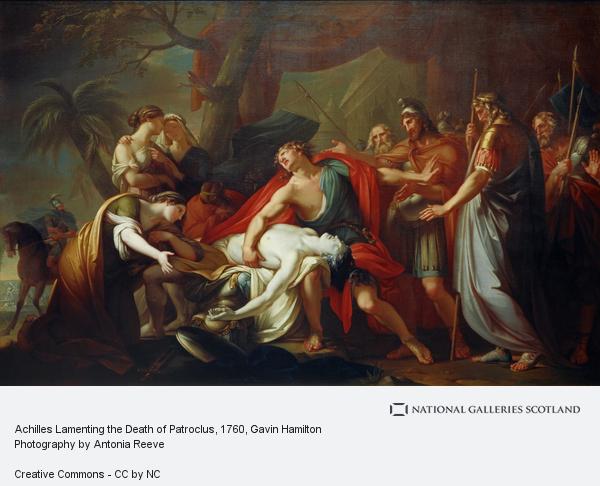 Source: Gavin Hamilton, 'Achilles Lamenting the Death of Patroclus' (1760-1763)Achilles is the main character of The Illiad, which tells the story of the Trojan War and,
specifically, Achilles' wrath. Achilles and Patroclus are lovers and friends;
angered by Agammemnon, Achilles refuses to fight, but allows Patroclus to wear
his armor and lead the Myrmidons against the Trojans. When Patroclus is killed
by Hector, Achilles is grief-stricken and, enraged, he returns to battle to
destroy the Trojans. The image included here, Gavin Hamilton's Achilles Lamenting the Death of Patroclus (1760-1763), is
housed in National Galleries, Scotland. - [TH]pelidesPelides is Achilles' father; therefore, it is also
another way of referring to Achilles himself. Achilles is frequently described
as "stern" by Homer. - [TH]maroPublius Vergilius Maro, more commonly known as Virgil,
the Augustan Roman poet famed for his Eclogues and the epic poem The Aeneid. - [TH]nineThe nine muses in Greco-Roman mythology are goddesses,
daughters of Zeus and Mnemosyne who inspire those in the arts and
sciences. - [TH]mantuaMantua
is a city in Italy, and the home of Virgil; the Mantuan sage is the poet
Virgil. - [TH]fainMeaning "[g]ladly,
willingly, with pleasure," according to the OED (fain, adv.B). - [TH]heliconMount Helicon in Greece is a mountain
believed to be the home of the muses and hence a place sacred to poetry. - [TH]falteringAn alternate spelling and contraction, for meter, of "faltering," meaning
unsteady or staggering. - [TH]terencePublius Terentius Afer, better known as
Terence, is a famous Roman comic playwright, born in northern Africa. As the
Encylopedia Britannicanotes, Terence was enslaved and later
freed by a Roman senator. Wheatley suggests a connection between herself and
Terence, both of African origin; yet, Terence is "happier"--both in his poetic
skill, and perhaps also in having been freed. - [TH]laurel
Source: Gavin Hamilton, 'Achilles Lamenting the Death of Patroclus' (1760-1763)Achilles is the main character of The Illiad, which tells the story of the Trojan War and,
specifically, Achilles' wrath. Achilles and Patroclus are lovers and friends;
angered by Agammemnon, Achilles refuses to fight, but allows Patroclus to wear
his armor and lead the Myrmidons against the Trojans. When Patroclus is killed
by Hector, Achilles is grief-stricken and, enraged, he returns to battle to
destroy the Trojans. The image included here, Gavin Hamilton's Achilles Lamenting the Death of Patroclus (1760-1763), is
housed in National Galleries, Scotland. - [TH]pelidesPelides is Achilles' father; therefore, it is also
another way of referring to Achilles himself. Achilles is frequently described
as "stern" by Homer. - [TH]maroPublius Vergilius Maro, more commonly known as Virgil,
the Augustan Roman poet famed for his Eclogues and the epic poem The Aeneid. - [TH]nineThe nine muses in Greco-Roman mythology are goddesses,
daughters of Zeus and Mnemosyne who inspire those in the arts and
sciences. - [TH]mantuaMantua
is a city in Italy, and the home of Virgil; the Mantuan sage is the poet
Virgil. - [TH]fainMeaning "[g]ladly,
willingly, with pleasure," according to the OED (fain, adv.B). - [TH]heliconMount Helicon in Greece is a mountain
believed to be the home of the muses and hence a place sacred to poetry. - [TH]falteringAn alternate spelling and contraction, for meter, of "faltering," meaning
unsteady or staggering. - [TH]terencePublius Terentius Afer, better known as
Terence, is a famous Roman comic playwright, born in northern Africa. As the
Encylopedia Britannicanotes, Terence was enslaved and later
freed by a Roman senator. Wheatley suggests a connection between herself and
Terence, both of African origin; yet, Terence is "happier"--both in his poetic
skill, and perhaps also in having been freed. - [TH]laurel Source: Jonathan Richardson, 'Portrait of Alexander Pope' (1737)The leaves of the bay laurel tree were a
conventional symbol of poetic fame and acheivement originating in the
mythological tale of Daphne and
Apollo. The image included here is a portrait of the 18th century poet
Alexander Pope, wearing a crown of laurel. The portrait (c.1737), by Jonathan
Richardson, is housed in the National
Portrait Gallery, London. - [TH]thamesThe Thames is a major river flowing
through southern England and London. - [TH]naiads
Source: Jonathan Richardson, 'Portrait of Alexander Pope' (1737)The leaves of the bay laurel tree were a
conventional symbol of poetic fame and acheivement originating in the
mythological tale of Daphne and
Apollo. The image included here is a portrait of the 18th century poet
Alexander Pope, wearing a crown of laurel. The portrait (c.1737), by Jonathan
Richardson, is housed in the National
Portrait Gallery, London. - [TH]thamesThe Thames is a major river flowing
through southern England and London. - [TH]naiads Source: Jean-Francois de Troy, 'Pan and Syrinx' (1722-1724)In Greco-Roman
mythology, naiads are female freshwater nymphs. The image included here, by
Jean-Francois de Troy, shows part of the Ovidian story of Pan and Syrinx
(1722-1724). De Troy's Pan and Syrinx is housed in the
Getty Museum. - [TH]phoebusPhoebus Apollo is an important god in the Greco-Roman
tradition. He is associated with both the sun and with music and poetry. - [TH]auroraIn Greco-Roman mythology, Aurora (called Eos in the
Greek) personifies the dawn. - [TH]parnassusParnassus is a
mountain in Greece that was seen as the home of the gods, particularly Dionysus
and Apollo, as well as the Muses. The Muses are also associated with Mount
Helicon. - [TH]cambridge
Source: Jean-Francois de Troy, 'Pan and Syrinx' (1722-1724)In Greco-Roman
mythology, naiads are female freshwater nymphs. The image included here, by
Jean-Francois de Troy, shows part of the Ovidian story of Pan and Syrinx
(1722-1724). De Troy's Pan and Syrinx is housed in the
Getty Museum. - [TH]phoebusPhoebus Apollo is an important god in the Greco-Roman
tradition. He is associated with both the sun and with music and poetry. - [TH]auroraIn Greco-Roman mythology, Aurora (called Eos in the
Greek) personifies the dawn. - [TH]parnassusParnassus is a
mountain in Greece that was seen as the home of the gods, particularly Dionysus
and Apollo, as well as the Muses. The Muses are also associated with Mount
Helicon. - [TH]cambridge
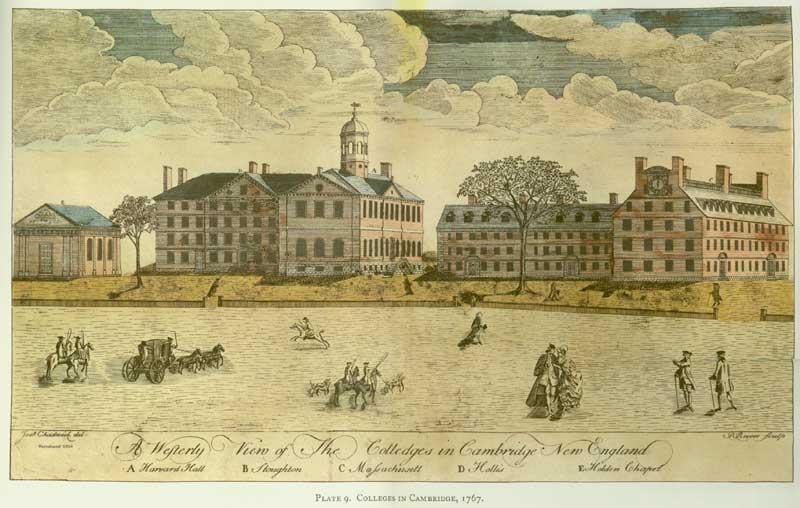 Source: Paul Revere, 'A Westerley View of the Colledges in Cambridge, New England' (1767)After describing her own educational journey, Wheatley
advises students at the University of Cambridge in New England to appreciate
and "[i]mprove" (21) the privilege of their education by "shunn[ing]" (25) the
"transient sweetness" (29) of sin using a variety of religious images. The
University of Cambridge in New England is now known as Harvard University. According to
Katherine Clay Bassard, Wheatley wrote this poem when she was about
fourteen years old (41). The engraving included here is by Paul Revere and
shows "A Westerly View of The Colledges in Cambridge New England" (1767), via
NYPL Digital Collections. - [JW]ardorWheatley works from the premise, commonly used among early women writers
and the enslaved who were restricted from intellectual pursuits like
writing, that her desire to write is "intrinsic" (1) or God-given, and
therefore appropriate. The word "ardor" also connotes physical desire and
flame-like passion, according to the OED (n.3). - [JW]musesAccording to A Dictionary of Greek and Roman Biography and
Mythology, the Muses are “inspiring goddesses of song" who
“presid[e] over the different kinds of poetry, and over the arts and
sciences." The “invocation of the muse” to aid the poet's work is often used
by neoclassical authors like those whom Wheatley has clearly read and was
influenced by, including Milton and Pope.
However, Hilene Flanzbaum suggests that Wheatley’s notably frequent
invocation of the muse is more significant than formulaic or imitative--it
is “the very means by which she usurps power for herself and claims a berth
for her own thoughts, emotions and desires. And while some may claim that
these functions accompany any appearance of the muse, when the muses bestow
their power on a black female slave, they transport Wheatley to a domain
surprisingly free of restriction and previously forbidden” (“Unprecedented Liberties”
75). - [JW]egyptianWheatley here
alludes to Exodus
10:21-22, wherein the ninth plague of darkness is visited upon
Egypt. This reference is also in line with contemporary Orientalist notions
about Egypt and Egyptian religiosity, which was believed to be full of
occult practices. Early nineteenth-century British historian and scholar
Thomas Maurice explores these ideas of idolatry and superstition in Observations on
the Remains of Ancient Egyptian Grandeur and Superstition. A
detailed focus on the Egyptian religious practices can be found in the
chapter "Strictures on the superstitious rites of the Egyptians,
particularly on the Nefarious Worship paid to Beasts, Esteemed Sacred, and
called in Scripture the Abominations of Egypt" (74-83). - [JW]systems
Source: Paul Revere, 'A Westerley View of the Colledges in Cambridge, New England' (1767)After describing her own educational journey, Wheatley
advises students at the University of Cambridge in New England to appreciate
and "[i]mprove" (21) the privilege of their education by "shunn[ing]" (25) the
"transient sweetness" (29) of sin using a variety of religious images. The
University of Cambridge in New England is now known as Harvard University. According to
Katherine Clay Bassard, Wheatley wrote this poem when she was about
fourteen years old (41). The engraving included here is by Paul Revere and
shows "A Westerly View of The Colledges in Cambridge New England" (1767), via
NYPL Digital Collections. - [JW]ardorWheatley works from the premise, commonly used among early women writers
and the enslaved who were restricted from intellectual pursuits like
writing, that her desire to write is "intrinsic" (1) or God-given, and
therefore appropriate. The word "ardor" also connotes physical desire and
flame-like passion, according to the OED (n.3). - [JW]musesAccording to A Dictionary of Greek and Roman Biography and
Mythology, the Muses are “inspiring goddesses of song" who
“presid[e] over the different kinds of poetry, and over the arts and
sciences." The “invocation of the muse” to aid the poet's work is often used
by neoclassical authors like those whom Wheatley has clearly read and was
influenced by, including Milton and Pope.
However, Hilene Flanzbaum suggests that Wheatley’s notably frequent
invocation of the muse is more significant than formulaic or imitative--it
is “the very means by which she usurps power for herself and claims a berth
for her own thoughts, emotions and desires. And while some may claim that
these functions accompany any appearance of the muse, when the muses bestow
their power on a black female slave, they transport Wheatley to a domain
surprisingly free of restriction and previously forbidden” (“Unprecedented Liberties”
75). - [JW]egyptianWheatley here
alludes to Exodus
10:21-22, wherein the ninth plague of darkness is visited upon
Egypt. This reference is also in line with contemporary Orientalist notions
about Egypt and Egyptian religiosity, which was believed to be full of
occult practices. Early nineteenth-century British historian and scholar
Thomas Maurice explores these ideas of idolatry and superstition in Observations on
the Remains of Ancient Egyptian Grandeur and Superstition. A
detailed focus on the Egyptian religious practices can be found in the
chapter "Strictures on the superstitious rites of the Egyptians,
particularly on the Nefarious Worship paid to Beasts, Esteemed Sacred, and
called in Scripture the Abominations of Egypt" (74-83). - [JW]systems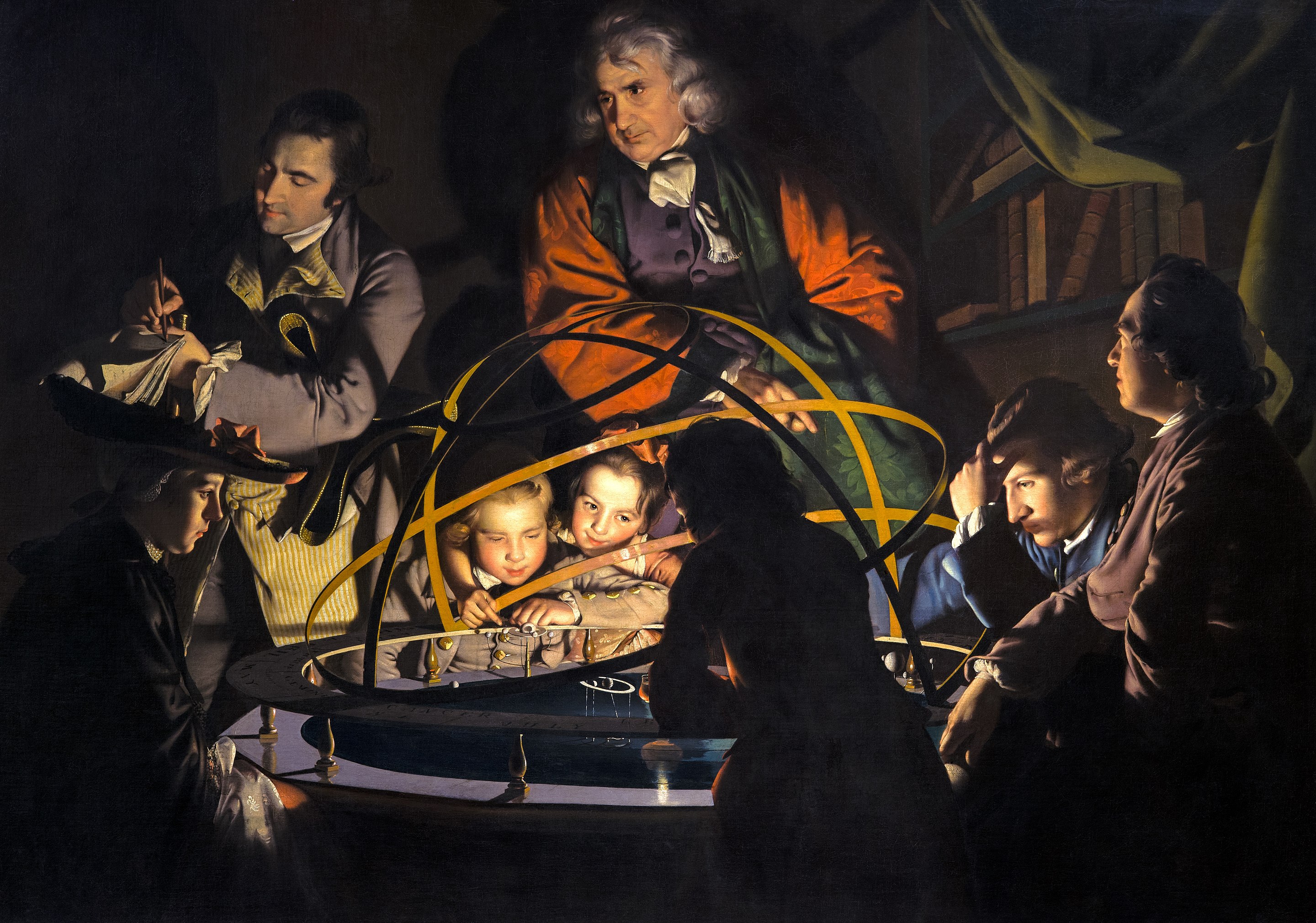 Source: Joseph Wright, 'Philosopher Lecturing on the Orrery' (1766)The sixteenth- and seventeenth-century
development of the microscope and the telescope had made great scientific
advancements possible, especially in astronomy; in the painting by Joseph
Wright here, you can see an eighteenth-century orrery--a scientific
clockwork instrument used to dramatize the motion of the planets in the
solar system (via Wikimedia Commons). Possibly an allusion to Alexander
Pope's 1733-34 Essay on Man (I.23-28), Wheatley here may
also be referencing contemporary scientific thought about the plurality of worlds. - [JW]deign According to the
Oxford English Dictionary deign means "to think it worthy of oneself" or "to think fit"
(n.1a). Today, it typically has a negative connotation, though it does not
here. - [JW]ethiop
Source: Joseph Wright, 'Philosopher Lecturing on the Orrery' (1766)The sixteenth- and seventeenth-century
development of the microscope and the telescope had made great scientific
advancements possible, especially in astronomy; in the painting by Joseph
Wright here, you can see an eighteenth-century orrery--a scientific
clockwork instrument used to dramatize the motion of the planets in the
solar system (via Wikimedia Commons). Possibly an allusion to Alexander
Pope's 1733-34 Essay on Man (I.23-28), Wheatley here may
also be referencing contemporary scientific thought about the plurality of worlds. - [JW]deign According to the
Oxford English Dictionary deign means "to think it worthy of oneself" or "to think fit"
(n.1a). Today, it typically has a negative connotation, though it does not
here. - [JW]ethiop
 Source: John Overton, 'A new and most exact map of Africa' (1666)According
to the OED, the word Ethiop would
have been used during Wheatley's time most often to refer to "[a] black or
dark-skinned person; a black African," and only occasionally to the country
of Ethiopia, specifically (n.A). Included here, via the Norwich Collection at Stanford University, is a 1666 map
of Africa and the surrounding oceans, embellished with a variety of images.
- [JW]perditionIn theological discussion, the word perdition means "the
state of final spiritual ruin or damnation; the consignment of the
unredeemed or wicked and impenitent soul to hell; the fate of those in hell;
eternal death" (OED, "perdition" n.2a). In more general terms, it suggests
ruin or degradation (n.1a). - [JW]brought
Source: John Overton, 'A new and most exact map of Africa' (1666)According
to the OED, the word Ethiop would
have been used during Wheatley's time most often to refer to "[a] black or
dark-skinned person; a black African," and only occasionally to the country
of Ethiopia, specifically (n.A). Included here, via the Norwich Collection at Stanford University, is a 1666 map
of Africa and the surrounding oceans, embellished with a variety of images.
- [JW]perditionIn theological discussion, the word perdition means "the
state of final spiritual ruin or damnation; the consignment of the
unredeemed or wicked and impenitent soul to hell; the fate of those in hell;
eternal death" (OED, "perdition" n.2a). In more general terms, it suggests
ruin or degradation (n.1a). - [JW]brought The title of one Wheatley's most (in)famous poems, "On being brought from
AFRICA to AMERICA" alludes to the experiences of many Africans who became
subject to the transatlantic slave trade. Wheatley uses biblical references and
direct address to appeal to a Christian audience, while also defending the
ability of her "sable race" to become "refin'd" through Christian theology.
Henry Louis Gates, who in Figures in Black: Words, Signs, and the "Racial" Self (1989)
situates Wheatley as an important voice in the eighteenth-century debate about
natural human rights, summarizes the "recurrent suggestion that Wheatley has
remained aloof from matters that were in any sense racial, or more correctly,
'positively' racial," as a "misreading" (74-75). Notable for the complexity of
its brief discussion of blackness in the Christian slaveholding American
republic, this poem in particular is frequently criticized for its apparent
rejection of Africa and African-ness. However, Wheatley was working within a
non-free context, and her critique of slavery is mediated by Christianity
acquired as part of her enslavement. For a fuller exploration of Wheatley’s
poem, see Authority and Female Authorship in Colonial America,
by William Scheick (especially chapter 4). The image included here,
via the
British Library, shows a diagram of the Brookes' slave ship
(c.1801). - [JW]viewWheatley's description
of those who "view our sable race with scornful eye" (5) is a clear
rejection of what Lena Hill
describes as "ignorant" interpretations of "visual blackness"
(37-38), as is her attribution of speech in direct discourse:
"'Their color is a diabolic die'" (6). Henry Louis Gates argues that
Wheatley's very presence as an author complicated assumptions of "natural"
inferiority. For more about this topic, see Gates' Figures in
Black and Walt Nott's discussion of Wheatley's public
persona in "From
'Uncultivated Barbarian' to 'Poetical Genius': The Public Presence of
Phillis Wheatley."
- [TH]cainThe phrase "black as Cain" is a distortion of the
biblical idea of the mark of Cain (Genesis
4:15) and was used as justification for the enslavement of people
of color. Many scholars point out that this was Wheatley's "most maligned
poem," (Hill
37) which is ultimately about the inclusion of Africans in the
"Christian family" and her critique of "ignorant" interpretations of "visual
blackness" (37-38). For an interesting contemporary read of the mark of Cain
in anti-abolitionist discourse, see Josiah Priest's Slavery as it Relates to the Negro (1843), where he
rejects the possibility that dark-skinned peoples could be related to Adam
by blood (134-136). For a larger reading of Wheatley's use of blackness and
the role of blackness in the early American imagination, see Lena Hill's
chapter "Witnessing Moral Authority in Pre-Abolition Literature," from Visualizing
Blackness and the Creation of the African American Literary
Tradition (2014)
- [JW]whitfield
The title of one Wheatley's most (in)famous poems, "On being brought from
AFRICA to AMERICA" alludes to the experiences of many Africans who became
subject to the transatlantic slave trade. Wheatley uses biblical references and
direct address to appeal to a Christian audience, while also defending the
ability of her "sable race" to become "refin'd" through Christian theology.
Henry Louis Gates, who in Figures in Black: Words, Signs, and the "Racial" Self (1989)
situates Wheatley as an important voice in the eighteenth-century debate about
natural human rights, summarizes the "recurrent suggestion that Wheatley has
remained aloof from matters that were in any sense racial, or more correctly,
'positively' racial," as a "misreading" (74-75). Notable for the complexity of
its brief discussion of blackness in the Christian slaveholding American
republic, this poem in particular is frequently criticized for its apparent
rejection of Africa and African-ness. However, Wheatley was working within a
non-free context, and her critique of slavery is mediated by Christianity
acquired as part of her enslavement. For a fuller exploration of Wheatley’s
poem, see Authority and Female Authorship in Colonial America,
by William Scheick (especially chapter 4). The image included here,
via the
British Library, shows a diagram of the Brookes' slave ship
(c.1801). - [JW]viewWheatley's description
of those who "view our sable race with scornful eye" (5) is a clear
rejection of what Lena Hill
describes as "ignorant" interpretations of "visual blackness"
(37-38), as is her attribution of speech in direct discourse:
"'Their color is a diabolic die'" (6). Henry Louis Gates argues that
Wheatley's very presence as an author complicated assumptions of "natural"
inferiority. For more about this topic, see Gates' Figures in
Black and Walt Nott's discussion of Wheatley's public
persona in "From
'Uncultivated Barbarian' to 'Poetical Genius': The Public Presence of
Phillis Wheatley."
- [TH]cainThe phrase "black as Cain" is a distortion of the
biblical idea of the mark of Cain (Genesis
4:15) and was used as justification for the enslavement of people
of color. Many scholars point out that this was Wheatley's "most maligned
poem," (Hill
37) which is ultimately about the inclusion of Africans in the
"Christian family" and her critique of "ignorant" interpretations of "visual
blackness" (37-38). For an interesting contemporary read of the mark of Cain
in anti-abolitionist discourse, see Josiah Priest's Slavery as it Relates to the Negro (1843), where he
rejects the possibility that dark-skinned peoples could be related to Adam
by blood (134-136). For a larger reading of Wheatley's use of blackness and
the role of blackness in the early American imagination, see Lena Hill's
chapter "Witnessing Moral Authority in Pre-Abolition Literature," from Visualizing
Blackness and the Creation of the African American Literary
Tradition (2014)
- [JW]whitfield
 Source: John Russell, 'Portrait of George Whitefield' (c.1770)
George Whitefield (1714-1770; pronounced "wit-field") was one of the most
famous people of the eighteenth-century Anglophone world. As a student at
Oxford in the early 1730s, he got to know John and Charles Wesley, the founders
of the Methodist movement in the church of England. Whitefield joined them in
attempting to "methodize" the faith, returning it to the simple principles of
the early church. But more than the Wesley brothers, Whitefield made this
reformist movement into a public ministry. A famously charismatic public
speaker, Whitefield preached to crowds numbering in the thousands in England
and the American colonies, becoming a central figure in what was known as the
"Great Awakening," a revival of evangelical Protestantism that was influential
on both sides of the Atlantic. Benjamin Franklin and Olaudah Equiano were each
impressed (though in very different ways) when they saw Whitefield preach in
Philadelphia and Savannah, respectively. Whitefield made several visits to the
Boston area, and it seems likely that the Wheatleys saw him preach there.
Phillis might very well have joined them, but we cannot be sure. Whitefield
died unexpectedly in Newburyport, Massachusetts on September 30, 1770, a few
days after he left Boston on what turned out to be his last tour of the
colonies.
Phillis Wheatley's elegy for Whitefield changed her life, transforming her from
a young enslaved woman with a small readership among friends of the Wheatley
family to an author with an international readership. The poem was published as
a broadside on October 11, 1770, and was an immediate success. It was reprinted
several times in colonial cities, as well as London, and also appeared in
several newspapers. The poem brought Wheatley to the attention of Selina, the
Countess of Huntingdon, who is addressed in the poem itself. A fervent
Methodist herself, the Countess was Whitefield's patron, supporting him on his
evangelical missions. The Countess became Wheatley's patron as well, sponsoring
the publication of her only volume of poems, published in London in 1773. The image included here shows a portrait of Whitefield by John Russel, from the National Portrait Gallery, UK.
- [JOB]wontedwonted:
"Accustomed, customary, usual." Oxford English Dictionary;
auditory: "An assembly of hearers, an audience." Oxford English
Dictionary, hence the meaning here is something like "usual audience." - [JOB]unequalled"unequalled accents"; Whitefield was a famously eloquent and compelling public
speaker; the sense here is that no other speaker could match the "accent" or style of
his voice. - [JOB]zionZion is a
name in the Hebrew bible for Jerusalem, and the term has often been extended to mean
the entirety of what believers think of as the holy land, or even the
afterlife. - [JOB]countess
Source: John Russell, 'Portrait of George Whitefield' (c.1770)
George Whitefield (1714-1770; pronounced "wit-field") was one of the most
famous people of the eighteenth-century Anglophone world. As a student at
Oxford in the early 1730s, he got to know John and Charles Wesley, the founders
of the Methodist movement in the church of England. Whitefield joined them in
attempting to "methodize" the faith, returning it to the simple principles of
the early church. But more than the Wesley brothers, Whitefield made this
reformist movement into a public ministry. A famously charismatic public
speaker, Whitefield preached to crowds numbering in the thousands in England
and the American colonies, becoming a central figure in what was known as the
"Great Awakening," a revival of evangelical Protestantism that was influential
on both sides of the Atlantic. Benjamin Franklin and Olaudah Equiano were each
impressed (though in very different ways) when they saw Whitefield preach in
Philadelphia and Savannah, respectively. Whitefield made several visits to the
Boston area, and it seems likely that the Wheatleys saw him preach there.
Phillis might very well have joined them, but we cannot be sure. Whitefield
died unexpectedly in Newburyport, Massachusetts on September 30, 1770, a few
days after he left Boston on what turned out to be his last tour of the
colonies.
Phillis Wheatley's elegy for Whitefield changed her life, transforming her from
a young enslaved woman with a small readership among friends of the Wheatley
family to an author with an international readership. The poem was published as
a broadside on October 11, 1770, and was an immediate success. It was reprinted
several times in colonial cities, as well as London, and also appeared in
several newspapers. The poem brought Wheatley to the attention of Selina, the
Countess of Huntingdon, who is addressed in the poem itself. A fervent
Methodist herself, the Countess was Whitefield's patron, supporting him on his
evangelical missions. The Countess became Wheatley's patron as well, sponsoring
the publication of her only volume of poems, published in London in 1773. The image included here shows a portrait of Whitefield by John Russel, from the National Portrait Gallery, UK.
- [JOB]wontedwonted:
"Accustomed, customary, usual." Oxford English Dictionary;
auditory: "An assembly of hearers, an audience." Oxford English
Dictionary, hence the meaning here is something like "usual audience." - [JOB]unequalled"unequalled accents"; Whitefield was a famously eloquent and compelling public
speaker; the sense here is that no other speaker could match the "accent" or style of
his voice. - [JOB]zionZion is a
name in the Hebrew bible for Jerusalem, and the term has often been extended to mean
the entirety of what believers think of as the holy land, or even the
afterlife. - [JOB]countess Source: Unknown Artist, 'Portrait of Selina Hastings' (c.1770)The Countess of Huntingdon, to whom Mr. Whitefield was Chaplain.
[Wheatley's note]. Selina Hastings, the countess
of Huntingdon (1707-1791), was a major figure in the Methodist movement,
using her wealth to support the founding of chapels and a training school for
ministers. Whitefield became her personal chaplain in the 1740s. Wheatley sought and
recieved her patronage as well, and Wheatley's 1773 volume of poems was published
with her support. The image here shows a portrait of Selina Hastings by an unknown artist, about 1770, from the National
Portrait Gallery, London. - [JOB]orphansWhitefield first came to the American colonies in 1738, when he travelled to
Savannah, Georgia, where the colony's trustees had hired him to serve as minister. He
decided to make his main project in Savannah the establishment of an orphanage, and
he returned to England after only four months to raise money for the project. The
Bethesda Orphan House was founded in 1740, and Whitefield continued to raise money
and to return for visits to the institution throughout his lifetime. - [JOB]smAccording to Africana: The Encyclopedia of the African and African American
Experience, Scipio Moorhead was an enslaved artist, principally known
for his painting of Phillis Wheatley, which became the basis for the
frontispiece to her 1773 collection of poems. The frontispiece is included in
this database. While no signed paintings by Moorhead survive, this poem by
Wheatley may describe two of his works. Moorhead was owned by the Presbyterian
minister John Moorhead of Boston and was likely tutored by Sarah Moorhead (Appiah and Gates
62). - [TH]cityWheatley
refers to the heavenly city of "New Jerusalem," described in Revelation 21. As
many scholars have noted, Christianity offered a not uncomplicated narrative of
salvation and hope that was particularly resonant for the enslaved. She
continues this metaphor of future bliss crowning current woe throughout this
and other poems; see, for instance, lines 23-28, below. - [TH]damonDamon is a typical name for a male lover
in pastoral poetry, poetry that imagines romantic conflicts in bucolic or
country settings. Wheatley frequently both references and draws on classical
pastoral poetry throughout her Poems. For a deeper
reading of Wheatley's use of the pastoral, see John C. Shield's scholarly
essay, "Phillis Wheatley's Subversive Pastoral." - [TH]AuroraIn Greco-Roman mythology, Aurora (called
Eos in the Greek) personifies the dawn. - [TH]Three amiable Daughters who
died when just arrived to Womens Estate. [Wheatley's note.]jbEditors of the Penguin edition of
Wheatley's poems reference research that identifies J. B. as James Bowdoin,
the future Governor of Massachusetts (185), depicted in this portrait from the Massachusetts
Historical Society. Bowdoin was one of the authenticators of Wheatley's
collection, his name inscribed in the front matter, as you can see in the image here,
taken from the same edition in the Library of Congress.
Source: Unknown Artist, 'Portrait of Selina Hastings' (c.1770)The Countess of Huntingdon, to whom Mr. Whitefield was Chaplain.
[Wheatley's note]. Selina Hastings, the countess
of Huntingdon (1707-1791), was a major figure in the Methodist movement,
using her wealth to support the founding of chapels and a training school for
ministers. Whitefield became her personal chaplain in the 1740s. Wheatley sought and
recieved her patronage as well, and Wheatley's 1773 volume of poems was published
with her support. The image here shows a portrait of Selina Hastings by an unknown artist, about 1770, from the National
Portrait Gallery, London. - [JOB]orphansWhitefield first came to the American colonies in 1738, when he travelled to
Savannah, Georgia, where the colony's trustees had hired him to serve as minister. He
decided to make his main project in Savannah the establishment of an orphanage, and
he returned to England after only four months to raise money for the project. The
Bethesda Orphan House was founded in 1740, and Whitefield continued to raise money
and to return for visits to the institution throughout his lifetime. - [JOB]smAccording to Africana: The Encyclopedia of the African and African American
Experience, Scipio Moorhead was an enslaved artist, principally known
for his painting of Phillis Wheatley, which became the basis for the
frontispiece to her 1773 collection of poems. The frontispiece is included in
this database. While no signed paintings by Moorhead survive, this poem by
Wheatley may describe two of his works. Moorhead was owned by the Presbyterian
minister John Moorhead of Boston and was likely tutored by Sarah Moorhead (Appiah and Gates
62). - [TH]cityWheatley
refers to the heavenly city of "New Jerusalem," described in Revelation 21. As
many scholars have noted, Christianity offered a not uncomplicated narrative of
salvation and hope that was particularly resonant for the enslaved. She
continues this metaphor of future bliss crowning current woe throughout this
and other poems; see, for instance, lines 23-28, below. - [TH]damonDamon is a typical name for a male lover
in pastoral poetry, poetry that imagines romantic conflicts in bucolic or
country settings. Wheatley frequently both references and draws on classical
pastoral poetry throughout her Poems. For a deeper
reading of Wheatley's use of the pastoral, see John C. Shield's scholarly
essay, "Phillis Wheatley's Subversive Pastoral." - [TH]AuroraIn Greco-Roman mythology, Aurora (called
Eos in the Greek) personifies the dawn. - [TH]Three amiable Daughters who
died when just arrived to Womens Estate. [Wheatley's note.]jbEditors of the Penguin edition of
Wheatley's poems reference research that identifies J. B. as James Bowdoin,
the future Governor of Massachusetts (185), depicted in this portrait from the Massachusetts
Historical Society. Bowdoin was one of the authenticators of Wheatley's
collection, his name inscribed in the front matter, as you can see in the image here,
taken from the same edition in the Library of Congress. 
 Source: Oil portrait of James Bowdoin, after John Singleton Copley (19th century) - [TH]
Source: Oil portrait of James Bowdoin, after John Singleton Copley (19th century) - [TH]
 Source: https://en.wikipedia.org/wiki/Samson_Occom
- [MUStudStaff]maecenas
Source: https://en.wikipedia.org/wiki/Samson_Occom
- [MUStudStaff]maecenas Source: Gavin Hamilton, 'Achilles Lamenting the Death of Patroclus' (1760-1763)Achilles is the main character of The Illiad, which tells the story of the Trojan War and,
specifically, Achilles' wrath. Achilles and Patroclus are lovers and friends;
angered by Agammemnon, Achilles refuses to fight, but allows Patroclus to wear
his armor and lead the Myrmidons against the Trojans. When Patroclus is killed
by Hector, Achilles is grief-stricken and, enraged, he returns to battle to
destroy the Trojans. The image included here, Gavin Hamilton's Achilles Lamenting the Death of Patroclus (1760-1763), is
housed in National Galleries, Scotland. - [TH]pelidesPelides is Achilles' father; therefore, it is also
another way of referring to Achilles himself. Achilles is frequently described
as "stern" by Homer. - [TH]maroPublius Vergilius Maro, more commonly known as Virgil,
the Augustan Roman poet famed for his Eclogues and the epic poem The Aeneid. - [TH]nineThe nine muses in Greco-Roman mythology are goddesses,
daughters of Zeus and Mnemosyne who inspire those in the arts and
sciences. - [TH]mantuaMantua
is a city in Italy, and the home of Virgil; the Mantuan sage is the poet
Virgil. - [TH]fainMeaning "[g]ladly,
willingly, with pleasure," according to the OED (fain, adv.B). - [TH]heliconMount Helicon in Greece is a mountain
believed to be the home of the muses and hence a place sacred to poetry. - [TH]falteringAn alternate spelling and contraction, for meter, of "faltering," meaning
unsteady or staggering. - [TH]terencePublius Terentius Afer, better known as
Terence, is a famous Roman comic playwright, born in northern Africa. As the
Encylopedia Britannicanotes, Terence was enslaved and later
freed by a Roman senator. Wheatley suggests a connection between herself and
Terence, both of African origin; yet, Terence is "happier"--both in his poetic
skill, and perhaps also in having been freed. - [TH]laurel
Source: Gavin Hamilton, 'Achilles Lamenting the Death of Patroclus' (1760-1763)Achilles is the main character of The Illiad, which tells the story of the Trojan War and,
specifically, Achilles' wrath. Achilles and Patroclus are lovers and friends;
angered by Agammemnon, Achilles refuses to fight, but allows Patroclus to wear
his armor and lead the Myrmidons against the Trojans. When Patroclus is killed
by Hector, Achilles is grief-stricken and, enraged, he returns to battle to
destroy the Trojans. The image included here, Gavin Hamilton's Achilles Lamenting the Death of Patroclus (1760-1763), is
housed in National Galleries, Scotland. - [TH]pelidesPelides is Achilles' father; therefore, it is also
another way of referring to Achilles himself. Achilles is frequently described
as "stern" by Homer. - [TH]maroPublius Vergilius Maro, more commonly known as Virgil,
the Augustan Roman poet famed for his Eclogues and the epic poem The Aeneid. - [TH]nineThe nine muses in Greco-Roman mythology are goddesses,
daughters of Zeus and Mnemosyne who inspire those in the arts and
sciences. - [TH]mantuaMantua
is a city in Italy, and the home of Virgil; the Mantuan sage is the poet
Virgil. - [TH]fainMeaning "[g]ladly,
willingly, with pleasure," according to the OED (fain, adv.B). - [TH]heliconMount Helicon in Greece is a mountain
believed to be the home of the muses and hence a place sacred to poetry. - [TH]falteringAn alternate spelling and contraction, for meter, of "faltering," meaning
unsteady or staggering. - [TH]terencePublius Terentius Afer, better known as
Terence, is a famous Roman comic playwright, born in northern Africa. As the
Encylopedia Britannicanotes, Terence was enslaved and later
freed by a Roman senator. Wheatley suggests a connection between herself and
Terence, both of African origin; yet, Terence is "happier"--both in his poetic
skill, and perhaps also in having been freed. - [TH]laurel Source: Jonathan Richardson, 'Portrait of Alexander Pope' (1737)The leaves of the bay laurel tree were a
conventional symbol of poetic fame and acheivement originating in the
mythological tale of Daphne and
Apollo. The image included here is a portrait of the 18th century poet
Alexander Pope, wearing a crown of laurel. The portrait (c.1737), by Jonathan
Richardson, is housed in the National
Portrait Gallery, London. - [TH]thamesThe Thames is a major river flowing
through southern England and London. - [TH]naiads
Source: Jonathan Richardson, 'Portrait of Alexander Pope' (1737)The leaves of the bay laurel tree were a
conventional symbol of poetic fame and acheivement originating in the
mythological tale of Daphne and
Apollo. The image included here is a portrait of the 18th century poet
Alexander Pope, wearing a crown of laurel. The portrait (c.1737), by Jonathan
Richardson, is housed in the National
Portrait Gallery, London. - [TH]thamesThe Thames is a major river flowing
through southern England and London. - [TH]naiads Source: Jean-Francois de Troy, 'Pan and Syrinx' (1722-1724)In Greco-Roman
mythology, naiads are female freshwater nymphs. The image included here, by
Jean-Francois de Troy, shows part of the Ovidian story of Pan and Syrinx
(1722-1724). De Troy's Pan and Syrinx is housed in the
Getty Museum. - [TH]phoebusPhoebus Apollo is an important god in the Greco-Roman
tradition. He is associated with both the sun and with music and poetry. - [TH]auroraIn Greco-Roman mythology, Aurora (called Eos in the
Greek) personifies the dawn. - [TH]parnassusParnassus is a
mountain in Greece that was seen as the home of the gods, particularly Dionysus
and Apollo, as well as the Muses. The Muses are also associated with Mount
Helicon. - [TH]cambridge
Source: Jean-Francois de Troy, 'Pan and Syrinx' (1722-1724)In Greco-Roman
mythology, naiads are female freshwater nymphs. The image included here, by
Jean-Francois de Troy, shows part of the Ovidian story of Pan and Syrinx
(1722-1724). De Troy's Pan and Syrinx is housed in the
Getty Museum. - [TH]phoebusPhoebus Apollo is an important god in the Greco-Roman
tradition. He is associated with both the sun and with music and poetry. - [TH]auroraIn Greco-Roman mythology, Aurora (called Eos in the
Greek) personifies the dawn. - [TH]parnassusParnassus is a
mountain in Greece that was seen as the home of the gods, particularly Dionysus
and Apollo, as well as the Muses. The Muses are also associated with Mount
Helicon. - [TH]cambridge
 Source: Paul Revere, 'A Westerley View of the Colledges in Cambridge, New England' (1767)After describing her own educational journey, Wheatley
advises students at the University of Cambridge in New England to appreciate
and "[i]mprove" (21) the privilege of their education by "shunn[ing]" (25) the
"transient sweetness" (29) of sin using a variety of religious images. The
University of Cambridge in New England is now known as Harvard University. According to
Katherine Clay Bassard, Wheatley wrote this poem when she was about
fourteen years old (41). The engraving included here is by Paul Revere and
shows "A Westerly View of The Colledges in Cambridge New England" (1767), via
NYPL Digital Collections. - [JW]ardorWheatley works from the premise, commonly used among early women writers
and the enslaved who were restricted from intellectual pursuits like
writing, that her desire to write is "intrinsic" (1) or God-given, and
therefore appropriate. The word "ardor" also connotes physical desire and
flame-like passion, according to the OED (n.3). - [JW]musesAccording to A Dictionary of Greek and Roman Biography and
Mythology, the Muses are “inspiring goddesses of song" who
“presid[e] over the different kinds of poetry, and over the arts and
sciences." The “invocation of the muse” to aid the poet's work is often used
by neoclassical authors like those whom Wheatley has clearly read and was
influenced by, including Milton and Pope.
However, Hilene Flanzbaum suggests that Wheatley’s notably frequent
invocation of the muse is more significant than formulaic or imitative--it
is “the very means by which she usurps power for herself and claims a berth
for her own thoughts, emotions and desires. And while some may claim that
these functions accompany any appearance of the muse, when the muses bestow
their power on a black female slave, they transport Wheatley to a domain
surprisingly free of restriction and previously forbidden” (“Unprecedented Liberties”
75). - [JW]egyptianWheatley here
alludes to Exodus
10:21-22, wherein the ninth plague of darkness is visited upon
Egypt. This reference is also in line with contemporary Orientalist notions
about Egypt and Egyptian religiosity, which was believed to be full of
occult practices. Early nineteenth-century British historian and scholar
Thomas Maurice explores these ideas of idolatry and superstition in Observations on
the Remains of Ancient Egyptian Grandeur and Superstition. A
detailed focus on the Egyptian religious practices can be found in the
chapter "Strictures on the superstitious rites of the Egyptians,
particularly on the Nefarious Worship paid to Beasts, Esteemed Sacred, and
called in Scripture the Abominations of Egypt" (74-83). - [JW]systems
Source: Paul Revere, 'A Westerley View of the Colledges in Cambridge, New England' (1767)After describing her own educational journey, Wheatley
advises students at the University of Cambridge in New England to appreciate
and "[i]mprove" (21) the privilege of their education by "shunn[ing]" (25) the
"transient sweetness" (29) of sin using a variety of religious images. The
University of Cambridge in New England is now known as Harvard University. According to
Katherine Clay Bassard, Wheatley wrote this poem when she was about
fourteen years old (41). The engraving included here is by Paul Revere and
shows "A Westerly View of The Colledges in Cambridge New England" (1767), via
NYPL Digital Collections. - [JW]ardorWheatley works from the premise, commonly used among early women writers
and the enslaved who were restricted from intellectual pursuits like
writing, that her desire to write is "intrinsic" (1) or God-given, and
therefore appropriate. The word "ardor" also connotes physical desire and
flame-like passion, according to the OED (n.3). - [JW]musesAccording to A Dictionary of Greek and Roman Biography and
Mythology, the Muses are “inspiring goddesses of song" who
“presid[e] over the different kinds of poetry, and over the arts and
sciences." The “invocation of the muse” to aid the poet's work is often used
by neoclassical authors like those whom Wheatley has clearly read and was
influenced by, including Milton and Pope.
However, Hilene Flanzbaum suggests that Wheatley’s notably frequent
invocation of the muse is more significant than formulaic or imitative--it
is “the very means by which she usurps power for herself and claims a berth
for her own thoughts, emotions and desires. And while some may claim that
these functions accompany any appearance of the muse, when the muses bestow
their power on a black female slave, they transport Wheatley to a domain
surprisingly free of restriction and previously forbidden” (“Unprecedented Liberties”
75). - [JW]egyptianWheatley here
alludes to Exodus
10:21-22, wherein the ninth plague of darkness is visited upon
Egypt. This reference is also in line with contemporary Orientalist notions
about Egypt and Egyptian religiosity, which was believed to be full of
occult practices. Early nineteenth-century British historian and scholar
Thomas Maurice explores these ideas of idolatry and superstition in Observations on
the Remains of Ancient Egyptian Grandeur and Superstition. A
detailed focus on the Egyptian religious practices can be found in the
chapter "Strictures on the superstitious rites of the Egyptians,
particularly on the Nefarious Worship paid to Beasts, Esteemed Sacred, and
called in Scripture the Abominations of Egypt" (74-83). - [JW]systems Source: Joseph Wright, 'Philosopher Lecturing on the Orrery' (1766)The sixteenth- and seventeenth-century
development of the microscope and the telescope had made great scientific
advancements possible, especially in astronomy; in the painting by Joseph
Wright here, you can see an eighteenth-century orrery--a scientific
clockwork instrument used to dramatize the motion of the planets in the
solar system (via Wikimedia Commons). Possibly an allusion to Alexander
Pope's 1733-34 Essay on Man (I.23-28), Wheatley here may
also be referencing contemporary scientific thought about the plurality of worlds. - [JW]deign According to the
Oxford English Dictionary deign means "to think it worthy of oneself" or "to think fit"
(n.1a). Today, it typically has a negative connotation, though it does not
here. - [JW]ethiop
Source: Joseph Wright, 'Philosopher Lecturing on the Orrery' (1766)The sixteenth- and seventeenth-century
development of the microscope and the telescope had made great scientific
advancements possible, especially in astronomy; in the painting by Joseph
Wright here, you can see an eighteenth-century orrery--a scientific
clockwork instrument used to dramatize the motion of the planets in the
solar system (via Wikimedia Commons). Possibly an allusion to Alexander
Pope's 1733-34 Essay on Man (I.23-28), Wheatley here may
also be referencing contemporary scientific thought about the plurality of worlds. - [JW]deign According to the
Oxford English Dictionary deign means "to think it worthy of oneself" or "to think fit"
(n.1a). Today, it typically has a negative connotation, though it does not
here. - [JW]ethiop
 Source: John Overton, 'A new and most exact map of Africa' (1666)According
to the OED, the word Ethiop would
have been used during Wheatley's time most often to refer to "[a] black or
dark-skinned person; a black African," and only occasionally to the country
of Ethiopia, specifically (n.A). Included here, via the Norwich Collection at Stanford University, is a 1666 map
of Africa and the surrounding oceans, embellished with a variety of images.
- [JW]perditionIn theological discussion, the word perdition means "the
state of final spiritual ruin or damnation; the consignment of the
unredeemed or wicked and impenitent soul to hell; the fate of those in hell;
eternal death" (OED, "perdition" n.2a). In more general terms, it suggests
ruin or degradation (n.1a). - [JW]brought
Source: John Overton, 'A new and most exact map of Africa' (1666)According
to the OED, the word Ethiop would
have been used during Wheatley's time most often to refer to "[a] black or
dark-skinned person; a black African," and only occasionally to the country
of Ethiopia, specifically (n.A). Included here, via the Norwich Collection at Stanford University, is a 1666 map
of Africa and the surrounding oceans, embellished with a variety of images.
- [JW]perditionIn theological discussion, the word perdition means "the
state of final spiritual ruin or damnation; the consignment of the
unredeemed or wicked and impenitent soul to hell; the fate of those in hell;
eternal death" (OED, "perdition" n.2a). In more general terms, it suggests
ruin or degradation (n.1a). - [JW]brought The title of one Wheatley's most (in)famous poems, "On being brought from
AFRICA to AMERICA" alludes to the experiences of many Africans who became
subject to the transatlantic slave trade. Wheatley uses biblical references and
direct address to appeal to a Christian audience, while also defending the
ability of her "sable race" to become "refin'd" through Christian theology.
Henry Louis Gates, who in Figures in Black: Words, Signs, and the "Racial" Self (1989)
situates Wheatley as an important voice in the eighteenth-century debate about
natural human rights, summarizes the "recurrent suggestion that Wheatley has
remained aloof from matters that were in any sense racial, or more correctly,
'positively' racial," as a "misreading" (74-75). Notable for the complexity of
its brief discussion of blackness in the Christian slaveholding American
republic, this poem in particular is frequently criticized for its apparent
rejection of Africa and African-ness. However, Wheatley was working within a
non-free context, and her critique of slavery is mediated by Christianity
acquired as part of her enslavement. For a fuller exploration of Wheatley’s
poem, see Authority and Female Authorship in Colonial America,
by William Scheick (especially chapter 4). The image included here,
via the
British Library, shows a diagram of the Brookes' slave ship
(c.1801). - [JW]viewWheatley's description
of those who "view our sable race with scornful eye" (5) is a clear
rejection of what Lena Hill
describes as "ignorant" interpretations of "visual blackness"
(37-38), as is her attribution of speech in direct discourse:
"'Their color is a diabolic die'" (6). Henry Louis Gates argues that
Wheatley's very presence as an author complicated assumptions of "natural"
inferiority. For more about this topic, see Gates' Figures in
Black and Walt Nott's discussion of Wheatley's public
persona in "From
'Uncultivated Barbarian' to 'Poetical Genius': The Public Presence of
Phillis Wheatley."
- [TH]cainThe phrase "black as Cain" is a distortion of the
biblical idea of the mark of Cain (Genesis
4:15) and was used as justification for the enslavement of people
of color. Many scholars point out that this was Wheatley's "most maligned
poem," (Hill
37) which is ultimately about the inclusion of Africans in the
"Christian family" and her critique of "ignorant" interpretations of "visual
blackness" (37-38). For an interesting contemporary read of the mark of Cain
in anti-abolitionist discourse, see Josiah Priest's Slavery as it Relates to the Negro (1843), where he
rejects the possibility that dark-skinned peoples could be related to Adam
by blood (134-136). For a larger reading of Wheatley's use of blackness and
the role of blackness in the early American imagination, see Lena Hill's
chapter "Witnessing Moral Authority in Pre-Abolition Literature," from Visualizing
Blackness and the Creation of the African American Literary
Tradition (2014)
- [JW]whitfield
The title of one Wheatley's most (in)famous poems, "On being brought from
AFRICA to AMERICA" alludes to the experiences of many Africans who became
subject to the transatlantic slave trade. Wheatley uses biblical references and
direct address to appeal to a Christian audience, while also defending the
ability of her "sable race" to become "refin'd" through Christian theology.
Henry Louis Gates, who in Figures in Black: Words, Signs, and the "Racial" Self (1989)
situates Wheatley as an important voice in the eighteenth-century debate about
natural human rights, summarizes the "recurrent suggestion that Wheatley has
remained aloof from matters that were in any sense racial, or more correctly,
'positively' racial," as a "misreading" (74-75). Notable for the complexity of
its brief discussion of blackness in the Christian slaveholding American
republic, this poem in particular is frequently criticized for its apparent
rejection of Africa and African-ness. However, Wheatley was working within a
non-free context, and her critique of slavery is mediated by Christianity
acquired as part of her enslavement. For a fuller exploration of Wheatley’s
poem, see Authority and Female Authorship in Colonial America,
by William Scheick (especially chapter 4). The image included here,
via the
British Library, shows a diagram of the Brookes' slave ship
(c.1801). - [JW]viewWheatley's description
of those who "view our sable race with scornful eye" (5) is a clear
rejection of what Lena Hill
describes as "ignorant" interpretations of "visual blackness"
(37-38), as is her attribution of speech in direct discourse:
"'Their color is a diabolic die'" (6). Henry Louis Gates argues that
Wheatley's very presence as an author complicated assumptions of "natural"
inferiority. For more about this topic, see Gates' Figures in
Black and Walt Nott's discussion of Wheatley's public
persona in "From
'Uncultivated Barbarian' to 'Poetical Genius': The Public Presence of
Phillis Wheatley."
- [TH]cainThe phrase "black as Cain" is a distortion of the
biblical idea of the mark of Cain (Genesis
4:15) and was used as justification for the enslavement of people
of color. Many scholars point out that this was Wheatley's "most maligned
poem," (Hill
37) which is ultimately about the inclusion of Africans in the
"Christian family" and her critique of "ignorant" interpretations of "visual
blackness" (37-38). For an interesting contemporary read of the mark of Cain
in anti-abolitionist discourse, see Josiah Priest's Slavery as it Relates to the Negro (1843), where he
rejects the possibility that dark-skinned peoples could be related to Adam
by blood (134-136). For a larger reading of Wheatley's use of blackness and
the role of blackness in the early American imagination, see Lena Hill's
chapter "Witnessing Moral Authority in Pre-Abolition Literature," from Visualizing
Blackness and the Creation of the African American Literary
Tradition (2014)
- [JW]whitfield
 Source: John Russell, 'Portrait of George Whitefield' (c.1770)
George Whitefield (1714-1770; pronounced "wit-field") was one of the most
famous people of the eighteenth-century Anglophone world. As a student at
Oxford in the early 1730s, he got to know John and Charles Wesley, the founders
of the Methodist movement in the church of England. Whitefield joined them in
attempting to "methodize" the faith, returning it to the simple principles of
the early church. But more than the Wesley brothers, Whitefield made this
reformist movement into a public ministry. A famously charismatic public
speaker, Whitefield preached to crowds numbering in the thousands in England
and the American colonies, becoming a central figure in what was known as the
"Great Awakening," a revival of evangelical Protestantism that was influential
on both sides of the Atlantic. Benjamin Franklin and Olaudah Equiano were each
impressed (though in very different ways) when they saw Whitefield preach in
Philadelphia and Savannah, respectively. Whitefield made several visits to the
Boston area, and it seems likely that the Wheatleys saw him preach there.
Phillis might very well have joined them, but we cannot be sure. Whitefield
died unexpectedly in Newburyport, Massachusetts on September 30, 1770, a few
days after he left Boston on what turned out to be his last tour of the
colonies.
Phillis Wheatley's elegy for Whitefield changed her life, transforming her from
a young enslaved woman with a small readership among friends of the Wheatley
family to an author with an international readership. The poem was published as
a broadside on October 11, 1770, and was an immediate success. It was reprinted
several times in colonial cities, as well as London, and also appeared in
several newspapers. The poem brought Wheatley to the attention of Selina, the
Countess of Huntingdon, who is addressed in the poem itself. A fervent
Methodist herself, the Countess was Whitefield's patron, supporting him on his
evangelical missions. The Countess became Wheatley's patron as well, sponsoring
the publication of her only volume of poems, published in London in 1773. The image included here shows a portrait of Whitefield by John Russel, from the National Portrait Gallery, UK.
- [JOB]wontedwonted:
"Accustomed, customary, usual." Oxford English Dictionary;
auditory: "An assembly of hearers, an audience." Oxford English
Dictionary, hence the meaning here is something like "usual audience." - [JOB]unequalled"unequalled accents"; Whitefield was a famously eloquent and compelling public
speaker; the sense here is that no other speaker could match the "accent" or style of
his voice. - [JOB]zionZion is a
name in the Hebrew bible for Jerusalem, and the term has often been extended to mean
the entirety of what believers think of as the holy land, or even the
afterlife. - [JOB]countess
Source: John Russell, 'Portrait of George Whitefield' (c.1770)
George Whitefield (1714-1770; pronounced "wit-field") was one of the most
famous people of the eighteenth-century Anglophone world. As a student at
Oxford in the early 1730s, he got to know John and Charles Wesley, the founders
of the Methodist movement in the church of England. Whitefield joined them in
attempting to "methodize" the faith, returning it to the simple principles of
the early church. But more than the Wesley brothers, Whitefield made this
reformist movement into a public ministry. A famously charismatic public
speaker, Whitefield preached to crowds numbering in the thousands in England
and the American colonies, becoming a central figure in what was known as the
"Great Awakening," a revival of evangelical Protestantism that was influential
on both sides of the Atlantic. Benjamin Franklin and Olaudah Equiano were each
impressed (though in very different ways) when they saw Whitefield preach in
Philadelphia and Savannah, respectively. Whitefield made several visits to the
Boston area, and it seems likely that the Wheatleys saw him preach there.
Phillis might very well have joined them, but we cannot be sure. Whitefield
died unexpectedly in Newburyport, Massachusetts on September 30, 1770, a few
days after he left Boston on what turned out to be his last tour of the
colonies.
Phillis Wheatley's elegy for Whitefield changed her life, transforming her from
a young enslaved woman with a small readership among friends of the Wheatley
family to an author with an international readership. The poem was published as
a broadside on October 11, 1770, and was an immediate success. It was reprinted
several times in colonial cities, as well as London, and also appeared in
several newspapers. The poem brought Wheatley to the attention of Selina, the
Countess of Huntingdon, who is addressed in the poem itself. A fervent
Methodist herself, the Countess was Whitefield's patron, supporting him on his
evangelical missions. The Countess became Wheatley's patron as well, sponsoring
the publication of her only volume of poems, published in London in 1773. The image included here shows a portrait of Whitefield by John Russel, from the National Portrait Gallery, UK.
- [JOB]wontedwonted:
"Accustomed, customary, usual." Oxford English Dictionary;
auditory: "An assembly of hearers, an audience." Oxford English
Dictionary, hence the meaning here is something like "usual audience." - [JOB]unequalled"unequalled accents"; Whitefield was a famously eloquent and compelling public
speaker; the sense here is that no other speaker could match the "accent" or style of
his voice. - [JOB]zionZion is a
name in the Hebrew bible for Jerusalem, and the term has often been extended to mean
the entirety of what believers think of as the holy land, or even the
afterlife. - [JOB]countess Source: Unknown Artist, 'Portrait of Selina Hastings' (c.1770)The Countess of Huntingdon, to whom Mr. Whitefield was Chaplain.
[Wheatley's note]. Selina Hastings, the countess
of Huntingdon (1707-1791), was a major figure in the Methodist movement,
using her wealth to support the founding of chapels and a training school for
ministers. Whitefield became her personal chaplain in the 1740s. Wheatley sought and
recieved her patronage as well, and Wheatley's 1773 volume of poems was published
with her support. The image here shows a portrait of Selina Hastings by an unknown artist, about 1770, from the National
Portrait Gallery, London. - [JOB]orphansWhitefield first came to the American colonies in 1738, when he travelled to
Savannah, Georgia, where the colony's trustees had hired him to serve as minister. He
decided to make his main project in Savannah the establishment of an orphanage, and
he returned to England after only four months to raise money for the project. The
Bethesda Orphan House was founded in 1740, and Whitefield continued to raise money
and to return for visits to the institution throughout his lifetime. - [JOB]smAccording to Africana: The Encyclopedia of the African and African American
Experience, Scipio Moorhead was an enslaved artist, principally known
for his painting of Phillis Wheatley, which became the basis for the
frontispiece to her 1773 collection of poems. The frontispiece is included in
this database. While no signed paintings by Moorhead survive, this poem by
Wheatley may describe two of his works. Moorhead was owned by the Presbyterian
minister John Moorhead of Boston and was likely tutored by Sarah Moorhead (Appiah and Gates
62). - [TH]cityWheatley
refers to the heavenly city of "New Jerusalem," described in Revelation 21. As
many scholars have noted, Christianity offered a not uncomplicated narrative of
salvation and hope that was particularly resonant for the enslaved. She
continues this metaphor of future bliss crowning current woe throughout this
and other poems; see, for instance, lines 23-28, below. - [TH]damonDamon is a typical name for a male lover
in pastoral poetry, poetry that imagines romantic conflicts in bucolic or
country settings. Wheatley frequently both references and draws on classical
pastoral poetry throughout her Poems. For a deeper
reading of Wheatley's use of the pastoral, see John C. Shield's scholarly
essay, "Phillis Wheatley's Subversive Pastoral." - [TH]AuroraIn Greco-Roman mythology, Aurora (called
Eos in the Greek) personifies the dawn. - [TH]Three amiable Daughters who
died when just arrived to Womens Estate. [Wheatley's note.]jbEditors of the Penguin edition of
Wheatley's poems reference research that identifies J. B. as James Bowdoin,
the future Governor of Massachusetts (185), depicted in this portrait from the Massachusetts
Historical Society. Bowdoin was one of the authenticators of Wheatley's
collection, his name inscribed in the front matter, as you can see in the image here,
taken from the same edition in the Library of Congress.
Source: Unknown Artist, 'Portrait of Selina Hastings' (c.1770)The Countess of Huntingdon, to whom Mr. Whitefield was Chaplain.
[Wheatley's note]. Selina Hastings, the countess
of Huntingdon (1707-1791), was a major figure in the Methodist movement,
using her wealth to support the founding of chapels and a training school for
ministers. Whitefield became her personal chaplain in the 1740s. Wheatley sought and
recieved her patronage as well, and Wheatley's 1773 volume of poems was published
with her support. The image here shows a portrait of Selina Hastings by an unknown artist, about 1770, from the National
Portrait Gallery, London. - [JOB]orphansWhitefield first came to the American colonies in 1738, when he travelled to
Savannah, Georgia, where the colony's trustees had hired him to serve as minister. He
decided to make his main project in Savannah the establishment of an orphanage, and
he returned to England after only four months to raise money for the project. The
Bethesda Orphan House was founded in 1740, and Whitefield continued to raise money
and to return for visits to the institution throughout his lifetime. - [JOB]smAccording to Africana: The Encyclopedia of the African and African American
Experience, Scipio Moorhead was an enslaved artist, principally known
for his painting of Phillis Wheatley, which became the basis for the
frontispiece to her 1773 collection of poems. The frontispiece is included in
this database. While no signed paintings by Moorhead survive, this poem by
Wheatley may describe two of his works. Moorhead was owned by the Presbyterian
minister John Moorhead of Boston and was likely tutored by Sarah Moorhead (Appiah and Gates
62). - [TH]cityWheatley
refers to the heavenly city of "New Jerusalem," described in Revelation 21. As
many scholars have noted, Christianity offered a not uncomplicated narrative of
salvation and hope that was particularly resonant for the enslaved. She
continues this metaphor of future bliss crowning current woe throughout this
and other poems; see, for instance, lines 23-28, below. - [TH]damonDamon is a typical name for a male lover
in pastoral poetry, poetry that imagines romantic conflicts in bucolic or
country settings. Wheatley frequently both references and draws on classical
pastoral poetry throughout her Poems. For a deeper
reading of Wheatley's use of the pastoral, see John C. Shield's scholarly
essay, "Phillis Wheatley's Subversive Pastoral." - [TH]AuroraIn Greco-Roman mythology, Aurora (called
Eos in the Greek) personifies the dawn. - [TH]Three amiable Daughters who
died when just arrived to Womens Estate. [Wheatley's note.]jbEditors of the Penguin edition of
Wheatley's poems reference research that identifies J. B. as James Bowdoin,
the future Governor of Massachusetts (185), depicted in this portrait from the Massachusetts
Historical Society. Bowdoin was one of the authenticators of Wheatley's
collection, his name inscribed in the front matter, as you can see in the image here,
taken from the same edition in the Library of Congress.  Source: Oil portrait of James Bowdoin, after John Singleton Copley (19th century) - [TH]
Source: Oil portrait of James Bowdoin, after John Singleton Copley (19th century) - [TH]Footnotes
occom_In Wheatley's letter to Samson Occom, she affirms
his "Vindication of their [the enslaved] natural Rights." She concludes with an
ellipsis in which she implicitly criticizes the "strange Absurdity" of Christian
slavers. To read the letter in its entirety, visit American Literature I. Samson Occom
(1723-1792), a Native American member of the Mohegan Nation, was an author,
teacher, judge, and Presbyterian minister. The image here, via Wikimedia Commons,
is a mezzotint portrait of the Reverend Occom from 1768. Source: https://en.wikipedia.org/wiki/Samson_Occom
Source: https://en.wikipedia.org/wiki/Samson_Occom
 Source: https://en.wikipedia.org/wiki/Samson_Occom
Source: https://en.wikipedia.org/wiki/Samson_Occom
maecenas_ Source: Wheatley's 'Attestation to the Public'Maecenas was the wealthy patron of classical
Roman poets Virgil and Horace, whom Wheatley draws on in complex ways.
Wheatley's poem "To Maecenas" opens her collection, which position gives it a
powerful significance as she claims the right to speak within this tradition.
Like Horace's Odes to Maecenas, Wheatley's offers praise to her patron,
but does so in ways that are fraught with the equivocalities of being an
enslaved African working within the languge and culture of the colonial master.
For a deeper reading of "To Maecenas," see Paula Bennett's journal article,
"Phillis Wheatley's Vocation and the Paradox of the 'Afric Muse.'" Following
other scholars, Bennett identifies Wheatley's poet-patron as Mather Byles, one
of the signatories verifying her authorship. The image included here shows the
attestation to the public, included in the 1773 edition of Wheatley's poems,
certifying that they were indeed written by "PHILLIS, a young Negro Girl, who
was but a few Years since, brought an uncultivated Barbarian from Africa,...and now is, under the Disadvantage of serving
as a Slave in a Family in [Boston]." Note Bales' name.
Source: Wheatley's 'Attestation to the Public'Maecenas was the wealthy patron of classical
Roman poets Virgil and Horace, whom Wheatley draws on in complex ways.
Wheatley's poem "To Maecenas" opens her collection, which position gives it a
powerful significance as she claims the right to speak within this tradition.
Like Horace's Odes to Maecenas, Wheatley's offers praise to her patron,
but does so in ways that are fraught with the equivocalities of being an
enslaved African working within the languge and culture of the colonial master.
For a deeper reading of "To Maecenas," see Paula Bennett's journal article,
"Phillis Wheatley's Vocation and the Paradox of the 'Afric Muse.'" Following
other scholars, Bennett identifies Wheatley's poet-patron as Mather Byles, one
of the signatories verifying her authorship. The image included here shows the
attestation to the public, included in the 1773 edition of Wheatley's poems,
certifying that they were indeed written by "PHILLIS, a young Negro Girl, who
was but a few Years since, brought an uncultivated Barbarian from Africa,...and now is, under the Disadvantage of serving
as a Slave in a Family in [Boston]." Note Bales' name.
homer_Homer is the ancient Greek poet of The
Oddyssey and The Illiad.
achilles_ Source: Gavin Hamilton, 'Achilles Lamenting the Death of Patroclus' (1760-1763)Achilles is the main character of The Illiad, which tells the story of the Trojan War and,
specifically, Achilles' wrath. Achilles and Patroclus are lovers and friends;
angered by Agammemnon, Achilles refuses to fight, but allows Patroclus to wear
his armor and lead the Myrmidons against the Trojans. When Patroclus is killed
by Hector, Achilles is grief-stricken and, enraged, he returns to battle to
destroy the Trojans. The image included here, Gavin Hamilton's Achilles Lamenting the Death of Patroclus (1760-1763), is
housed in National Galleries, Scotland.
Source: Gavin Hamilton, 'Achilles Lamenting the Death of Patroclus' (1760-1763)Achilles is the main character of The Illiad, which tells the story of the Trojan War and,
specifically, Achilles' wrath. Achilles and Patroclus are lovers and friends;
angered by Agammemnon, Achilles refuses to fight, but allows Patroclus to wear
his armor and lead the Myrmidons against the Trojans. When Patroclus is killed
by Hector, Achilles is grief-stricken and, enraged, he returns to battle to
destroy the Trojans. The image included here, Gavin Hamilton's Achilles Lamenting the Death of Patroclus (1760-1763), is
housed in National Galleries, Scotland.
 Source: Gavin Hamilton, 'Achilles Lamenting the Death of Patroclus' (1760-1763)Achilles is the main character of The Illiad, which tells the story of the Trojan War and,
specifically, Achilles' wrath. Achilles and Patroclus are lovers and friends;
angered by Agammemnon, Achilles refuses to fight, but allows Patroclus to wear
his armor and lead the Myrmidons against the Trojans. When Patroclus is killed
by Hector, Achilles is grief-stricken and, enraged, he returns to battle to
destroy the Trojans. The image included here, Gavin Hamilton's Achilles Lamenting the Death of Patroclus (1760-1763), is
housed in National Galleries, Scotland.
Source: Gavin Hamilton, 'Achilles Lamenting the Death of Patroclus' (1760-1763)Achilles is the main character of The Illiad, which tells the story of the Trojan War and,
specifically, Achilles' wrath. Achilles and Patroclus are lovers and friends;
angered by Agammemnon, Achilles refuses to fight, but allows Patroclus to wear
his armor and lead the Myrmidons against the Trojans. When Patroclus is killed
by Hector, Achilles is grief-stricken and, enraged, he returns to battle to
destroy the Trojans. The image included here, Gavin Hamilton's Achilles Lamenting the Death of Patroclus (1760-1763), is
housed in National Galleries, Scotland.pelides_Pelides is Achilles' father; therefore, it is also
another way of referring to Achilles himself. Achilles is frequently described
as "stern" by Homer.
maro_Publius Vergilius Maro, more commonly known as Virgil,
the Augustan Roman poet famed for his Eclogues and the epic poem The Aeneid.
nine_The nine muses in Greco-Roman mythology are goddesses,
daughters of Zeus and Mnemosyne who inspire those in the arts and
sciences.
mantua_Mantua
is a city in Italy, and the home of Virgil; the Mantuan sage is the poet
Virgil.
fain_Meaning "[g]ladly,
willingly, with pleasure," according to the OED (fain, adv.B).
helicon_Mount Helicon in Greece is a mountain
believed to be the home of the muses and hence a place sacred to poetry.
faltering_An alternate spelling and contraction, for meter, of "faltering," meaning
unsteady or staggering.
terence_Publius Terentius Afer, better known as
Terence, is a famous Roman comic playwright, born in northern Africa. As the
Encylopedia Britannicanotes, Terence was enslaved and later
freed by a Roman senator. Wheatley suggests a connection between herself and
Terence, both of African origin; yet, Terence is "happier"--both in his poetic
skill, and perhaps also in having been freed.
laurel_ Source: Jonathan Richardson, 'Portrait of Alexander Pope' (1737)The leaves of the bay laurel tree were a
conventional symbol of poetic fame and acheivement originating in the
mythological tale of Daphne and
Apollo. The image included here is a portrait of the 18th century poet
Alexander Pope, wearing a crown of laurel. The portrait (c.1737), by Jonathan
Richardson, is housed in the National
Portrait Gallery, London.
Source: Jonathan Richardson, 'Portrait of Alexander Pope' (1737)The leaves of the bay laurel tree were a
conventional symbol of poetic fame and acheivement originating in the
mythological tale of Daphne and
Apollo. The image included here is a portrait of the 18th century poet
Alexander Pope, wearing a crown of laurel. The portrait (c.1737), by Jonathan
Richardson, is housed in the National
Portrait Gallery, London.
 Source: Jonathan Richardson, 'Portrait of Alexander Pope' (1737)The leaves of the bay laurel tree were a
conventional symbol of poetic fame and acheivement originating in the
mythological tale of Daphne and
Apollo. The image included here is a portrait of the 18th century poet
Alexander Pope, wearing a crown of laurel. The portrait (c.1737), by Jonathan
Richardson, is housed in the National
Portrait Gallery, London.
Source: Jonathan Richardson, 'Portrait of Alexander Pope' (1737)The leaves of the bay laurel tree were a
conventional symbol of poetic fame and acheivement originating in the
mythological tale of Daphne and
Apollo. The image included here is a portrait of the 18th century poet
Alexander Pope, wearing a crown of laurel. The portrait (c.1737), by Jonathan
Richardson, is housed in the National
Portrait Gallery, London.thames_The Thames is a major river flowing
through southern England and London.
naiads_ Source: Jean-Francois de Troy, 'Pan and Syrinx' (1722-1724)In Greco-Roman
mythology, naiads are female freshwater nymphs. The image included here, by
Jean-Francois de Troy, shows part of the Ovidian story of Pan and Syrinx
(1722-1724). De Troy's Pan and Syrinx is housed in the
Getty Museum.
Source: Jean-Francois de Troy, 'Pan and Syrinx' (1722-1724)In Greco-Roman
mythology, naiads are female freshwater nymphs. The image included here, by
Jean-Francois de Troy, shows part of the Ovidian story of Pan and Syrinx
(1722-1724). De Troy's Pan and Syrinx is housed in the
Getty Museum.
 Source: Jean-Francois de Troy, 'Pan and Syrinx' (1722-1724)In Greco-Roman
mythology, naiads are female freshwater nymphs. The image included here, by
Jean-Francois de Troy, shows part of the Ovidian story of Pan and Syrinx
(1722-1724). De Troy's Pan and Syrinx is housed in the
Getty Museum.
Source: Jean-Francois de Troy, 'Pan and Syrinx' (1722-1724)In Greco-Roman
mythology, naiads are female freshwater nymphs. The image included here, by
Jean-Francois de Troy, shows part of the Ovidian story of Pan and Syrinx
(1722-1724). De Troy's Pan and Syrinx is housed in the
Getty Museum. phoebus_Phoebus Apollo is an important god in the Greco-Roman
tradition. He is associated with both the sun and with music and poetry.
aurora_In Greco-Roman mythology, Aurora (called Eos in the
Greek) personifies the dawn.
parnassus_Parnassus is a
mountain in Greece that was seen as the home of the gods, particularly Dionysus
and Apollo, as well as the Muses. The Muses are also associated with Mount
Helicon.
cambridge_
 Source: Paul Revere, 'A Westerley View of the Colledges in Cambridge, New England' (1767)After describing her own educational journey, Wheatley
advises students at the University of Cambridge in New England to appreciate
and "[i]mprove" (21) the privilege of their education by "shunn[ing]" (25) the
"transient sweetness" (29) of sin using a variety of religious images. The
University of Cambridge in New England is now known as Harvard University. According to
Katherine Clay Bassard, Wheatley wrote this poem when she was about
fourteen years old (41). The engraving included here is by Paul Revere and
shows "A Westerly View of The Colledges in Cambridge New England" (1767), via
NYPL Digital Collections.
Source: Paul Revere, 'A Westerley View of the Colledges in Cambridge, New England' (1767)After describing her own educational journey, Wheatley
advises students at the University of Cambridge in New England to appreciate
and "[i]mprove" (21) the privilege of their education by "shunn[ing]" (25) the
"transient sweetness" (29) of sin using a variety of religious images. The
University of Cambridge in New England is now known as Harvard University. According to
Katherine Clay Bassard, Wheatley wrote this poem when she was about
fourteen years old (41). The engraving included here is by Paul Revere and
shows "A Westerly View of The Colledges in Cambridge New England" (1767), via
NYPL Digital Collections.
 Source: Paul Revere, 'A Westerley View of the Colledges in Cambridge, New England' (1767)After describing her own educational journey, Wheatley
advises students at the University of Cambridge in New England to appreciate
and "[i]mprove" (21) the privilege of their education by "shunn[ing]" (25) the
"transient sweetness" (29) of sin using a variety of religious images. The
University of Cambridge in New England is now known as Harvard University. According to
Katherine Clay Bassard, Wheatley wrote this poem when she was about
fourteen years old (41). The engraving included here is by Paul Revere and
shows "A Westerly View of The Colledges in Cambridge New England" (1767), via
NYPL Digital Collections.
Source: Paul Revere, 'A Westerley View of the Colledges in Cambridge, New England' (1767)After describing her own educational journey, Wheatley
advises students at the University of Cambridge in New England to appreciate
and "[i]mprove" (21) the privilege of their education by "shunn[ing]" (25) the
"transient sweetness" (29) of sin using a variety of religious images. The
University of Cambridge in New England is now known as Harvard University. According to
Katherine Clay Bassard, Wheatley wrote this poem when she was about
fourteen years old (41). The engraving included here is by Paul Revere and
shows "A Westerly View of The Colledges in Cambridge New England" (1767), via
NYPL Digital Collections.ardor_Wheatley works from the premise, commonly used among early women writers
and the enslaved who were restricted from intellectual pursuits like
writing, that her desire to write is "intrinsic" (1) or God-given, and
therefore appropriate. The word "ardor" also connotes physical desire and
flame-like passion, according to the OED (n.3).
muses_According to A Dictionary of Greek and Roman Biography and
Mythology, the Muses are “inspiring goddesses of song" who
“presid[e] over the different kinds of poetry, and over the arts and
sciences." The “invocation of the muse” to aid the poet's work is often used
by neoclassical authors like those whom Wheatley has clearly read and was
influenced by, including Milton and Pope.
However, Hilene Flanzbaum suggests that Wheatley’s notably frequent
invocation of the muse is more significant than formulaic or imitative--it
is “the very means by which she usurps power for herself and claims a berth
for her own thoughts, emotions and desires. And while some may claim that
these functions accompany any appearance of the muse, when the muses bestow
their power on a black female slave, they transport Wheatley to a domain
surprisingly free of restriction and previously forbidden” (“Unprecedented Liberties”
75).
egyptian_Wheatley here
alludes to Exodus
10:21-22, wherein the ninth plague of darkness is visited upon
Egypt. This reference is also in line with contemporary Orientalist notions
about Egypt and Egyptian religiosity, which was believed to be full of
occult practices. Early nineteenth-century British historian and scholar
Thomas Maurice explores these ideas of idolatry and superstition in Observations on
the Remains of Ancient Egyptian Grandeur and Superstition. A
detailed focus on the Egyptian religious practices can be found in the
chapter "Strictures on the superstitious rites of the Egyptians,
particularly on the Nefarious Worship paid to Beasts, Esteemed Sacred, and
called in Scripture the Abominations of Egypt" (74-83).
systems_ Source: Joseph Wright, 'Philosopher Lecturing on the Orrery' (1766)The sixteenth- and seventeenth-century
development of the microscope and the telescope had made great scientific
advancements possible, especially in astronomy; in the painting by Joseph
Wright here, you can see an eighteenth-century orrery--a scientific
clockwork instrument used to dramatize the motion of the planets in the
solar system (via Wikimedia Commons). Possibly an allusion to Alexander
Pope's 1733-34 Essay on Man (I.23-28), Wheatley here may
also be referencing contemporary scientific thought about the plurality of worlds.
Source: Joseph Wright, 'Philosopher Lecturing on the Orrery' (1766)The sixteenth- and seventeenth-century
development of the microscope and the telescope had made great scientific
advancements possible, especially in astronomy; in the painting by Joseph
Wright here, you can see an eighteenth-century orrery--a scientific
clockwork instrument used to dramatize the motion of the planets in the
solar system (via Wikimedia Commons). Possibly an allusion to Alexander
Pope's 1733-34 Essay on Man (I.23-28), Wheatley here may
also be referencing contemporary scientific thought about the plurality of worlds.
 Source: Joseph Wright, 'Philosopher Lecturing on the Orrery' (1766)The sixteenth- and seventeenth-century
development of the microscope and the telescope had made great scientific
advancements possible, especially in astronomy; in the painting by Joseph
Wright here, you can see an eighteenth-century orrery--a scientific
clockwork instrument used to dramatize the motion of the planets in the
solar system (via Wikimedia Commons). Possibly an allusion to Alexander
Pope's 1733-34 Essay on Man (I.23-28), Wheatley here may
also be referencing contemporary scientific thought about the plurality of worlds.
Source: Joseph Wright, 'Philosopher Lecturing on the Orrery' (1766)The sixteenth- and seventeenth-century
development of the microscope and the telescope had made great scientific
advancements possible, especially in astronomy; in the painting by Joseph
Wright here, you can see an eighteenth-century orrery--a scientific
clockwork instrument used to dramatize the motion of the planets in the
solar system (via Wikimedia Commons). Possibly an allusion to Alexander
Pope's 1733-34 Essay on Man (I.23-28), Wheatley here may
also be referencing contemporary scientific thought about the plurality of worlds.deign_ According to the
Oxford English Dictionary deign means "to think it worthy of oneself" or "to think fit"
(n.1a). Today, it typically has a negative connotation, though it does not
here.
ethiop_
 Source: John Overton, 'A new and most exact map of Africa' (1666)According
to the OED, the word Ethiop would
have been used during Wheatley's time most often to refer to "[a] black or
dark-skinned person; a black African," and only occasionally to the country
of Ethiopia, specifically (n.A). Included here, via the Norwich Collection at Stanford University, is a 1666 map
of Africa and the surrounding oceans, embellished with a variety of images.
Source: John Overton, 'A new and most exact map of Africa' (1666)According
to the OED, the word Ethiop would
have been used during Wheatley's time most often to refer to "[a] black or
dark-skinned person; a black African," and only occasionally to the country
of Ethiopia, specifically (n.A). Included here, via the Norwich Collection at Stanford University, is a 1666 map
of Africa and the surrounding oceans, embellished with a variety of images.
 Source: John Overton, 'A new and most exact map of Africa' (1666)According
to the OED, the word Ethiop would
have been used during Wheatley's time most often to refer to "[a] black or
dark-skinned person; a black African," and only occasionally to the country
of Ethiopia, specifically (n.A). Included here, via the Norwich Collection at Stanford University, is a 1666 map
of Africa and the surrounding oceans, embellished with a variety of images.
Source: John Overton, 'A new and most exact map of Africa' (1666)According
to the OED, the word Ethiop would
have been used during Wheatley's time most often to refer to "[a] black or
dark-skinned person; a black African," and only occasionally to the country
of Ethiopia, specifically (n.A). Included here, via the Norwich Collection at Stanford University, is a 1666 map
of Africa and the surrounding oceans, embellished with a variety of images.
perdition_In theological discussion, the word perdition means "the
state of final spiritual ruin or damnation; the consignment of the
unredeemed or wicked and impenitent soul to hell; the fate of those in hell;
eternal death" (OED, "perdition" n.2a). In more general terms, it suggests
ruin or degradation (n.1a).
brought_ The title of one Wheatley's most (in)famous poems, "On being brought from
AFRICA to AMERICA" alludes to the experiences of many Africans who became
subject to the transatlantic slave trade. Wheatley uses biblical references and
direct address to appeal to a Christian audience, while also defending the
ability of her "sable race" to become "refin'd" through Christian theology.
Henry Louis Gates, who in Figures in Black: Words, Signs, and the "Racial" Self (1989)
situates Wheatley as an important voice in the eighteenth-century debate about
natural human rights, summarizes the "recurrent suggestion that Wheatley has
remained aloof from matters that were in any sense racial, or more correctly,
'positively' racial," as a "misreading" (74-75). Notable for the complexity of
its brief discussion of blackness in the Christian slaveholding American
republic, this poem in particular is frequently criticized for its apparent
rejection of Africa and African-ness. However, Wheatley was working within a
non-free context, and her critique of slavery is mediated by Christianity
acquired as part of her enslavement. For a fuller exploration of Wheatley’s
poem, see Authority and Female Authorship in Colonial America,
by William Scheick (especially chapter 4). The image included here,
via the
British Library, shows a diagram of the Brookes' slave ship
(c.1801).
The title of one Wheatley's most (in)famous poems, "On being brought from
AFRICA to AMERICA" alludes to the experiences of many Africans who became
subject to the transatlantic slave trade. Wheatley uses biblical references and
direct address to appeal to a Christian audience, while also defending the
ability of her "sable race" to become "refin'd" through Christian theology.
Henry Louis Gates, who in Figures in Black: Words, Signs, and the "Racial" Self (1989)
situates Wheatley as an important voice in the eighteenth-century debate about
natural human rights, summarizes the "recurrent suggestion that Wheatley has
remained aloof from matters that were in any sense racial, or more correctly,
'positively' racial," as a "misreading" (74-75). Notable for the complexity of
its brief discussion of blackness in the Christian slaveholding American
republic, this poem in particular is frequently criticized for its apparent
rejection of Africa and African-ness. However, Wheatley was working within a
non-free context, and her critique of slavery is mediated by Christianity
acquired as part of her enslavement. For a fuller exploration of Wheatley’s
poem, see Authority and Female Authorship in Colonial America,
by William Scheick (especially chapter 4). The image included here,
via the
British Library, shows a diagram of the Brookes' slave ship
(c.1801).
 The title of one Wheatley's most (in)famous poems, "On being brought from
AFRICA to AMERICA" alludes to the experiences of many Africans who became
subject to the transatlantic slave trade. Wheatley uses biblical references and
direct address to appeal to a Christian audience, while also defending the
ability of her "sable race" to become "refin'd" through Christian theology.
Henry Louis Gates, who in Figures in Black: Words, Signs, and the "Racial" Self (1989)
situates Wheatley as an important voice in the eighteenth-century debate about
natural human rights, summarizes the "recurrent suggestion that Wheatley has
remained aloof from matters that were in any sense racial, or more correctly,
'positively' racial," as a "misreading" (74-75). Notable for the complexity of
its brief discussion of blackness in the Christian slaveholding American
republic, this poem in particular is frequently criticized for its apparent
rejection of Africa and African-ness. However, Wheatley was working within a
non-free context, and her critique of slavery is mediated by Christianity
acquired as part of her enslavement. For a fuller exploration of Wheatley’s
poem, see Authority and Female Authorship in Colonial America,
by William Scheick (especially chapter 4). The image included here,
via the
British Library, shows a diagram of the Brookes' slave ship
(c.1801).
The title of one Wheatley's most (in)famous poems, "On being brought from
AFRICA to AMERICA" alludes to the experiences of many Africans who became
subject to the transatlantic slave trade. Wheatley uses biblical references and
direct address to appeal to a Christian audience, while also defending the
ability of her "sable race" to become "refin'd" through Christian theology.
Henry Louis Gates, who in Figures in Black: Words, Signs, and the "Racial" Self (1989)
situates Wheatley as an important voice in the eighteenth-century debate about
natural human rights, summarizes the "recurrent suggestion that Wheatley has
remained aloof from matters that were in any sense racial, or more correctly,
'positively' racial," as a "misreading" (74-75). Notable for the complexity of
its brief discussion of blackness in the Christian slaveholding American
republic, this poem in particular is frequently criticized for its apparent
rejection of Africa and African-ness. However, Wheatley was working within a
non-free context, and her critique of slavery is mediated by Christianity
acquired as part of her enslavement. For a fuller exploration of Wheatley’s
poem, see Authority and Female Authorship in Colonial America,
by William Scheick (especially chapter 4). The image included here,
via the
British Library, shows a diagram of the Brookes' slave ship
(c.1801).view_Wheatley's description
of those who "view our sable race with scornful eye" (5) is a clear
rejection of what Lena Hill
describes as "ignorant" interpretations of "visual blackness"
(37-38), as is her attribution of speech in direct discourse:
"'Their color is a diabolic die'" (6). Henry Louis Gates argues that
Wheatley's very presence as an author complicated assumptions of "natural"
inferiority. For more about this topic, see Gates' Figures in
Black and Walt Nott's discussion of Wheatley's public
persona in "From
'Uncultivated Barbarian' to 'Poetical Genius': The Public Presence of
Phillis Wheatley."
cain_The phrase "black as Cain" is a distortion of the
biblical idea of the mark of Cain (Genesis
4:15) and was used as justification for the enslavement of people
of color. Many scholars point out that this was Wheatley's "most maligned
poem," (Hill
37) which is ultimately about the inclusion of Africans in the
"Christian family" and her critique of "ignorant" interpretations of "visual
blackness" (37-38). For an interesting contemporary read of the mark of Cain
in anti-abolitionist discourse, see Josiah Priest's Slavery as it Relates to the Negro (1843), where he
rejects the possibility that dark-skinned peoples could be related to Adam
by blood (134-136). For a larger reading of Wheatley's use of blackness and
the role of blackness in the early American imagination, see Lena Hill's
chapter "Witnessing Moral Authority in Pre-Abolition Literature," from Visualizing
Blackness and the Creation of the African American Literary
Tradition (2014)
whitfield_
 Source: John Russell, 'Portrait of George Whitefield' (c.1770)
George Whitefield (1714-1770; pronounced "wit-field") was one of the most
famous people of the eighteenth-century Anglophone world. As a student at
Oxford in the early 1730s, he got to know John and Charles Wesley, the founders
of the Methodist movement in the church of England. Whitefield joined them in
attempting to "methodize" the faith, returning it to the simple principles of
the early church. But more than the Wesley brothers, Whitefield made this
reformist movement into a public ministry. A famously charismatic public
speaker, Whitefield preached to crowds numbering in the thousands in England
and the American colonies, becoming a central figure in what was known as the
"Great Awakening," a revival of evangelical Protestantism that was influential
on both sides of the Atlantic. Benjamin Franklin and Olaudah Equiano were each
impressed (though in very different ways) when they saw Whitefield preach in
Philadelphia and Savannah, respectively. Whitefield made several visits to the
Boston area, and it seems likely that the Wheatleys saw him preach there.
Phillis might very well have joined them, but we cannot be sure. Whitefield
died unexpectedly in Newburyport, Massachusetts on September 30, 1770, a few
days after he left Boston on what turned out to be his last tour of the
colonies.
Phillis Wheatley's elegy for Whitefield changed her life, transforming her from
a young enslaved woman with a small readership among friends of the Wheatley
family to an author with an international readership. The poem was published as
a broadside on October 11, 1770, and was an immediate success. It was reprinted
several times in colonial cities, as well as London, and also appeared in
several newspapers. The poem brought Wheatley to the attention of Selina, the
Countess of Huntingdon, who is addressed in the poem itself. A fervent
Methodist herself, the Countess was Whitefield's patron, supporting him on his
evangelical missions. The Countess became Wheatley's patron as well, sponsoring
the publication of her only volume of poems, published in London in 1773. The image included here shows a portrait of Whitefield by John Russel, from the National Portrait Gallery, UK.
Source: John Russell, 'Portrait of George Whitefield' (c.1770)
George Whitefield (1714-1770; pronounced "wit-field") was one of the most
famous people of the eighteenth-century Anglophone world. As a student at
Oxford in the early 1730s, he got to know John and Charles Wesley, the founders
of the Methodist movement in the church of England. Whitefield joined them in
attempting to "methodize" the faith, returning it to the simple principles of
the early church. But more than the Wesley brothers, Whitefield made this
reformist movement into a public ministry. A famously charismatic public
speaker, Whitefield preached to crowds numbering in the thousands in England
and the American colonies, becoming a central figure in what was known as the
"Great Awakening," a revival of evangelical Protestantism that was influential
on both sides of the Atlantic. Benjamin Franklin and Olaudah Equiano were each
impressed (though in very different ways) when they saw Whitefield preach in
Philadelphia and Savannah, respectively. Whitefield made several visits to the
Boston area, and it seems likely that the Wheatleys saw him preach there.
Phillis might very well have joined them, but we cannot be sure. Whitefield
died unexpectedly in Newburyport, Massachusetts on September 30, 1770, a few
days after he left Boston on what turned out to be his last tour of the
colonies.
Phillis Wheatley's elegy for Whitefield changed her life, transforming her from
a young enslaved woman with a small readership among friends of the Wheatley
family to an author with an international readership. The poem was published as
a broadside on October 11, 1770, and was an immediate success. It was reprinted
several times in colonial cities, as well as London, and also appeared in
several newspapers. The poem brought Wheatley to the attention of Selina, the
Countess of Huntingdon, who is addressed in the poem itself. A fervent
Methodist herself, the Countess was Whitefield's patron, supporting him on his
evangelical missions. The Countess became Wheatley's patron as well, sponsoring
the publication of her only volume of poems, published in London in 1773. The image included here shows a portrait of Whitefield by John Russel, from the National Portrait Gallery, UK.
 Source: John Russell, 'Portrait of George Whitefield' (c.1770)
George Whitefield (1714-1770; pronounced "wit-field") was one of the most
famous people of the eighteenth-century Anglophone world. As a student at
Oxford in the early 1730s, he got to know John and Charles Wesley, the founders
of the Methodist movement in the church of England. Whitefield joined them in
attempting to "methodize" the faith, returning it to the simple principles of
the early church. But more than the Wesley brothers, Whitefield made this
reformist movement into a public ministry. A famously charismatic public
speaker, Whitefield preached to crowds numbering in the thousands in England
and the American colonies, becoming a central figure in what was known as the
"Great Awakening," a revival of evangelical Protestantism that was influential
on both sides of the Atlantic. Benjamin Franklin and Olaudah Equiano were each
impressed (though in very different ways) when they saw Whitefield preach in
Philadelphia and Savannah, respectively. Whitefield made several visits to the
Boston area, and it seems likely that the Wheatleys saw him preach there.
Phillis might very well have joined them, but we cannot be sure. Whitefield
died unexpectedly in Newburyport, Massachusetts on September 30, 1770, a few
days after he left Boston on what turned out to be his last tour of the
colonies.
Phillis Wheatley's elegy for Whitefield changed her life, transforming her from
a young enslaved woman with a small readership among friends of the Wheatley
family to an author with an international readership. The poem was published as
a broadside on October 11, 1770, and was an immediate success. It was reprinted
several times in colonial cities, as well as London, and also appeared in
several newspapers. The poem brought Wheatley to the attention of Selina, the
Countess of Huntingdon, who is addressed in the poem itself. A fervent
Methodist herself, the Countess was Whitefield's patron, supporting him on his
evangelical missions. The Countess became Wheatley's patron as well, sponsoring
the publication of her only volume of poems, published in London in 1773. The image included here shows a portrait of Whitefield by John Russel, from the National Portrait Gallery, UK.
Source: John Russell, 'Portrait of George Whitefield' (c.1770)
George Whitefield (1714-1770; pronounced "wit-field") was one of the most
famous people of the eighteenth-century Anglophone world. As a student at
Oxford in the early 1730s, he got to know John and Charles Wesley, the founders
of the Methodist movement in the church of England. Whitefield joined them in
attempting to "methodize" the faith, returning it to the simple principles of
the early church. But more than the Wesley brothers, Whitefield made this
reformist movement into a public ministry. A famously charismatic public
speaker, Whitefield preached to crowds numbering in the thousands in England
and the American colonies, becoming a central figure in what was known as the
"Great Awakening," a revival of evangelical Protestantism that was influential
on both sides of the Atlantic. Benjamin Franklin and Olaudah Equiano were each
impressed (though in very different ways) when they saw Whitefield preach in
Philadelphia and Savannah, respectively. Whitefield made several visits to the
Boston area, and it seems likely that the Wheatleys saw him preach there.
Phillis might very well have joined them, but we cannot be sure. Whitefield
died unexpectedly in Newburyport, Massachusetts on September 30, 1770, a few
days after he left Boston on what turned out to be his last tour of the
colonies.
Phillis Wheatley's elegy for Whitefield changed her life, transforming her from
a young enslaved woman with a small readership among friends of the Wheatley
family to an author with an international readership. The poem was published as
a broadside on October 11, 1770, and was an immediate success. It was reprinted
several times in colonial cities, as well as London, and also appeared in
several newspapers. The poem brought Wheatley to the attention of Selina, the
Countess of Huntingdon, who is addressed in the poem itself. A fervent
Methodist herself, the Countess was Whitefield's patron, supporting him on his
evangelical missions. The Countess became Wheatley's patron as well, sponsoring
the publication of her only volume of poems, published in London in 1773. The image included here shows a portrait of Whitefield by John Russel, from the National Portrait Gallery, UK.
wonted_wonted:
"Accustomed, customary, usual." Oxford English Dictionary;
auditory: "An assembly of hearers, an audience." Oxford English
Dictionary, hence the meaning here is something like "usual audience."
unequalled_"unequalled accents"; Whitefield was a famously eloquent and compelling public
speaker; the sense here is that no other speaker could match the "accent" or style of
his voice.
zion_Zion is a
name in the Hebrew bible for Jerusalem, and the term has often been extended to mean
the entirety of what believers think of as the holy land, or even the
afterlife.
countess_ Source: Unknown Artist, 'Portrait of Selina Hastings' (c.1770)The Countess of Huntingdon, to whom Mr. Whitefield was Chaplain.
[Wheatley's note]. Selina Hastings, the countess
of Huntingdon (1707-1791), was a major figure in the Methodist movement,
using her wealth to support the founding of chapels and a training school for
ministers. Whitefield became her personal chaplain in the 1740s. Wheatley sought and
recieved her patronage as well, and Wheatley's 1773 volume of poems was published
with her support. The image here shows a portrait of Selina Hastings by an unknown artist, about 1770, from the National
Portrait Gallery, London.
Source: Unknown Artist, 'Portrait of Selina Hastings' (c.1770)The Countess of Huntingdon, to whom Mr. Whitefield was Chaplain.
[Wheatley's note]. Selina Hastings, the countess
of Huntingdon (1707-1791), was a major figure in the Methodist movement,
using her wealth to support the founding of chapels and a training school for
ministers. Whitefield became her personal chaplain in the 1740s. Wheatley sought and
recieved her patronage as well, and Wheatley's 1773 volume of poems was published
with her support. The image here shows a portrait of Selina Hastings by an unknown artist, about 1770, from the National
Portrait Gallery, London.
 Source: Unknown Artist, 'Portrait of Selina Hastings' (c.1770)The Countess of Huntingdon, to whom Mr. Whitefield was Chaplain.
[Wheatley's note]. Selina Hastings, the countess
of Huntingdon (1707-1791), was a major figure in the Methodist movement,
using her wealth to support the founding of chapels and a training school for
ministers. Whitefield became her personal chaplain in the 1740s. Wheatley sought and
recieved her patronage as well, and Wheatley's 1773 volume of poems was published
with her support. The image here shows a portrait of Selina Hastings by an unknown artist, about 1770, from the National
Portrait Gallery, London.
Source: Unknown Artist, 'Portrait of Selina Hastings' (c.1770)The Countess of Huntingdon, to whom Mr. Whitefield was Chaplain.
[Wheatley's note]. Selina Hastings, the countess
of Huntingdon (1707-1791), was a major figure in the Methodist movement,
using her wealth to support the founding of chapels and a training school for
ministers. Whitefield became her personal chaplain in the 1740s. Wheatley sought and
recieved her patronage as well, and Wheatley's 1773 volume of poems was published
with her support. The image here shows a portrait of Selina Hastings by an unknown artist, about 1770, from the National
Portrait Gallery, London.orphans_Whitefield first came to the American colonies in 1738, when he travelled to
Savannah, Georgia, where the colony's trustees had hired him to serve as minister. He
decided to make his main project in Savannah the establishment of an orphanage, and
he returned to England after only four months to raise money for the project. The
Bethesda Orphan House was founded in 1740, and Whitefield continued to raise money
and to return for visits to the institution throughout his lifetime.
sm_According to Africana: The Encyclopedia of the African and African American
Experience, Scipio Moorhead was an enslaved artist, principally known
for his painting of Phillis Wheatley, which became the basis for the
frontispiece to her 1773 collection of poems. The frontispiece is included in
this database. While no signed paintings by Moorhead survive, this poem by
Wheatley may describe two of his works. Moorhead was owned by the Presbyterian
minister John Moorhead of Boston and was likely tutored by Sarah Moorhead (Appiah and Gates
62).
city_Wheatley
refers to the heavenly city of "New Jerusalem," described in Revelation 21. As
many scholars have noted, Christianity offered a not uncomplicated narrative of
salvation and hope that was particularly resonant for the enslaved. She
continues this metaphor of future bliss crowning current woe throughout this
and other poems; see, for instance, lines 23-28, below.
damon_Damon is a typical name for a male lover
in pastoral poetry, poetry that imagines romantic conflicts in bucolic or
country settings. Wheatley frequently both references and draws on classical
pastoral poetry throughout her Poems. For a deeper
reading of Wheatley's use of the pastoral, see John C. Shield's scholarly
essay, "Phillis Wheatley's Subversive Pastoral."
Aurora_In Greco-Roman mythology, Aurora (called
Eos in the Greek) personifies the dawn.
jb_Editors of the Penguin edition of
Wheatley's poems reference research that identifies J. B. as James Bowdoin,
the future Governor of Massachusetts (185), depicted in this portrait from the Massachusetts
Historical Society. Bowdoin was one of the authenticators of Wheatley's
collection, his name inscribed in the front matter, as you can see in the image here,
taken from the same edition in the Library of Congress. 
 Source: Oil portrait of James Bowdoin, after John Singleton Copley (19th century)
Source: Oil portrait of James Bowdoin, after John Singleton Copley (19th century)
 Source: Oil portrait of James Bowdoin, after John Singleton Copley (19th century)
Source: Oil portrait of James Bowdoin, after John Singleton Copley (19th century)![Page [frontispiece]](https://anthologyassetsdev.lib.virginia.edu/wheatley-poems/pageImages/WP-FP.jpg)
![Page [titlepage]](https://anthologyassetsdev.lib.virginia.edu/wheatley-poems/pageImages/WP-TP.jpg)








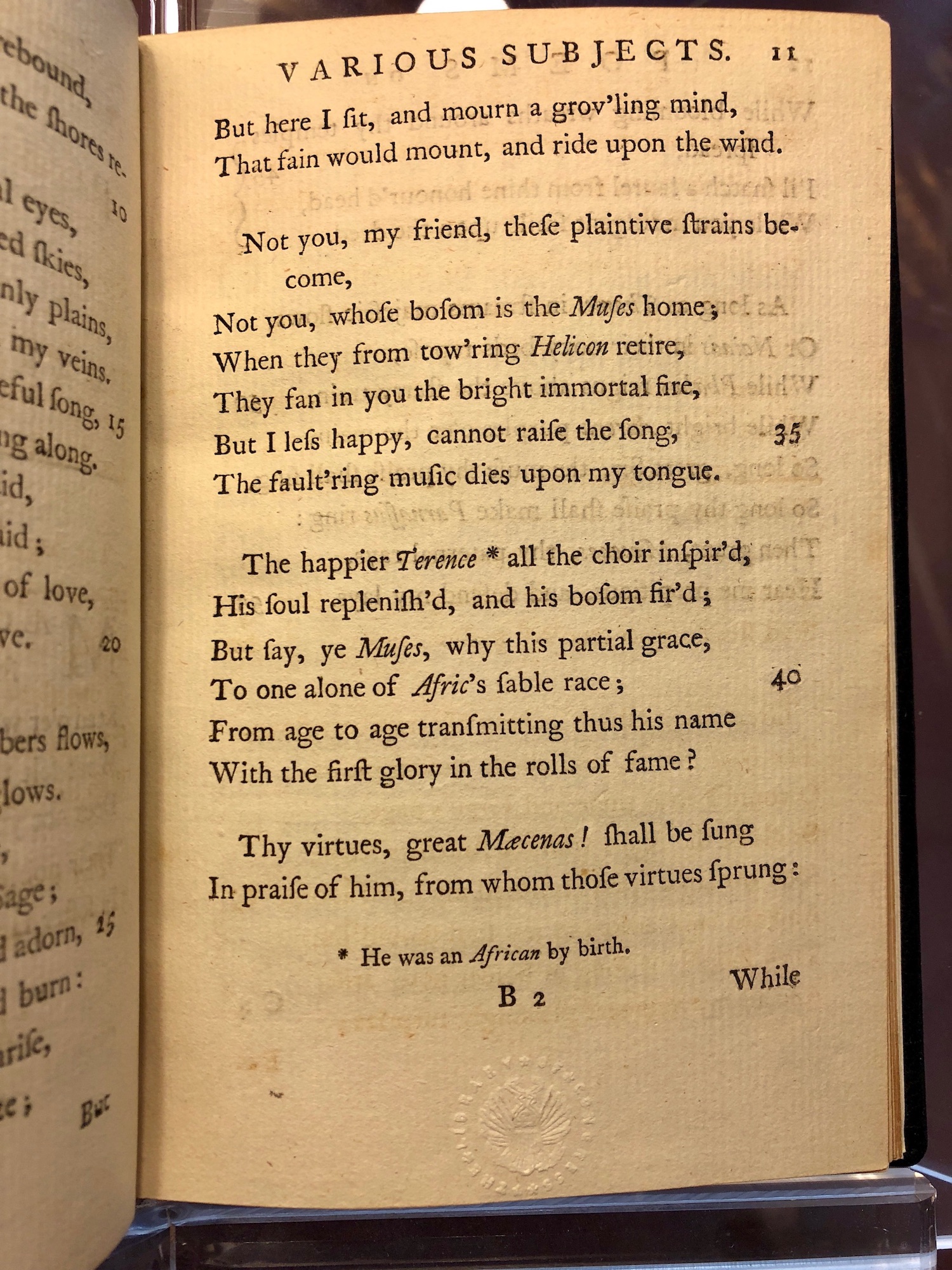
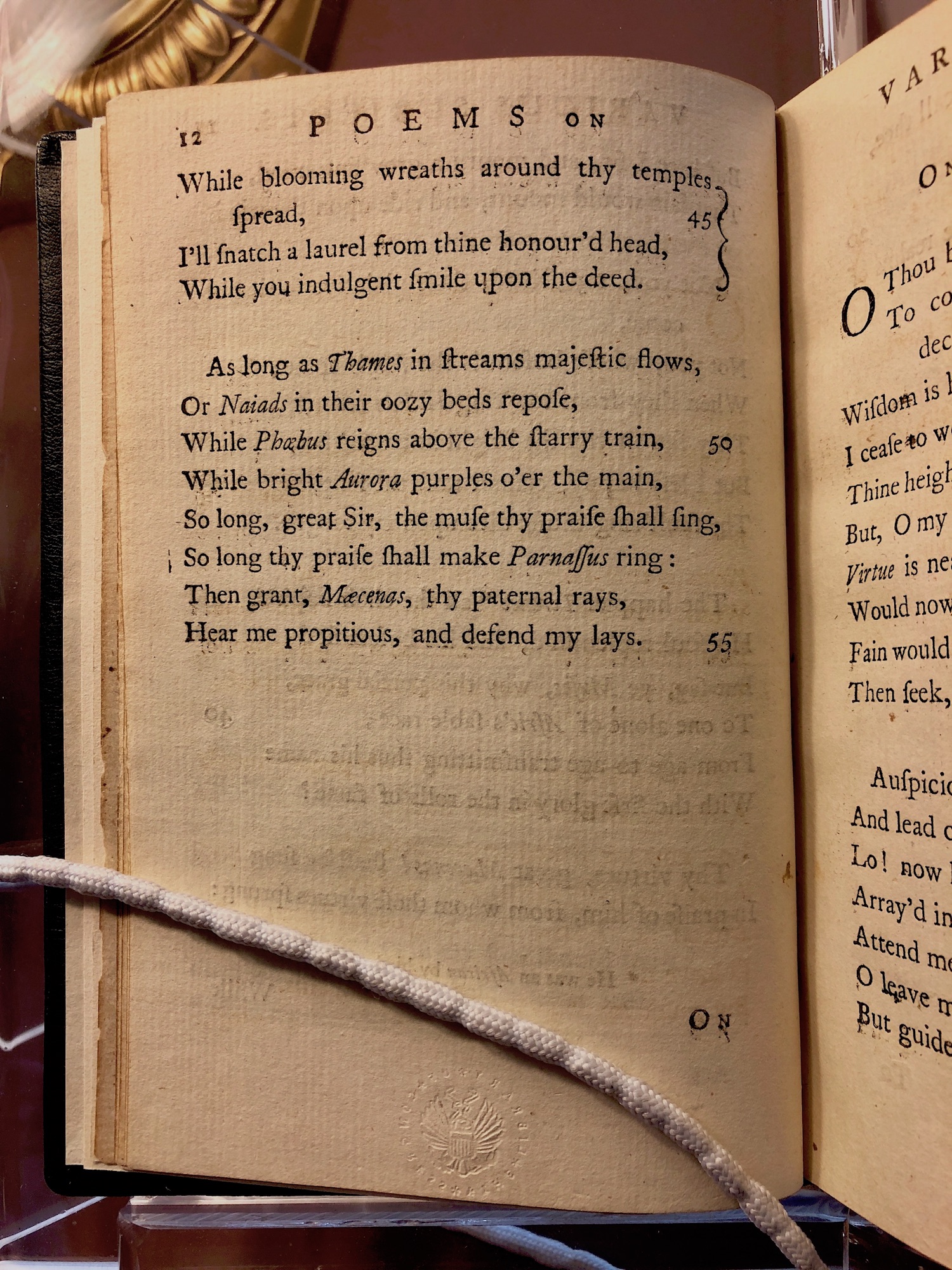

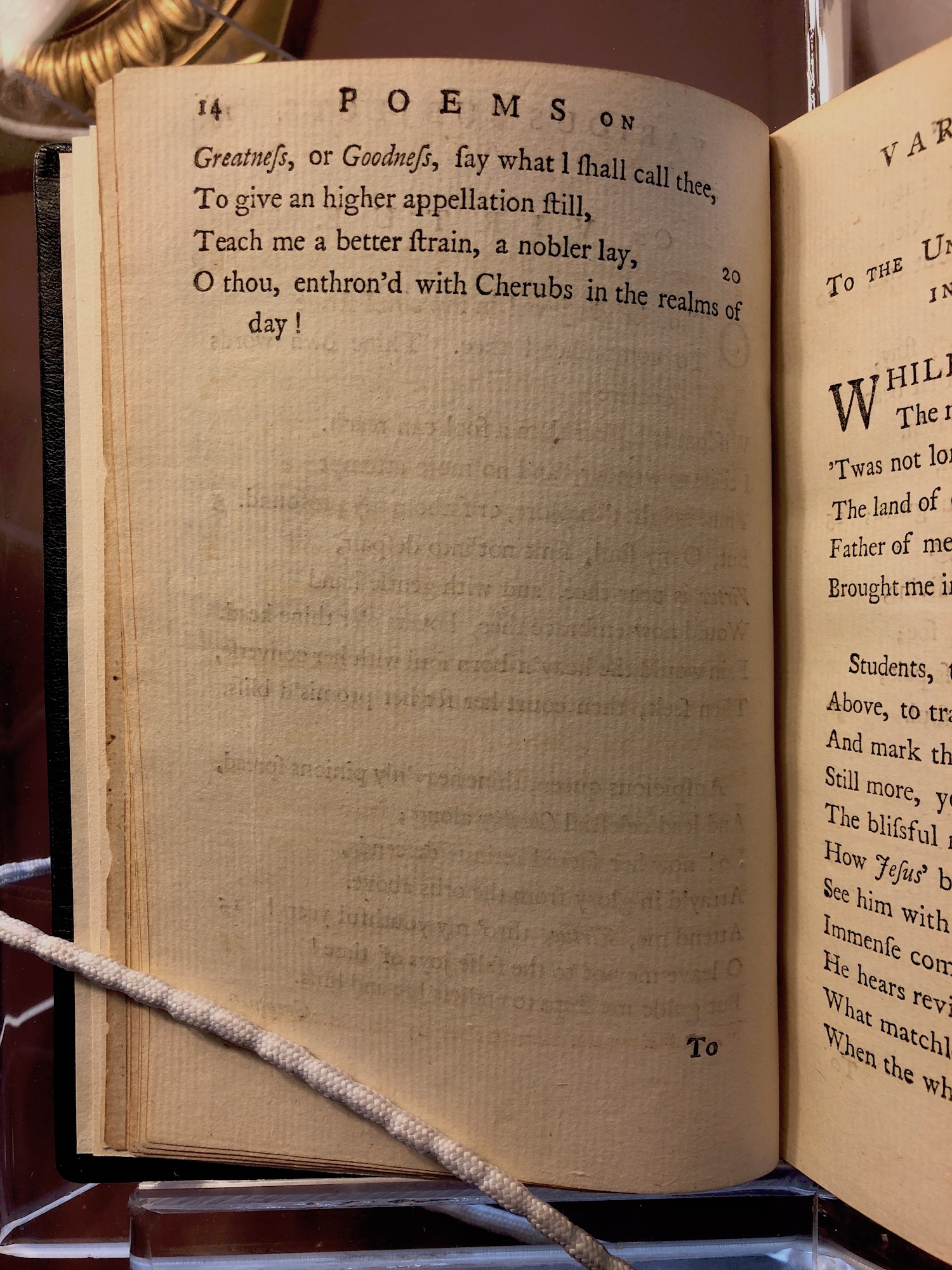




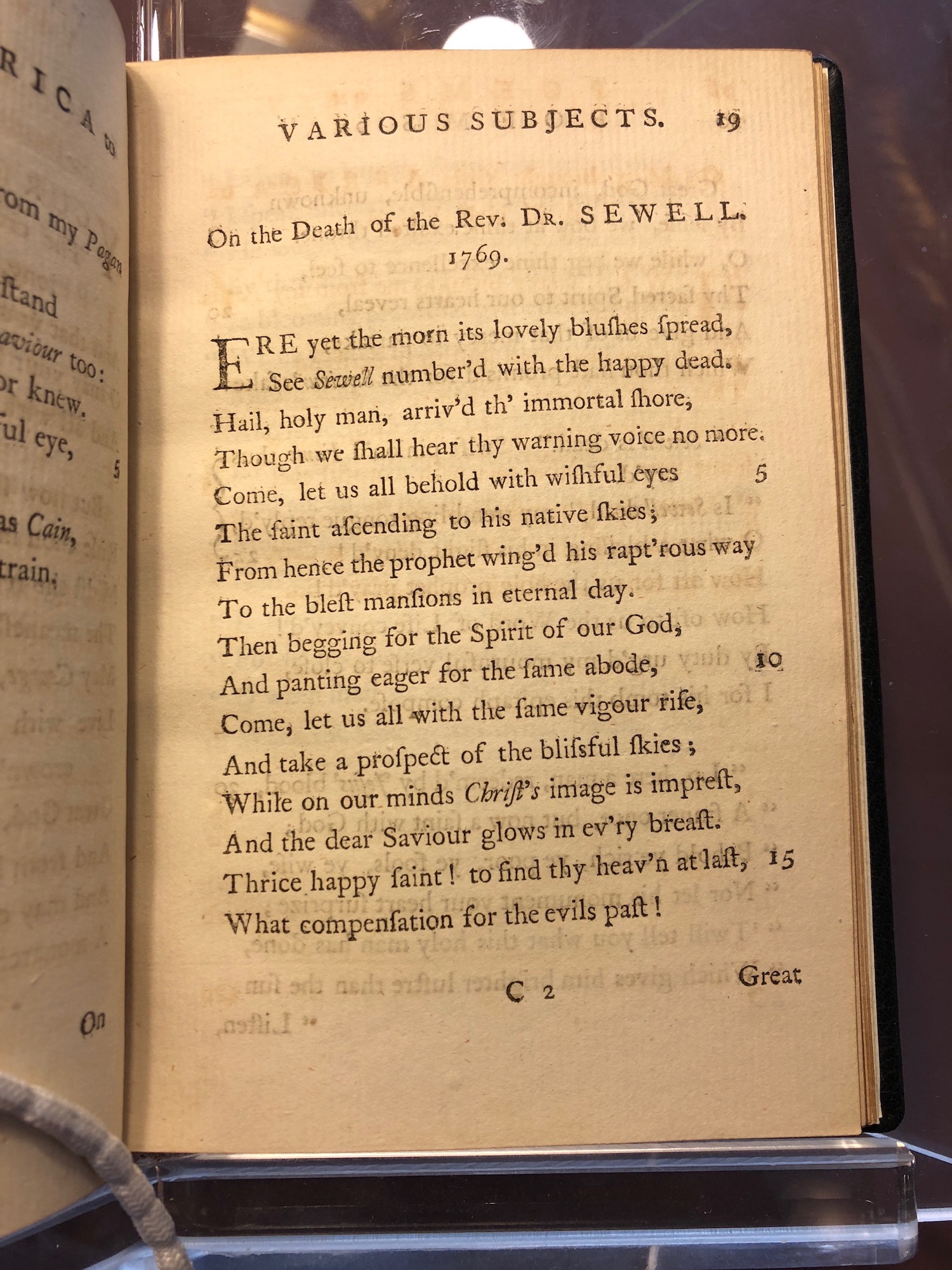
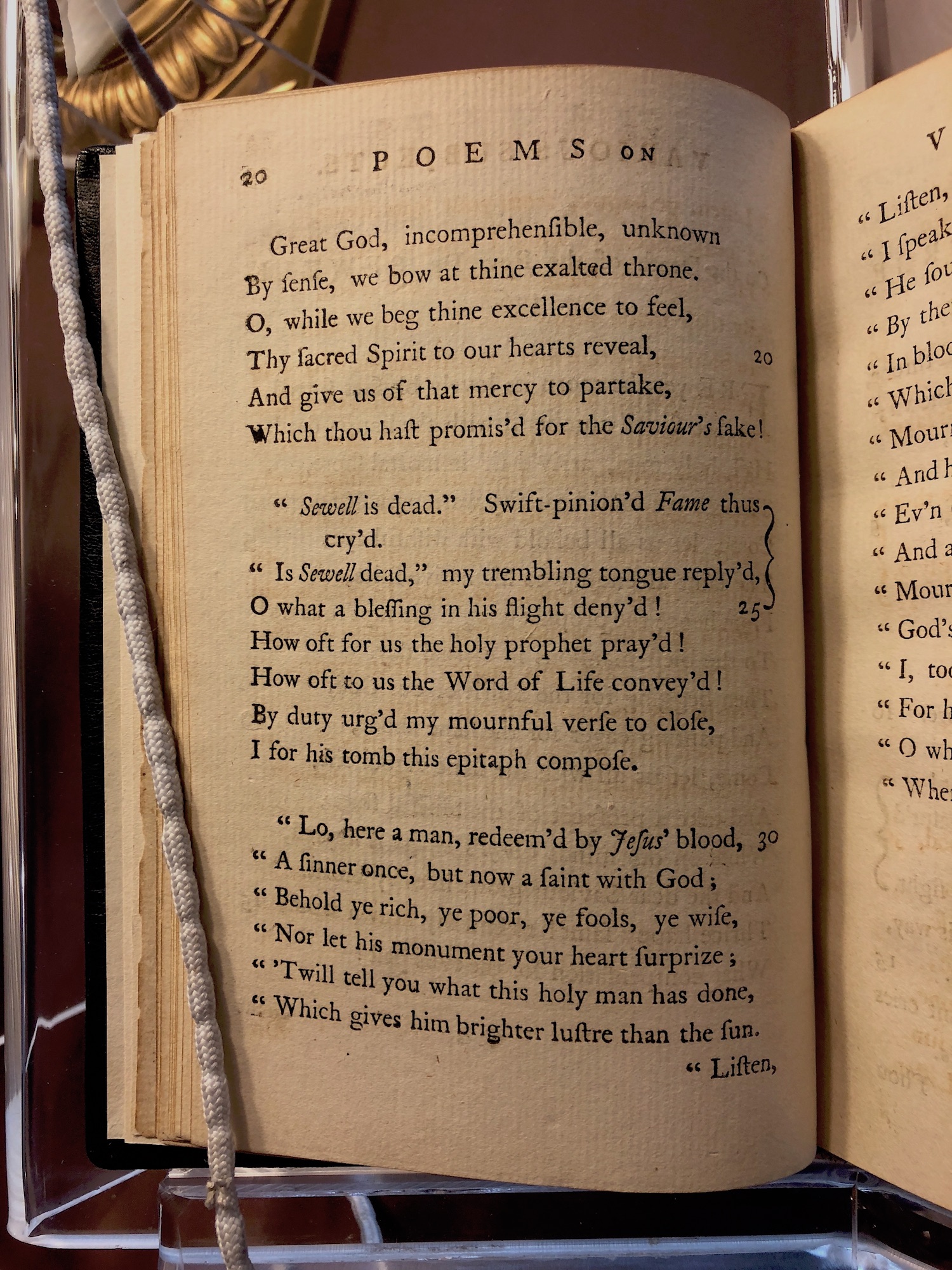
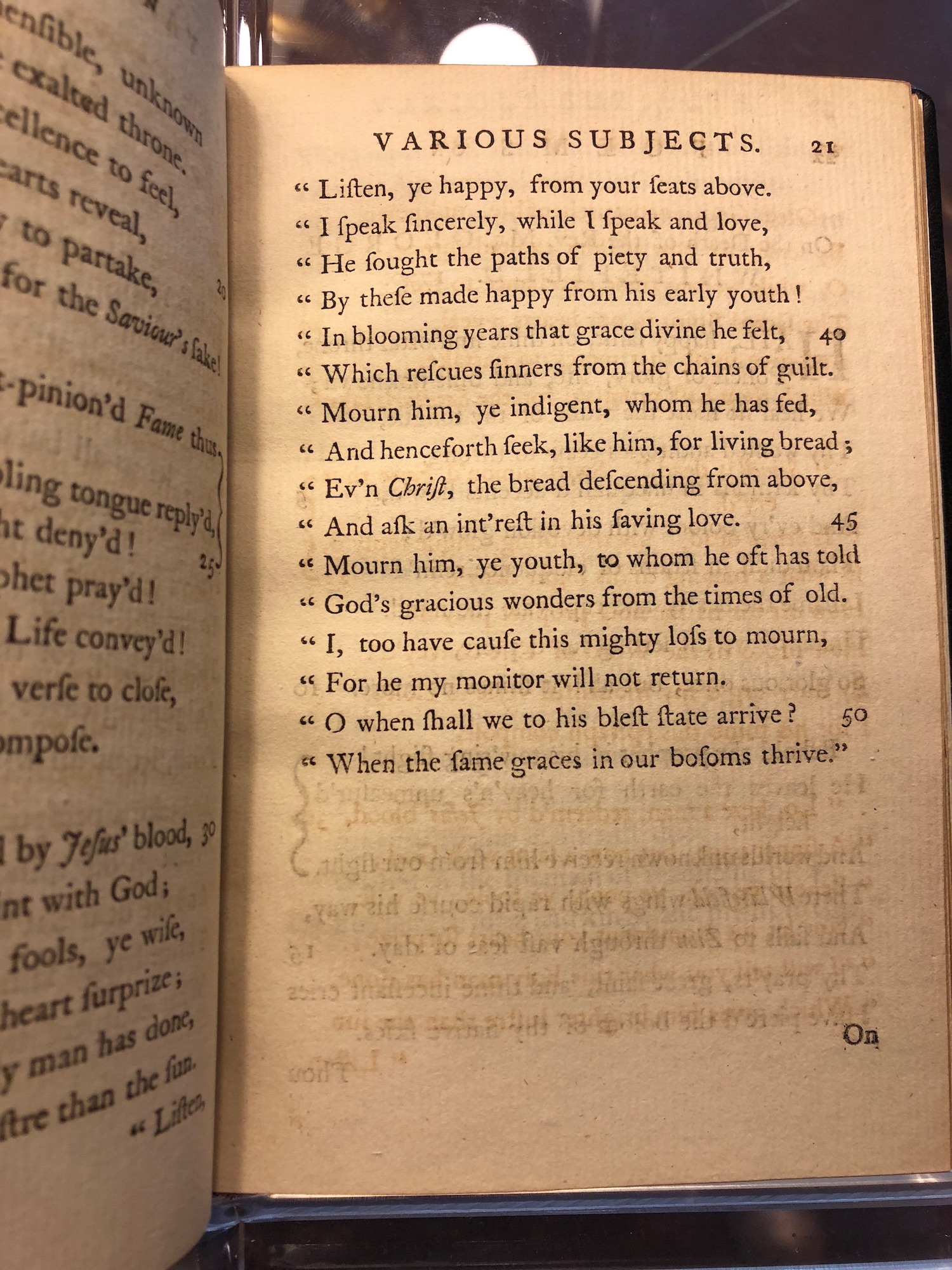

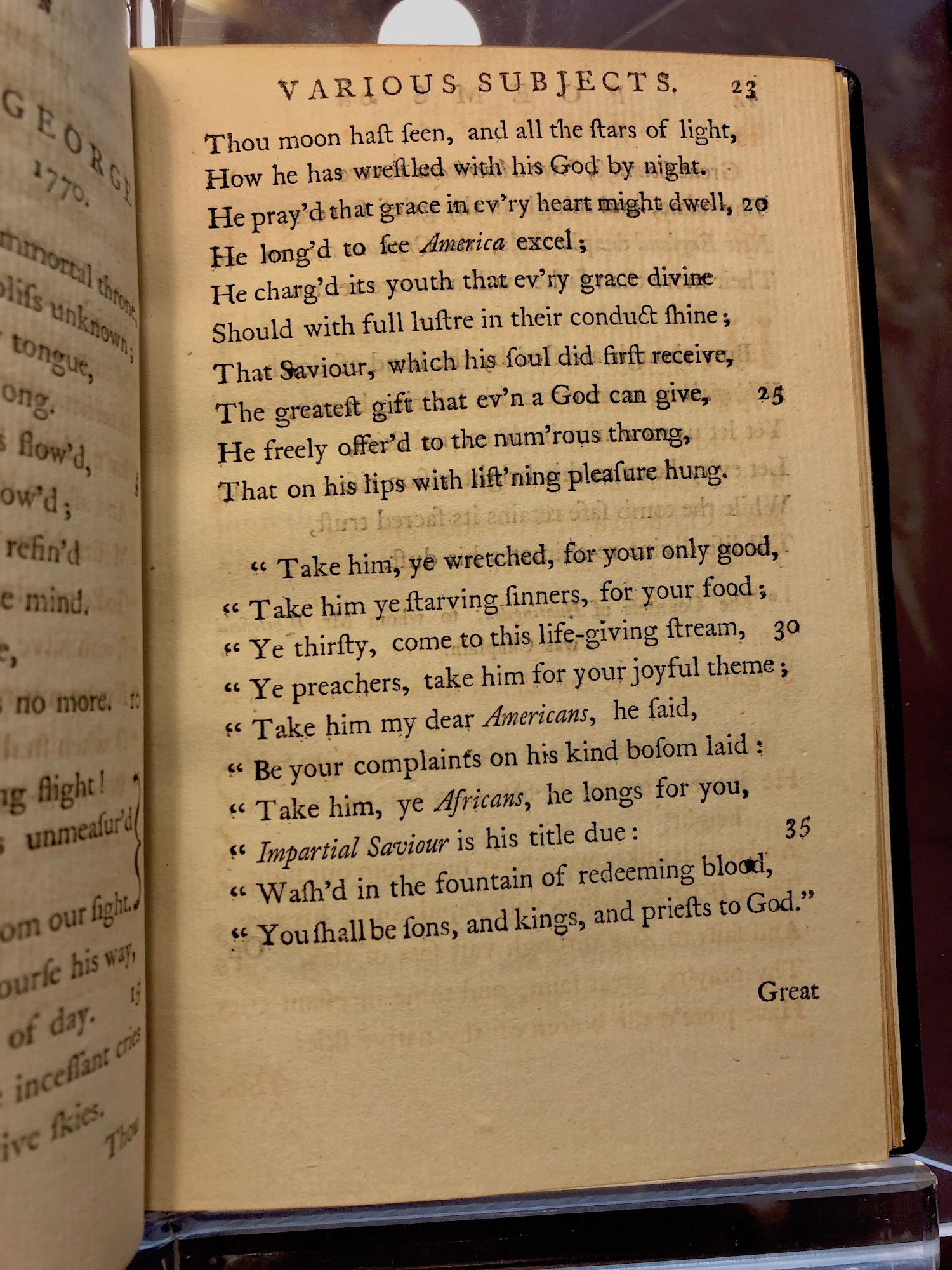
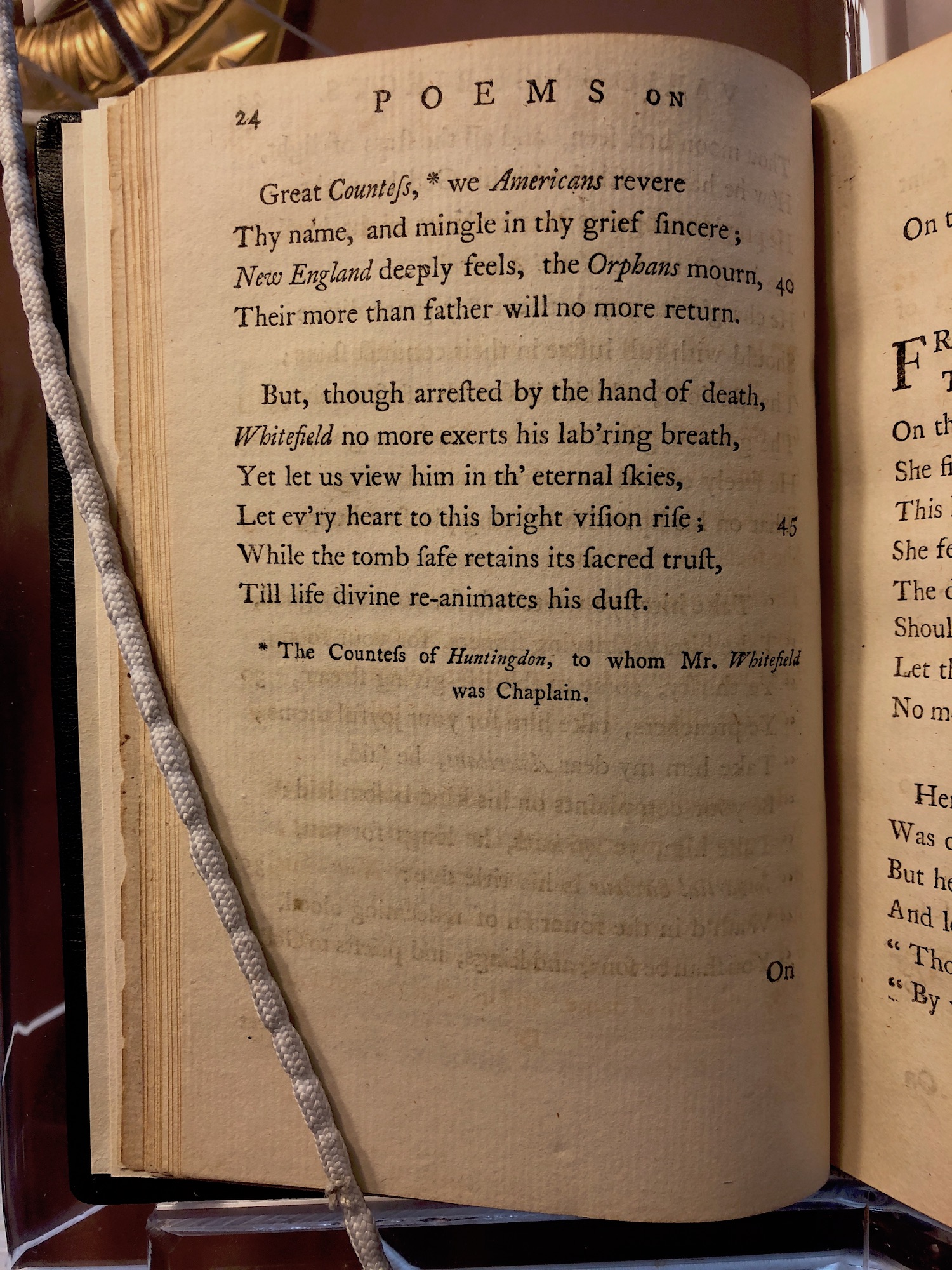
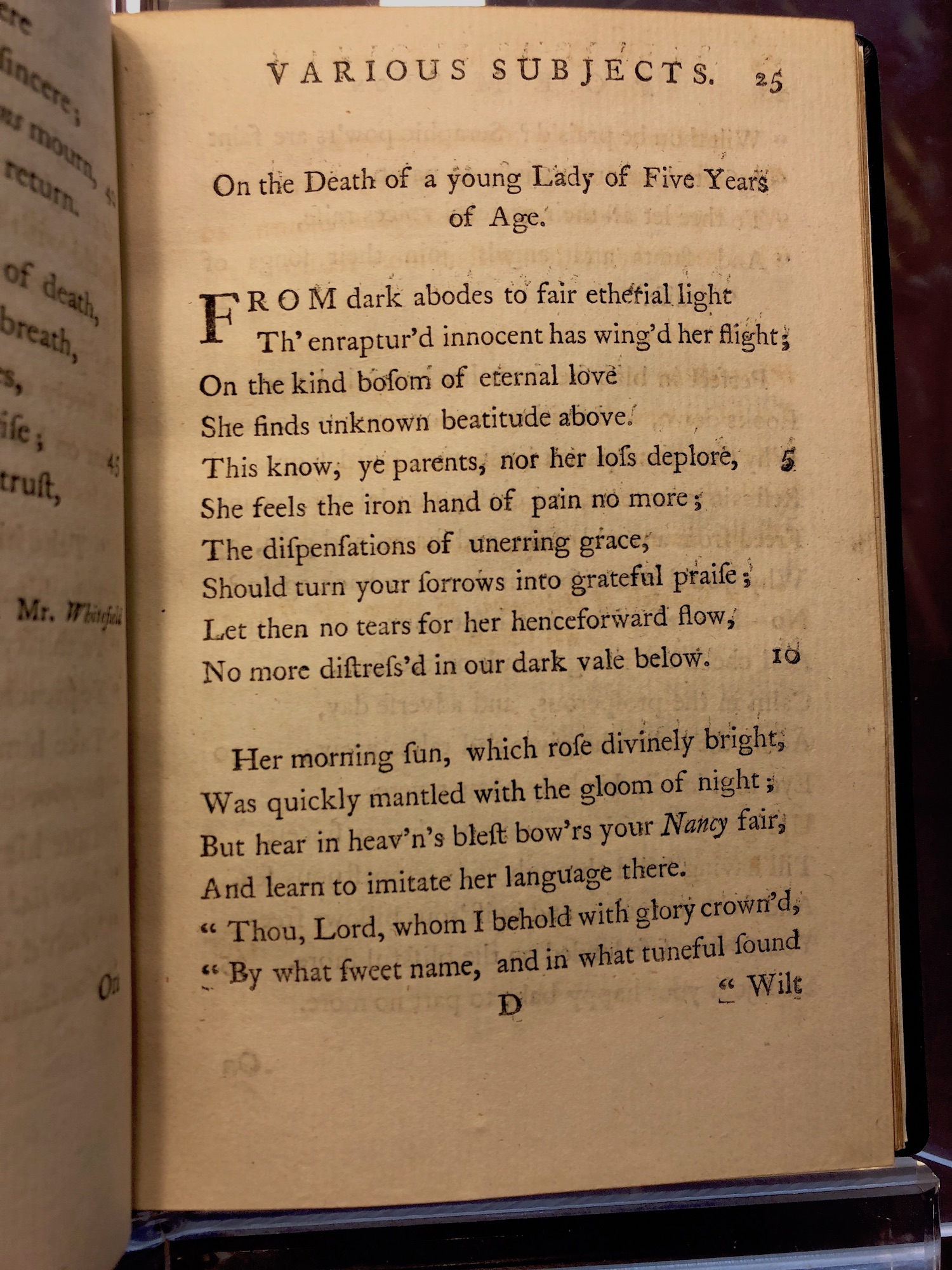
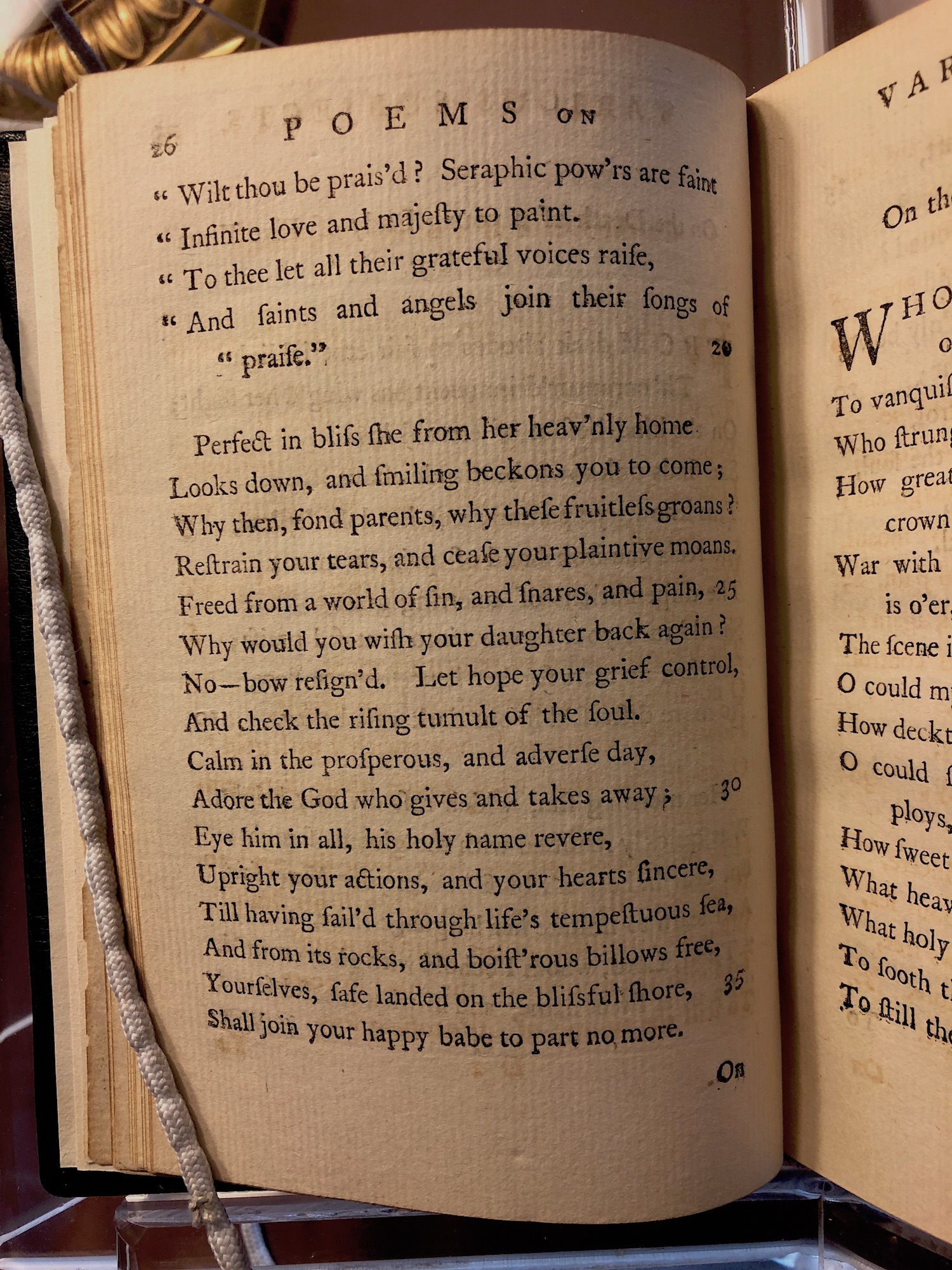
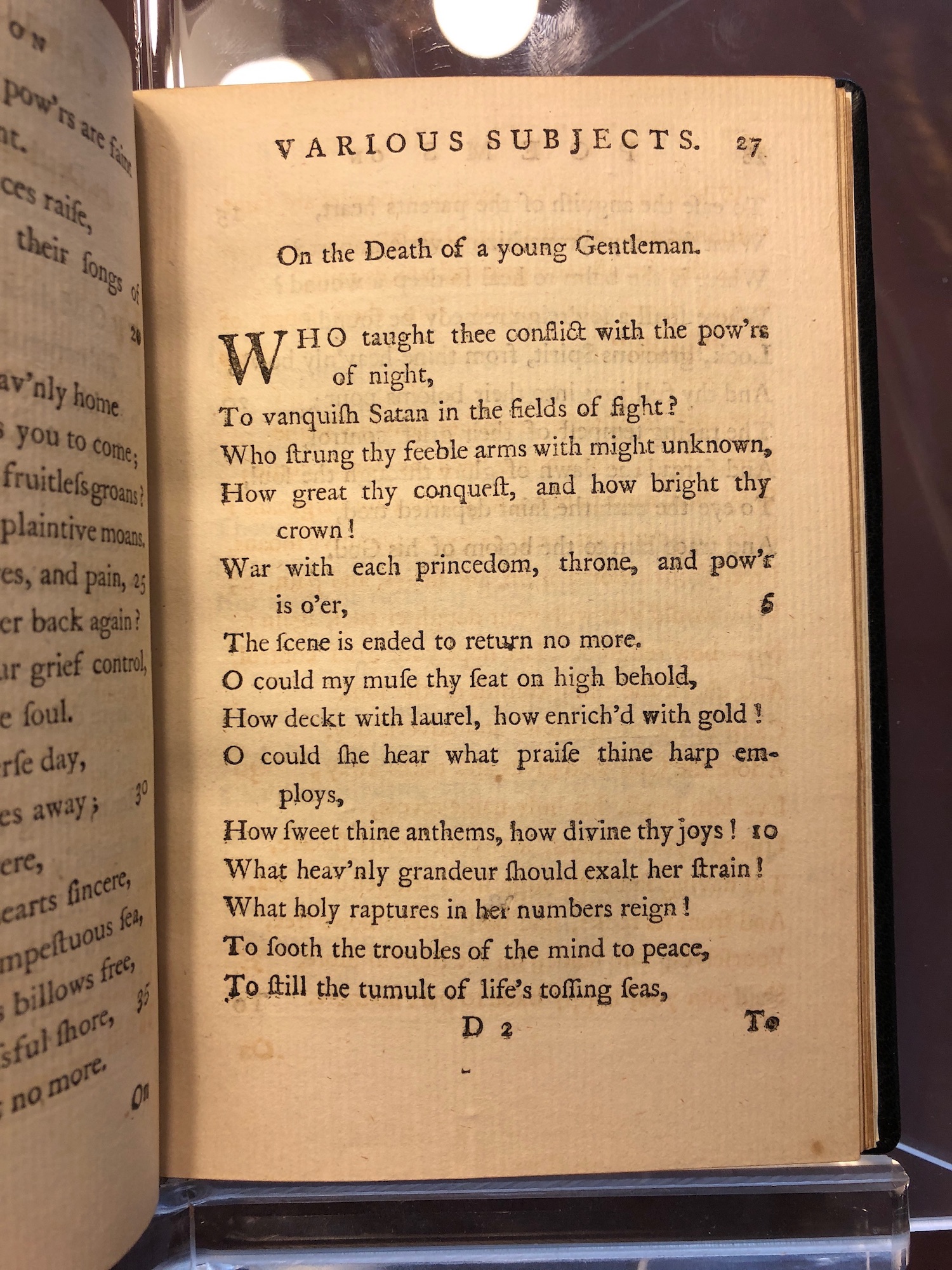
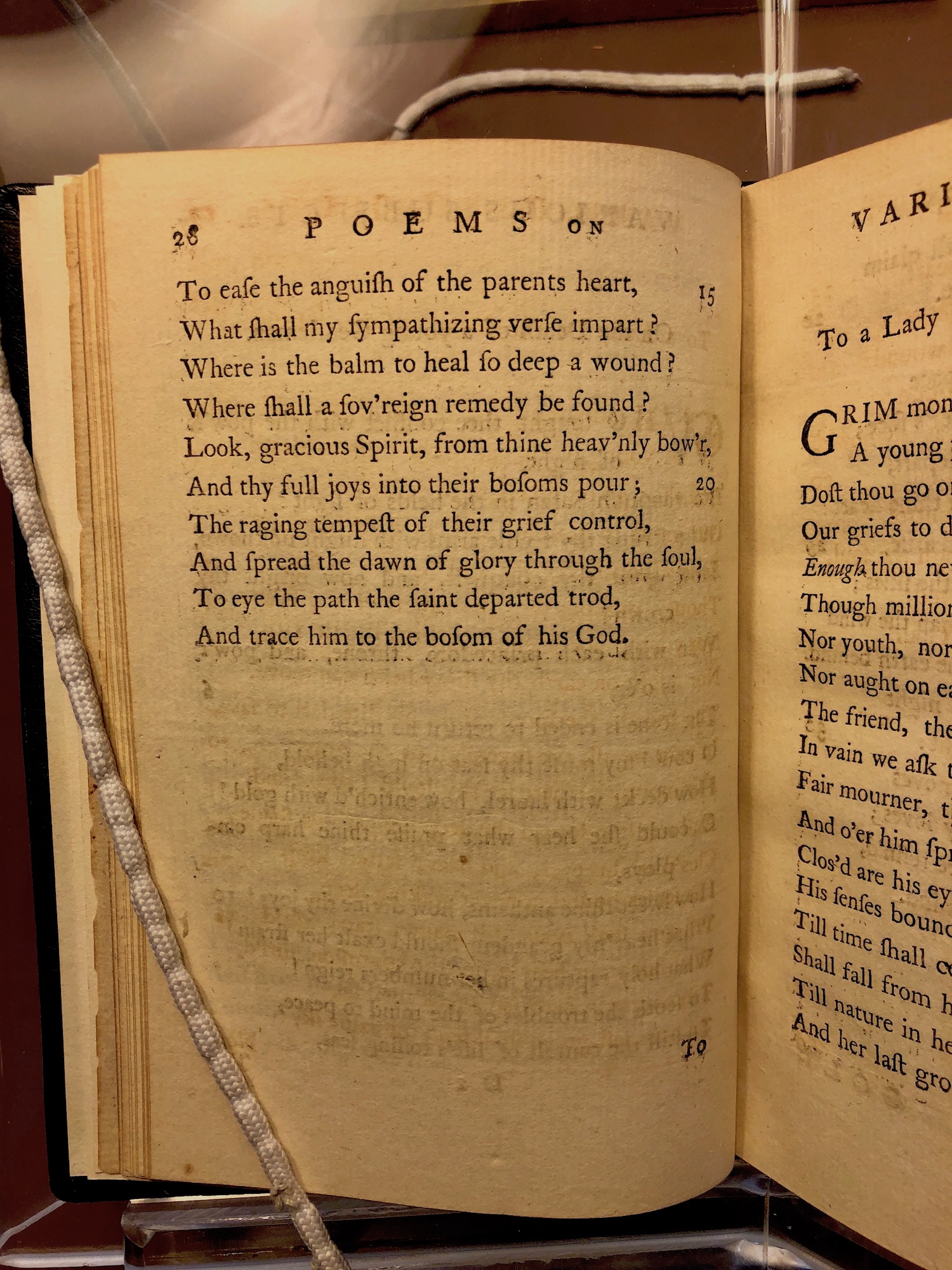
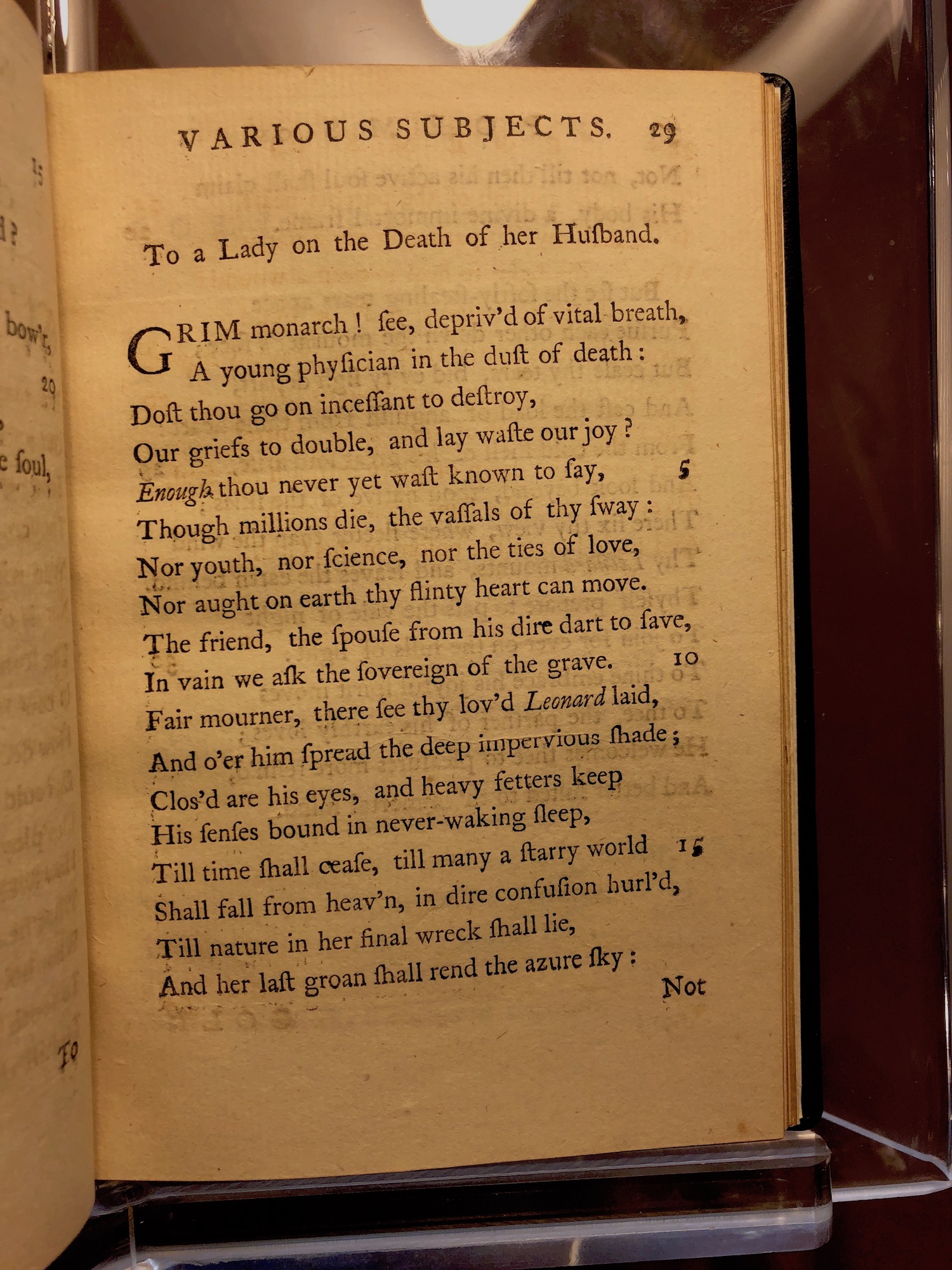


![Page 32 [copy 2]](https://anthologyassetsdev.lib.virginia.edu/wheatley-poems/pageImages/WP-0032c3.jpg)
![Page 33 [copy 2]](https://anthologyassetsdev.lib.virginia.edu/wheatley-poems/pageImages/WP-0033c3.jpg)
![Page 34 [copy 2]](https://anthologyassetsdev.lib.virginia.edu/wheatley-poems/pageImages/WP-0034c3.jpg)
![Page 35 [copy 2]](https://anthologyassetsdev.lib.virginia.edu/wheatley-poems/pageImages/WP-0035c3.jpg)
![Page 36 [copy 2]](https://anthologyassetsdev.lib.virginia.edu/wheatley-poems/pageImages/WP-0036c3.jpg)
![Page 37 [copy 2]](https://anthologyassetsdev.lib.virginia.edu/wheatley-poems/pageImages/WP-0037c3.jpg)
![Page 38 [copy 2]](https://anthologyassetsdev.lib.virginia.edu/wheatley-poems/pageImages/WP-0038c3.jpg)
![Page 39 [copy 2]](https://anthologyassetsdev.lib.virginia.edu/wheatley-poems/pageImages/WP-0039c3.jpg)
![Page 40 [copy 2]](https://anthologyassetsdev.lib.virginia.edu/wheatley-poems/pageImages/WP-0040c3.jpg)


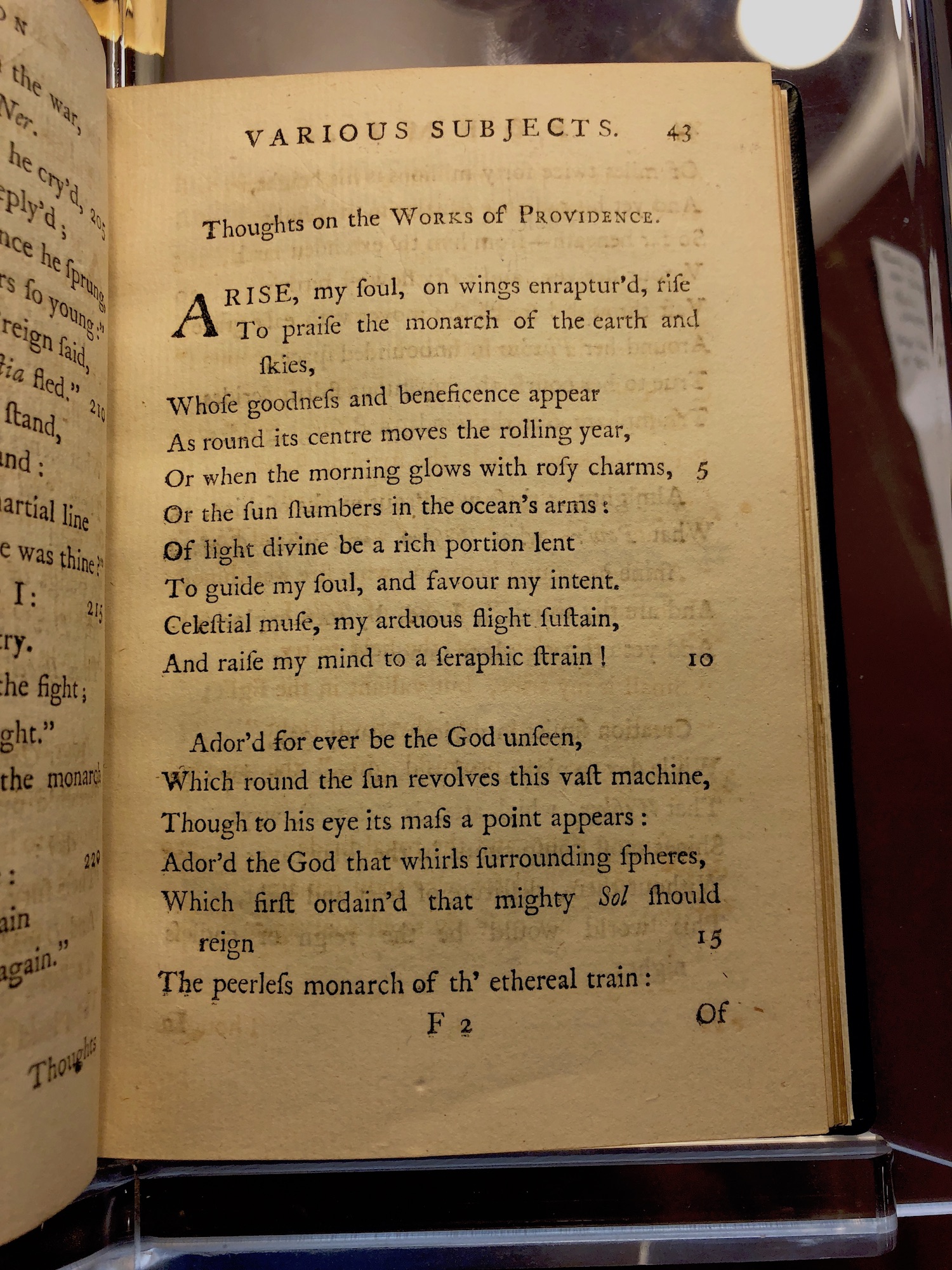
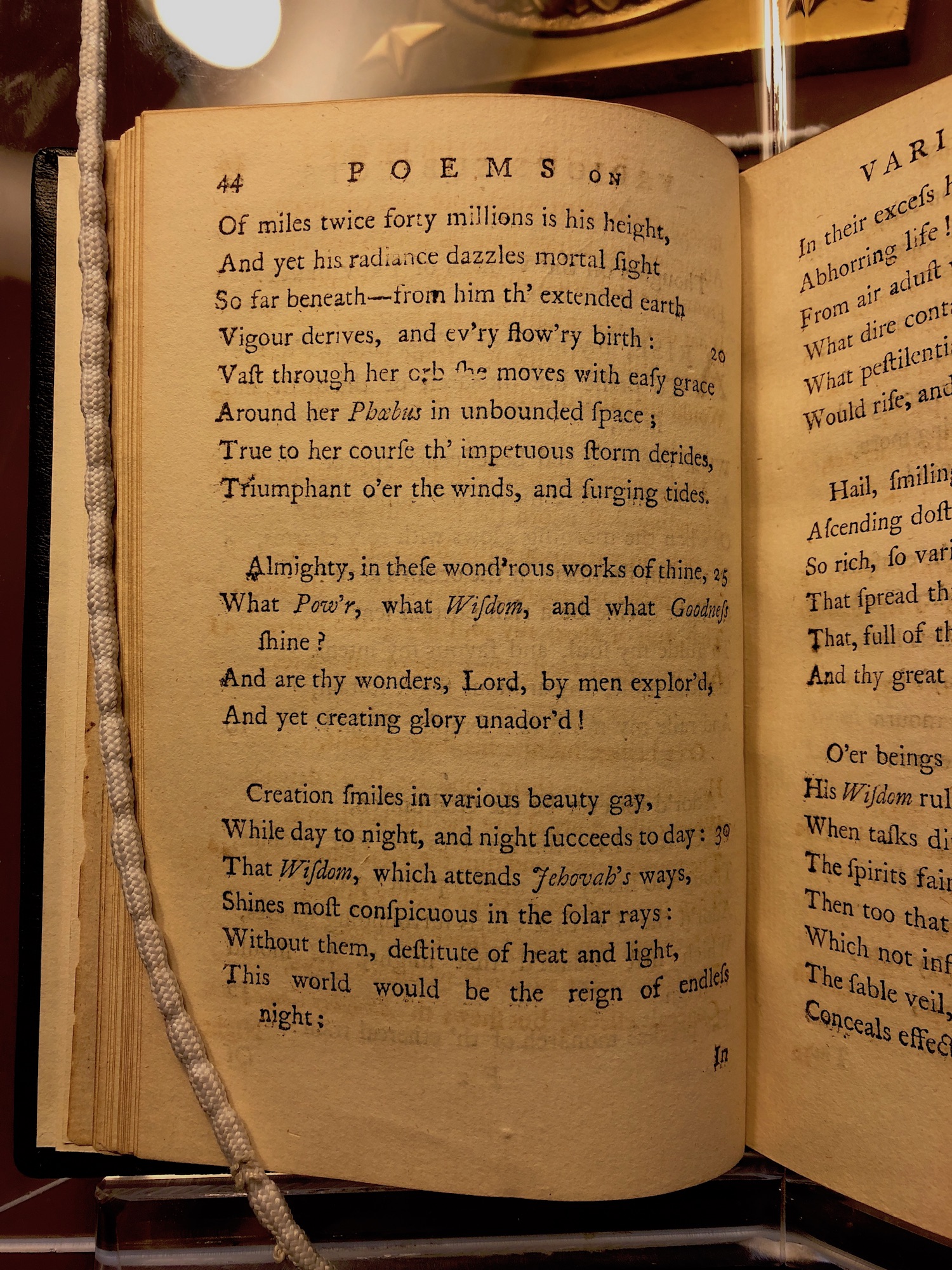


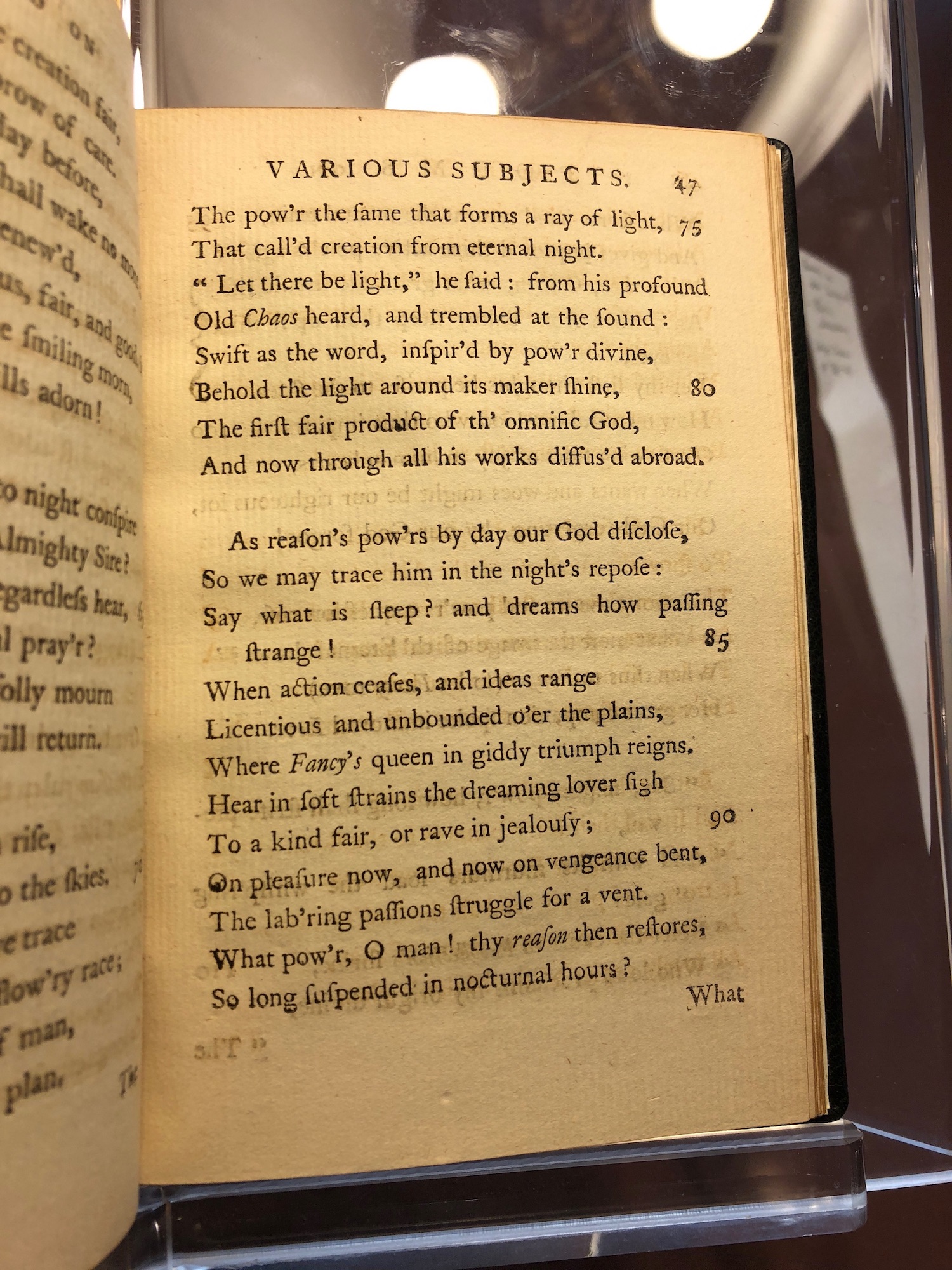
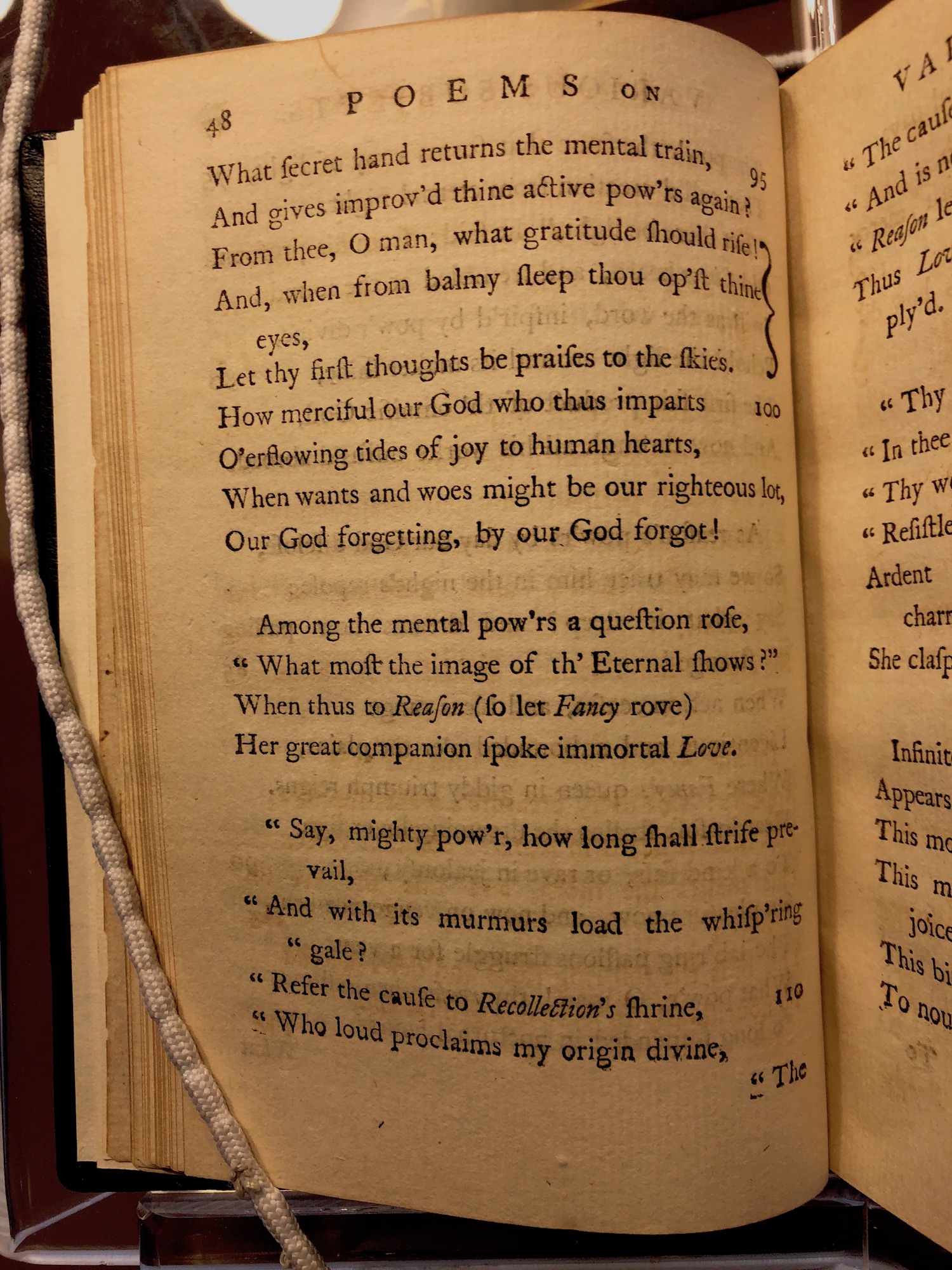


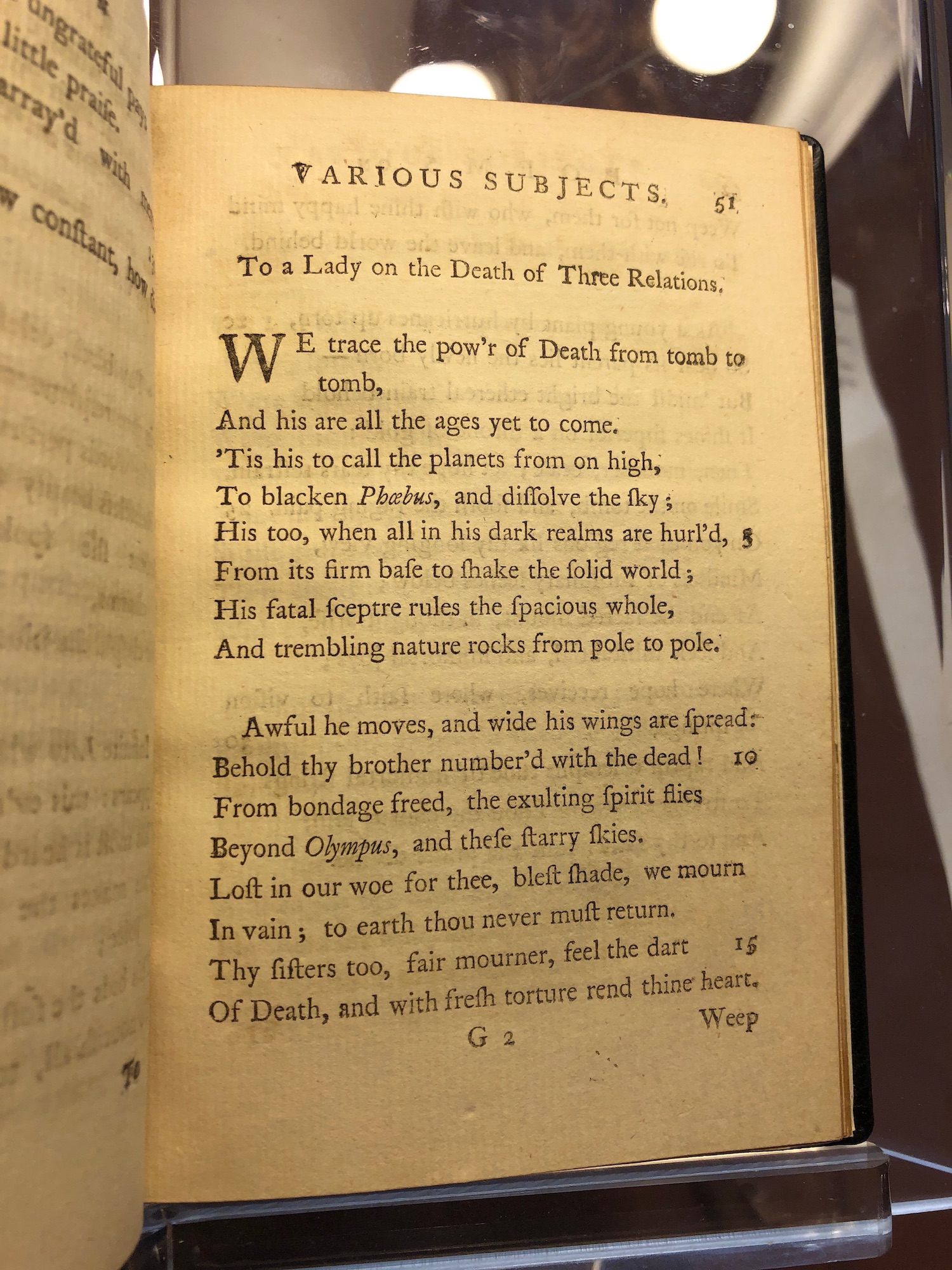
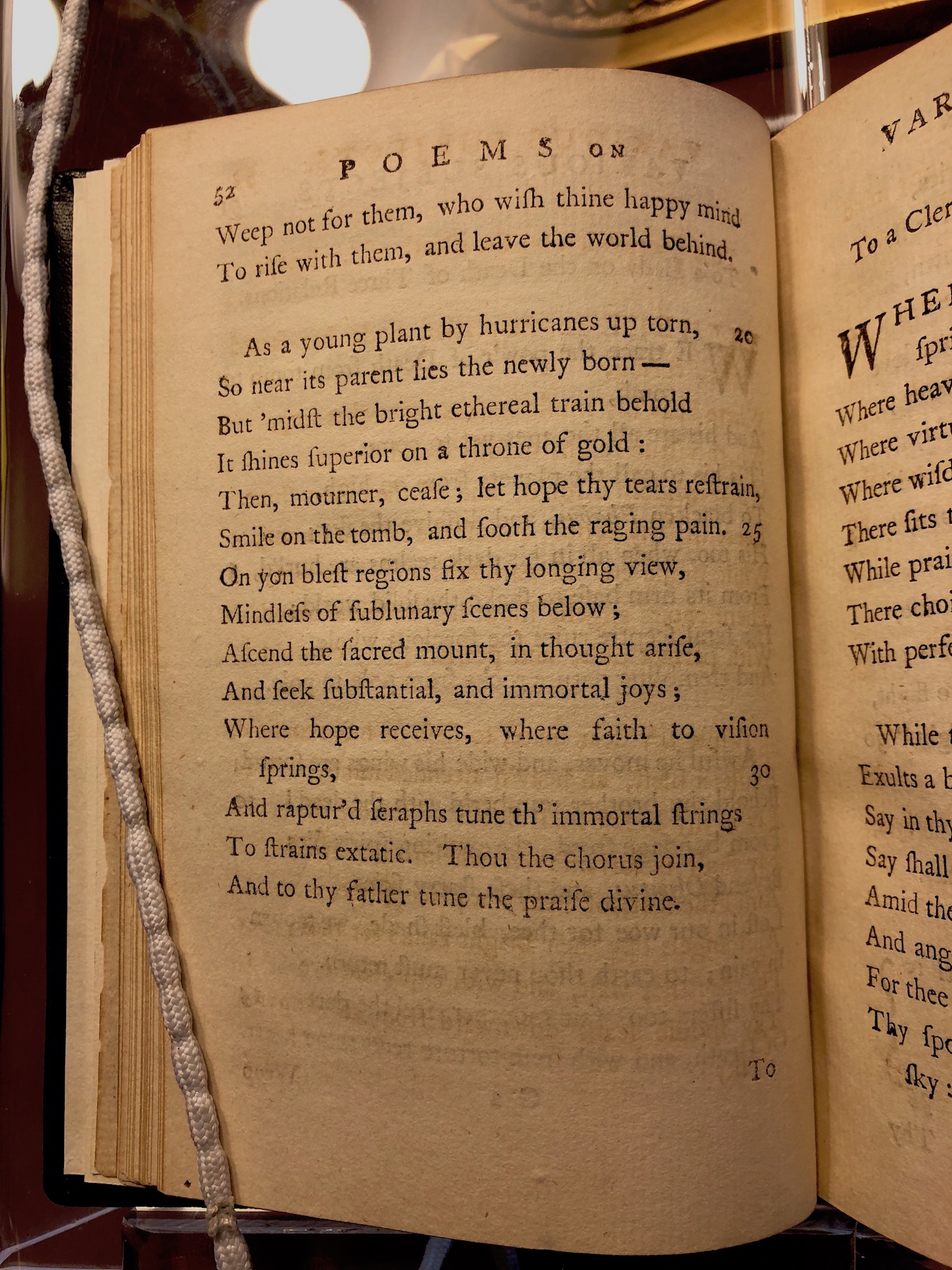
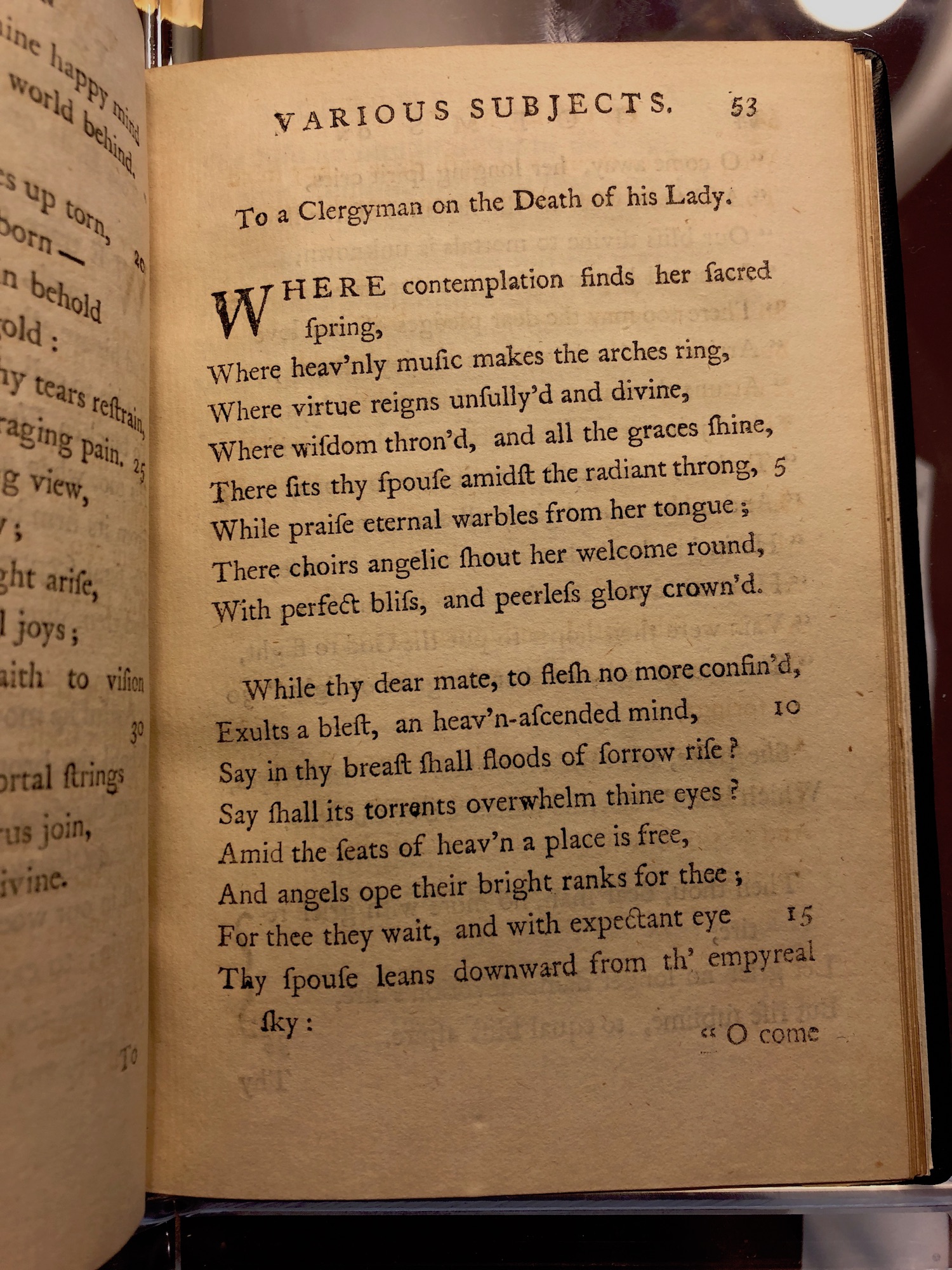

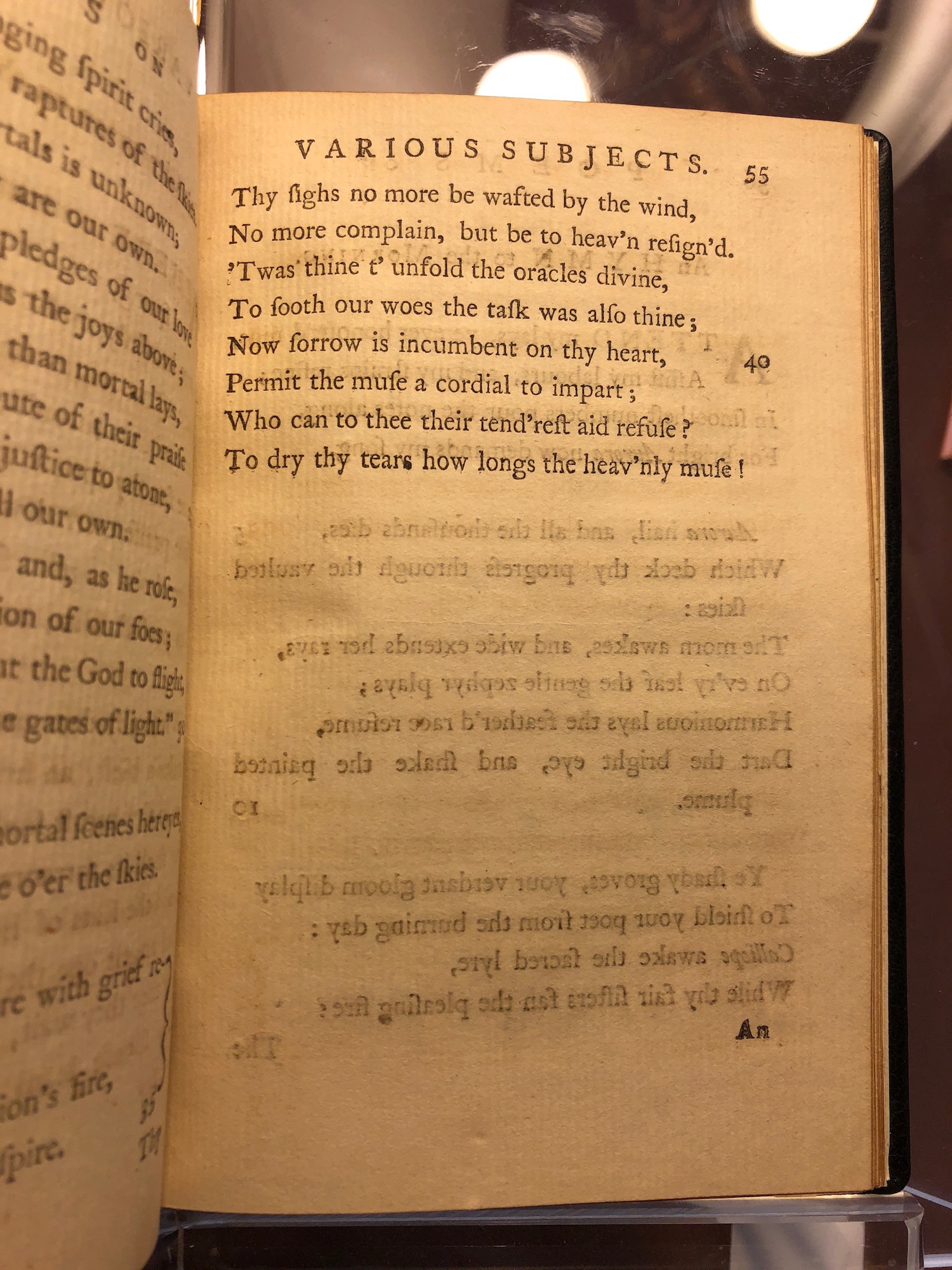
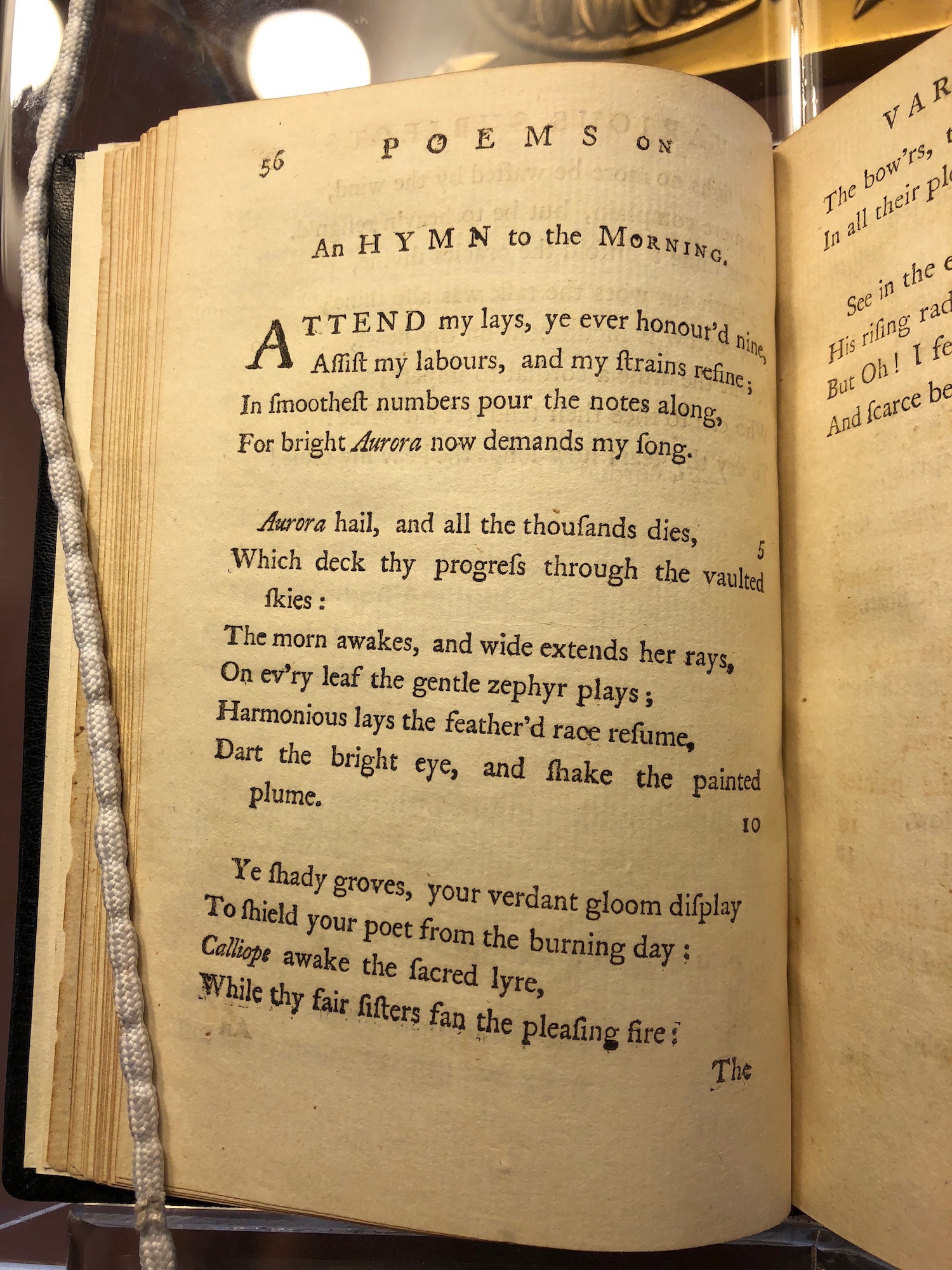

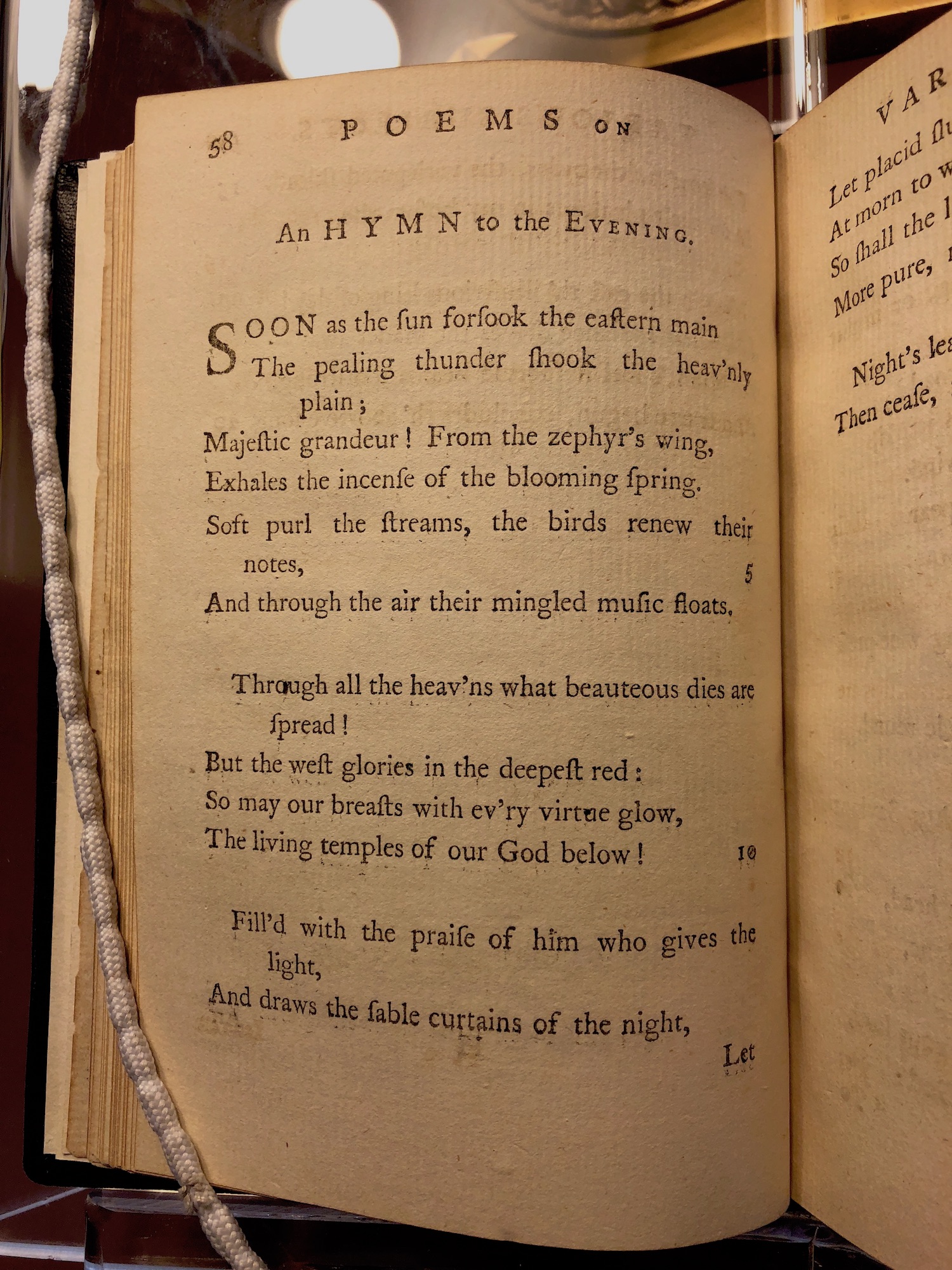
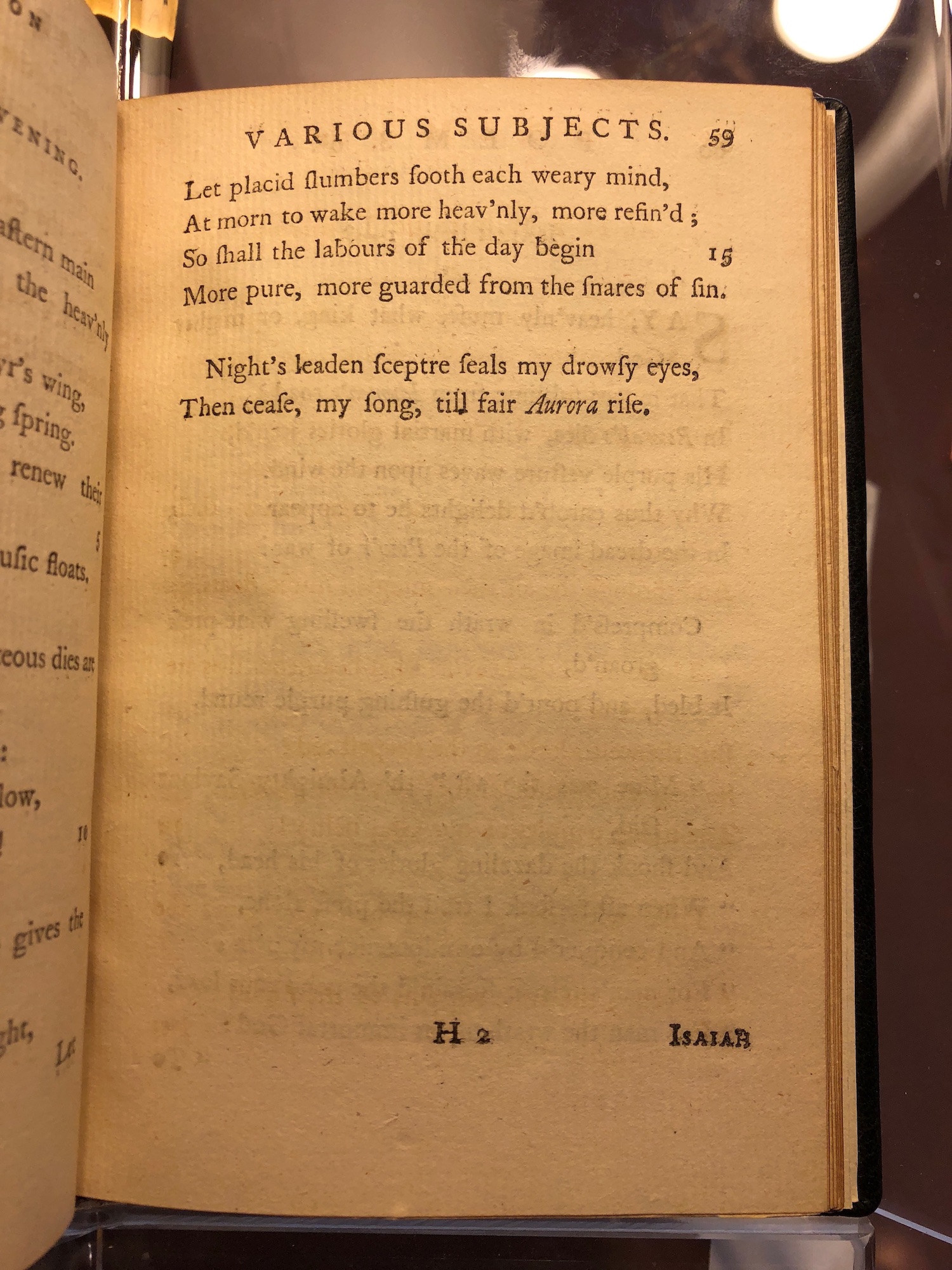


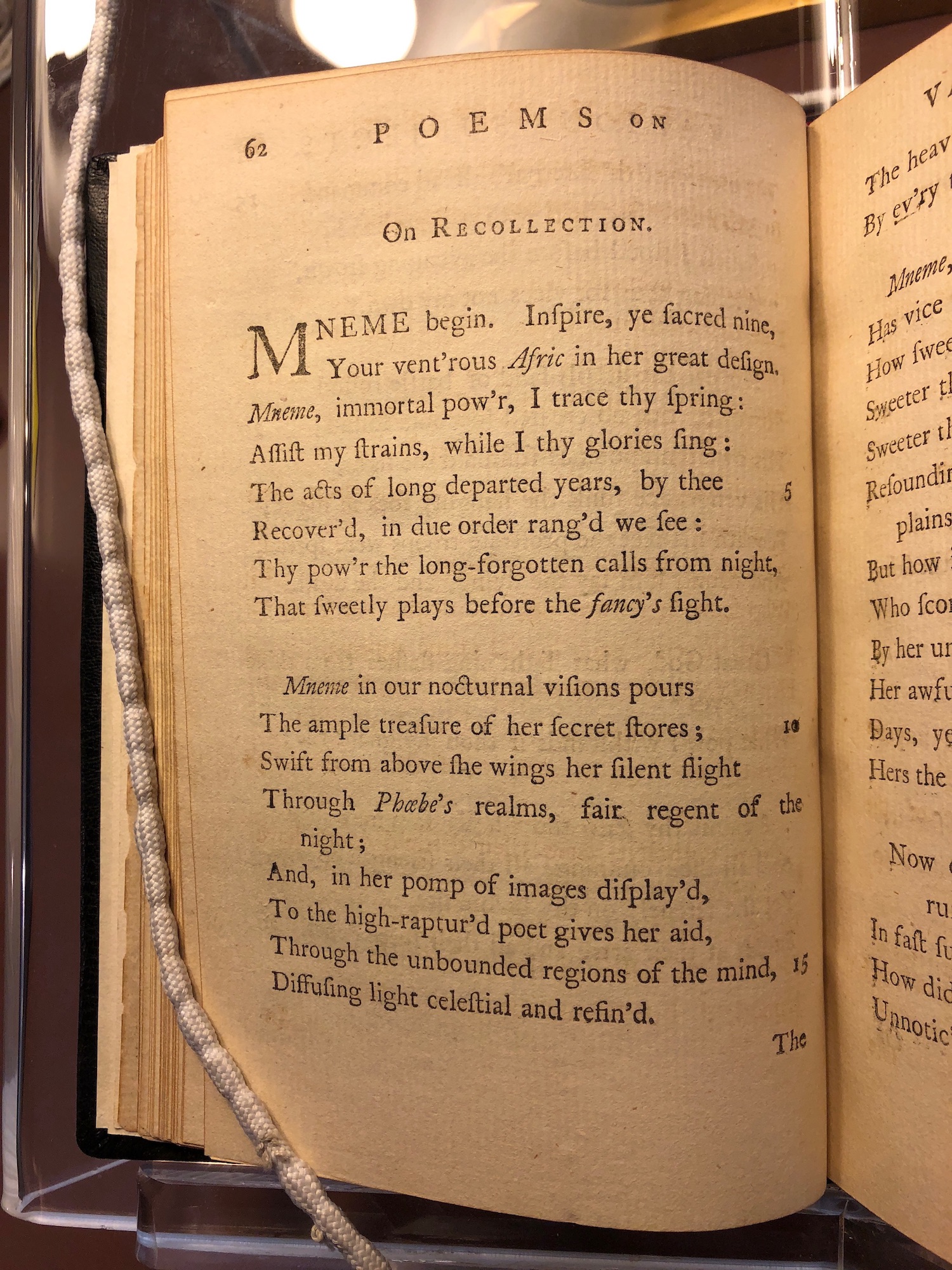
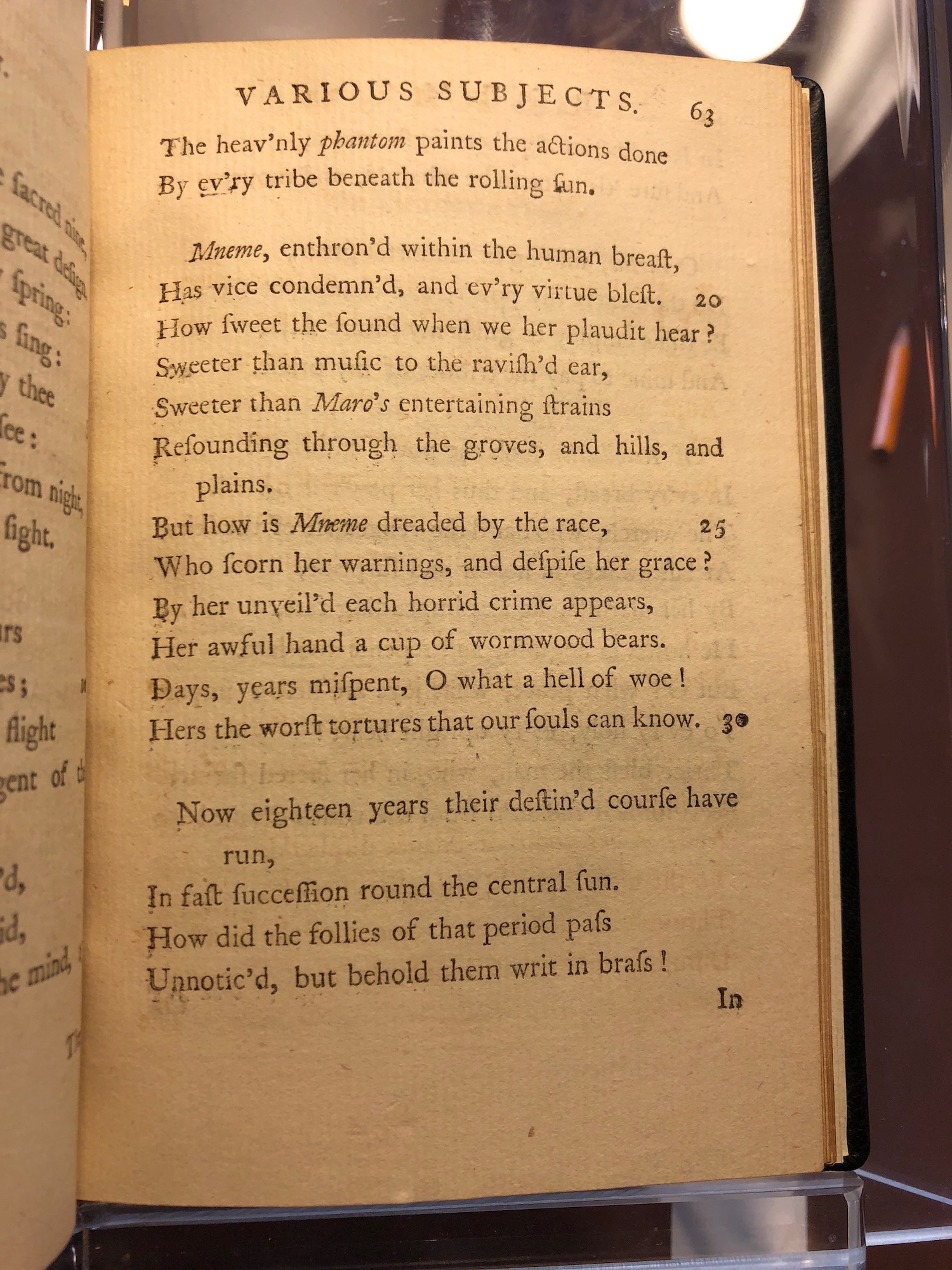


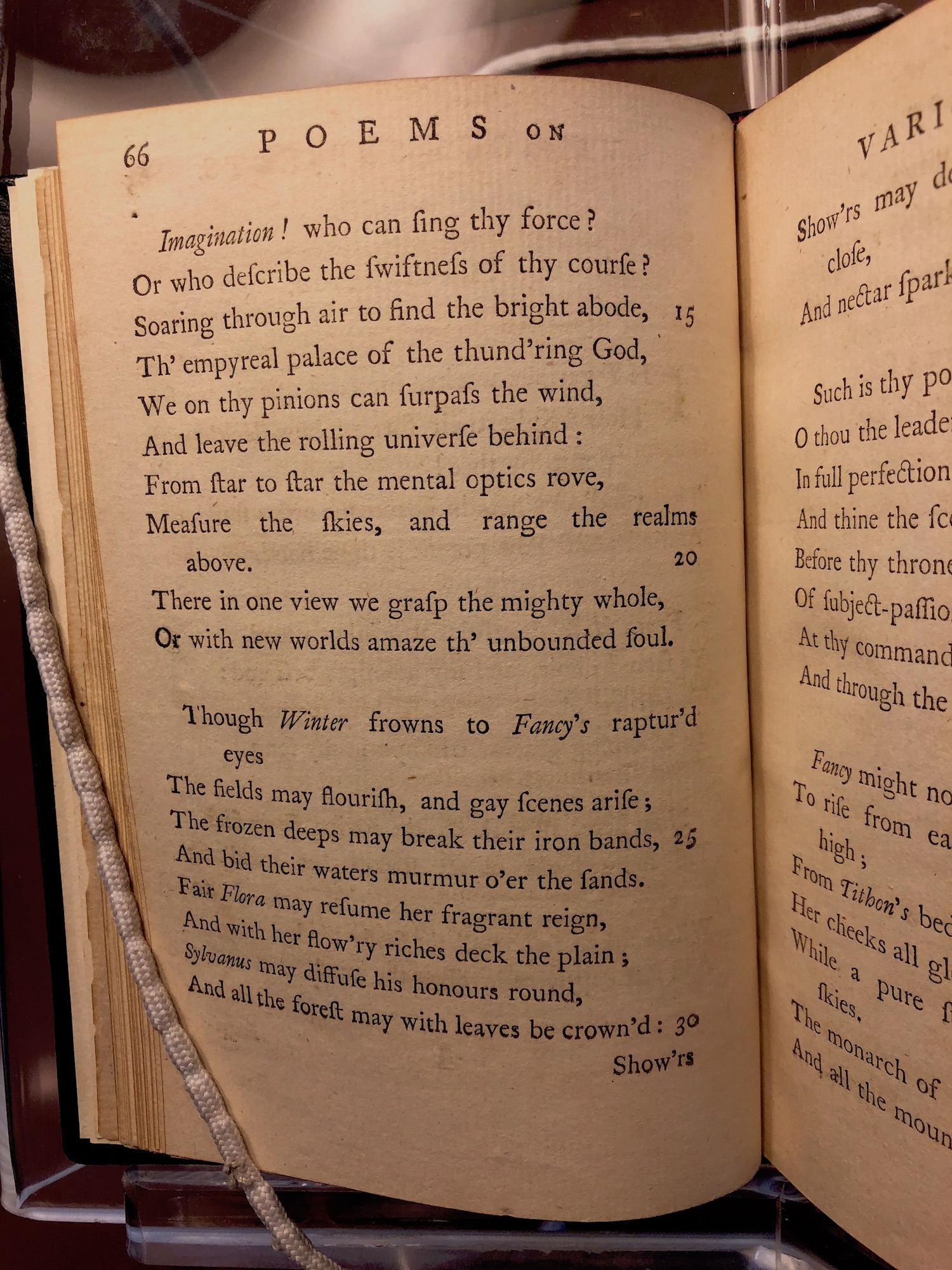

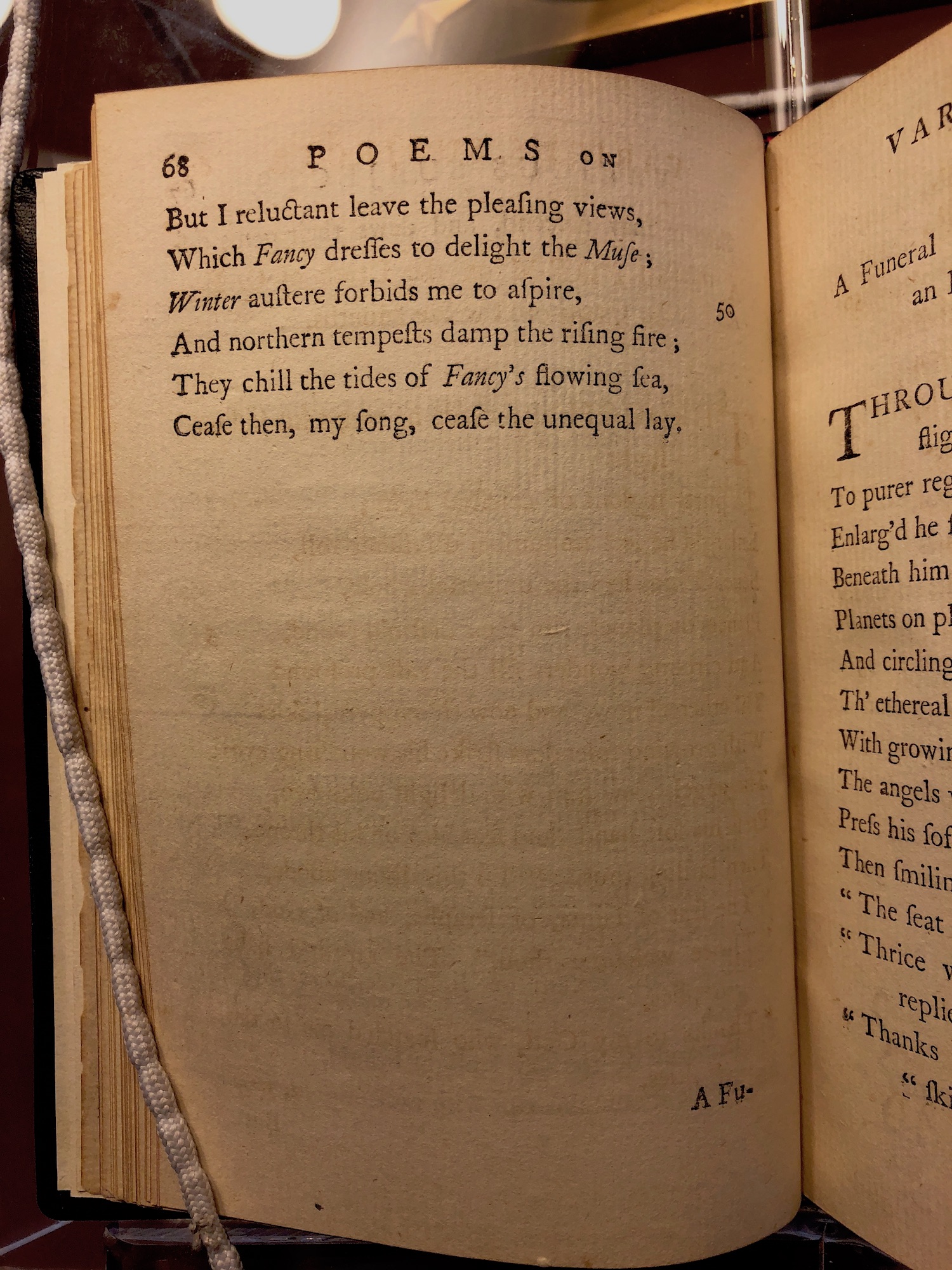

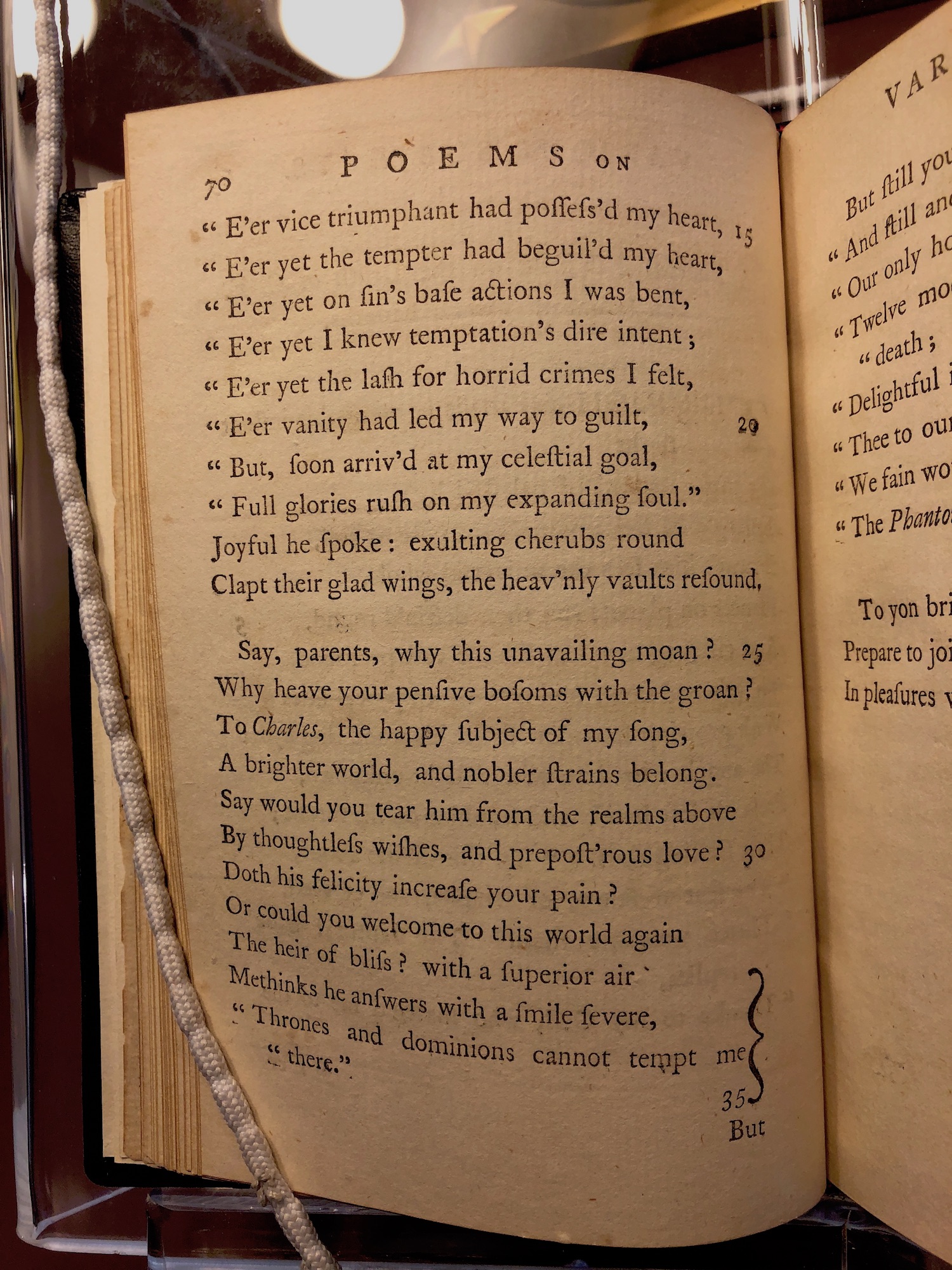
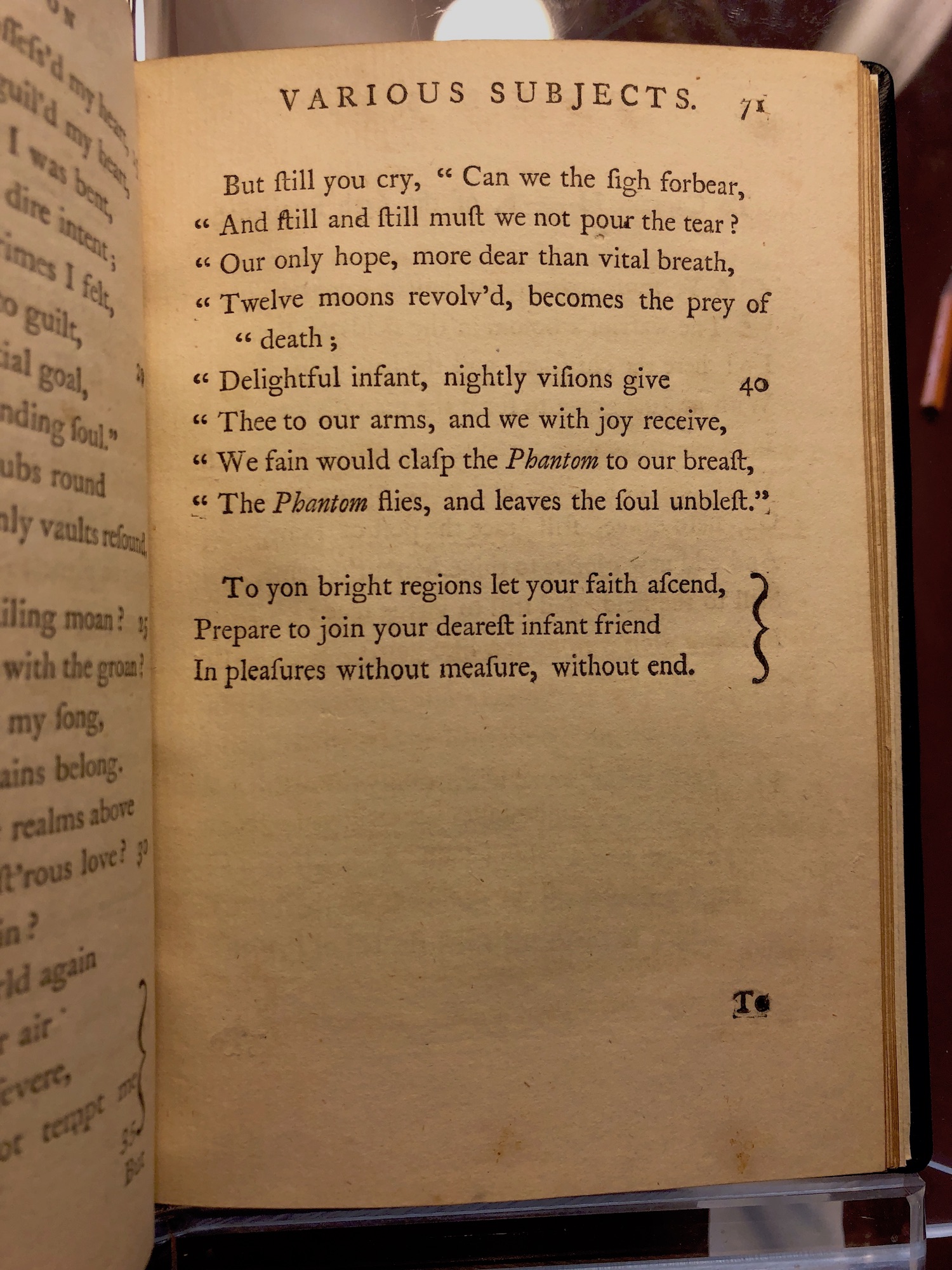


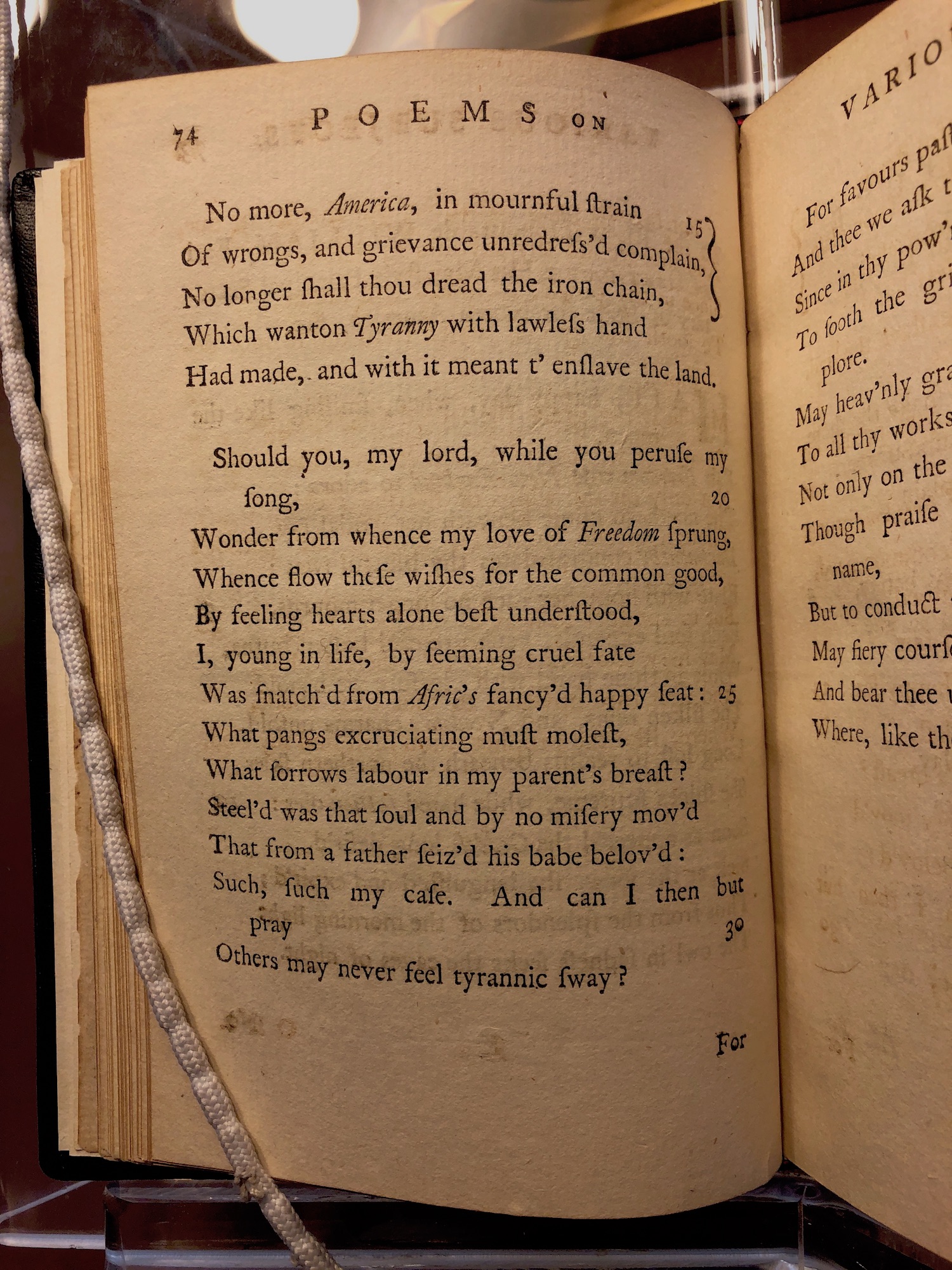

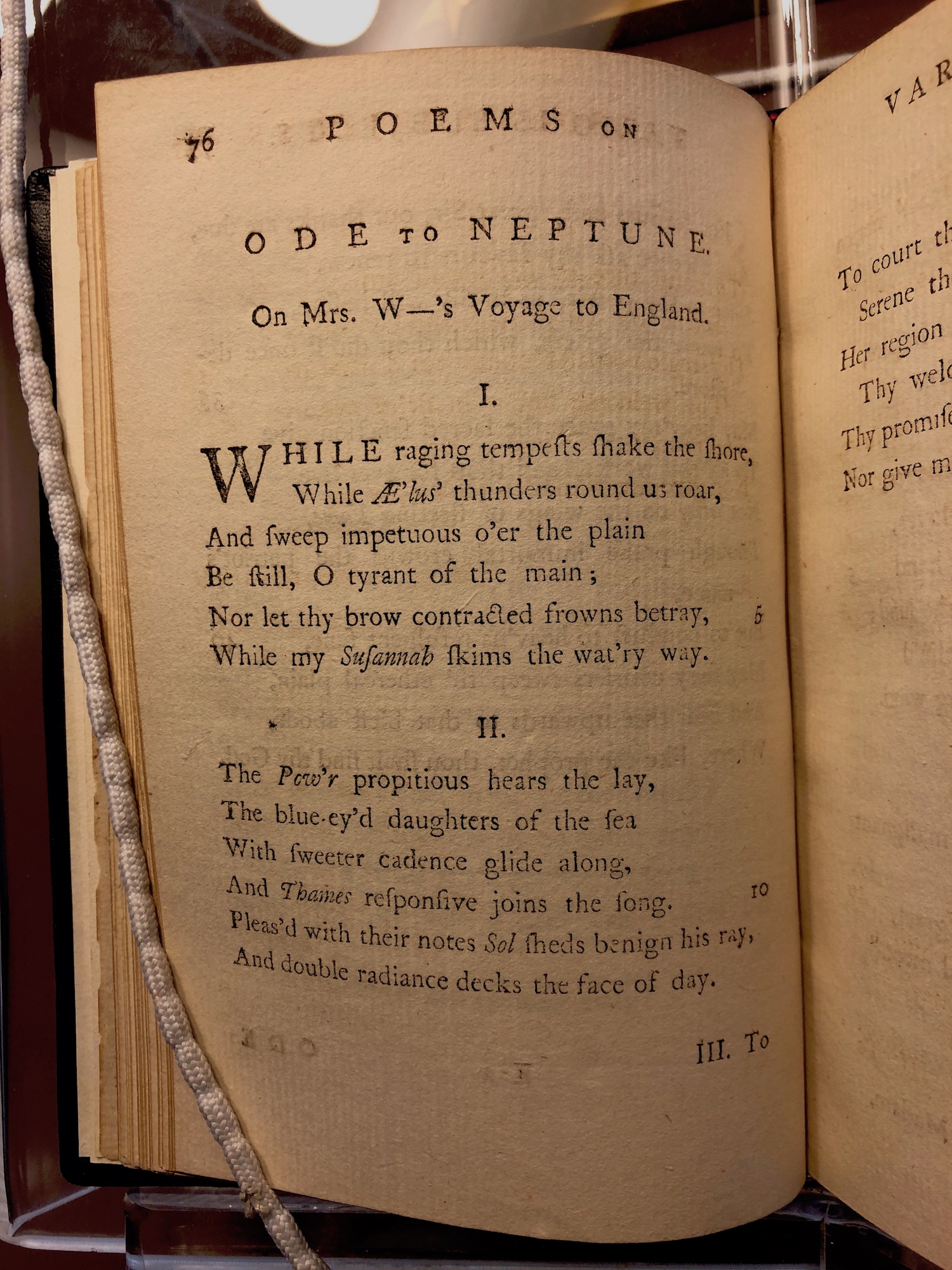
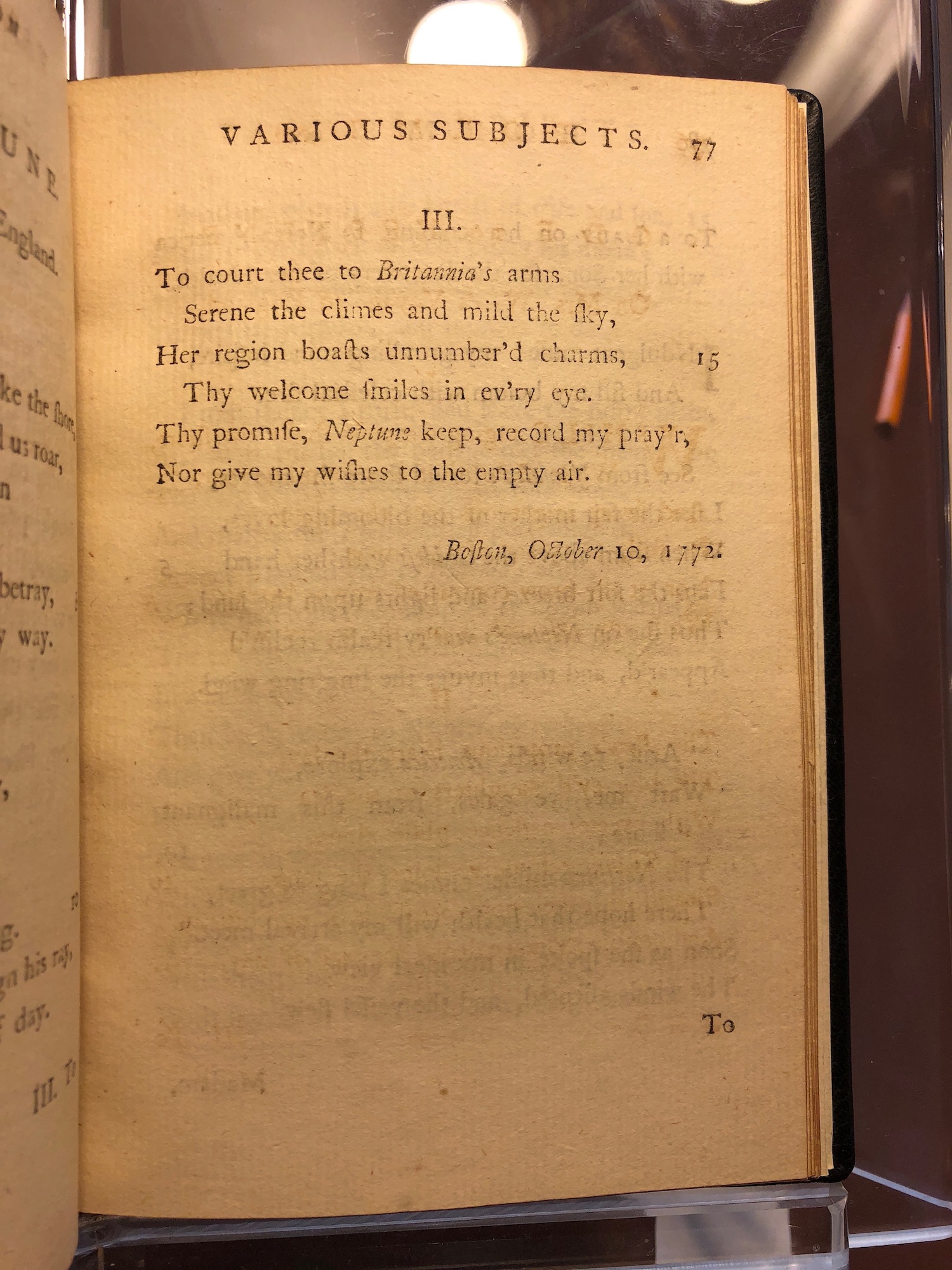
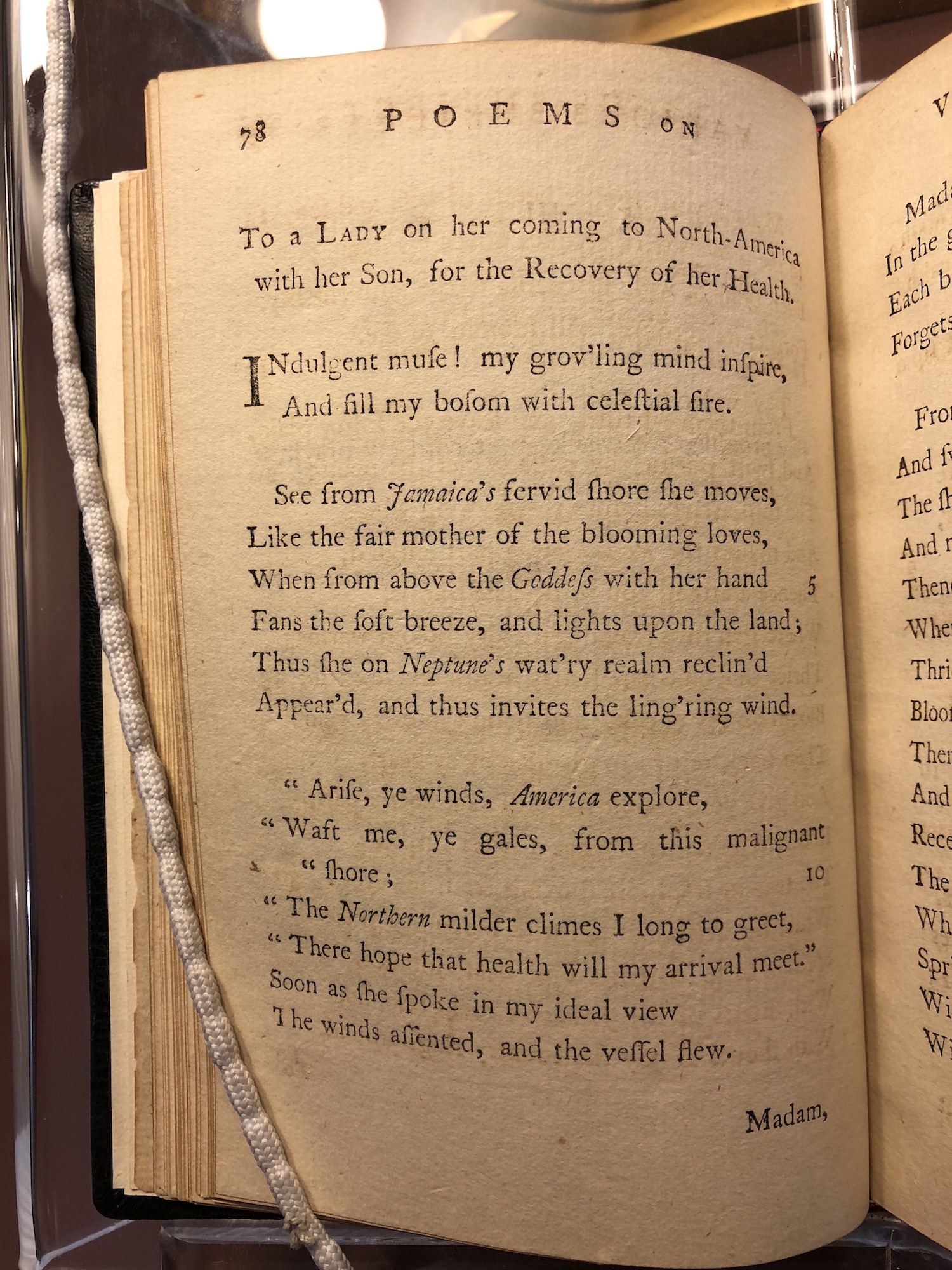
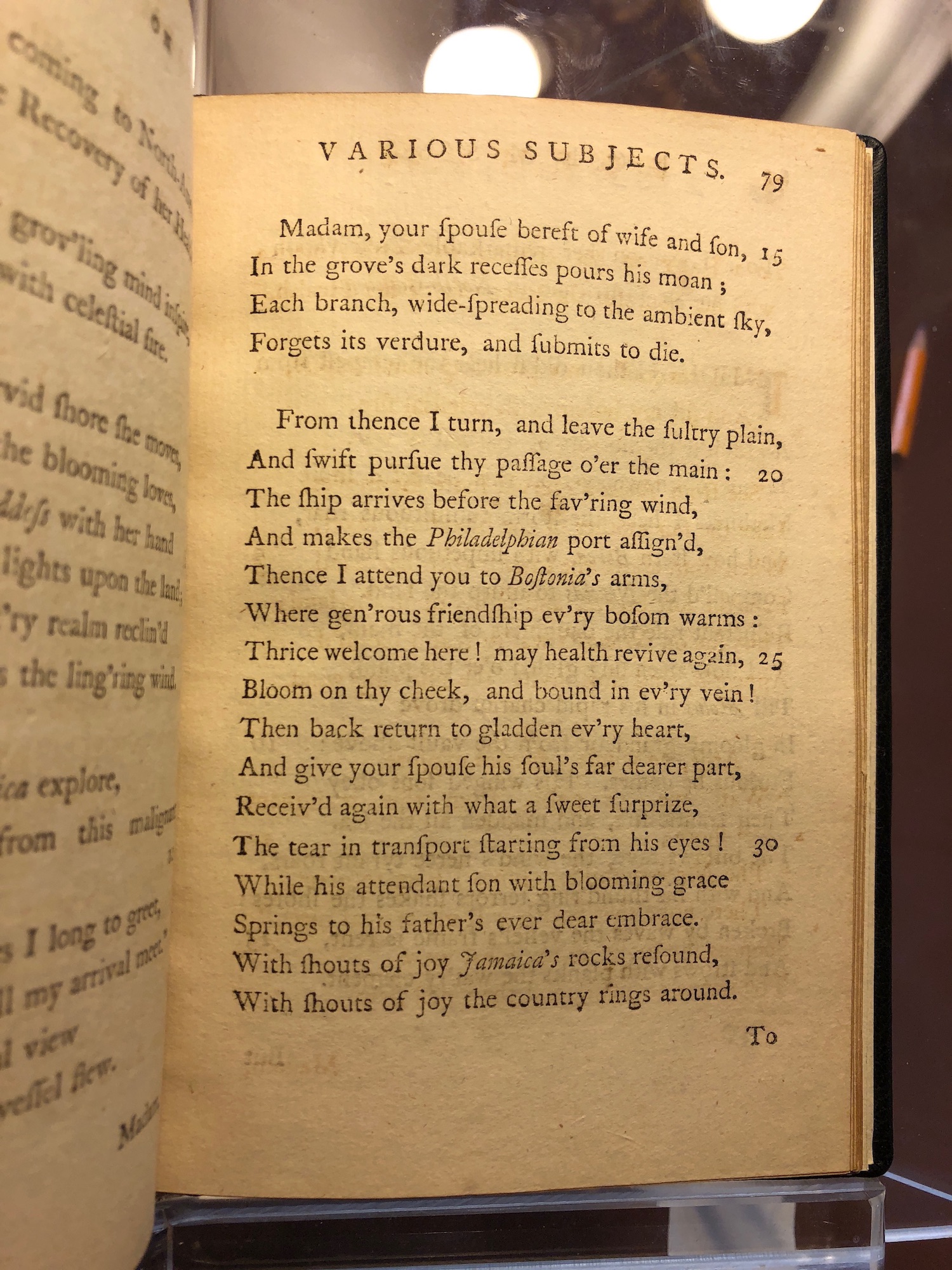
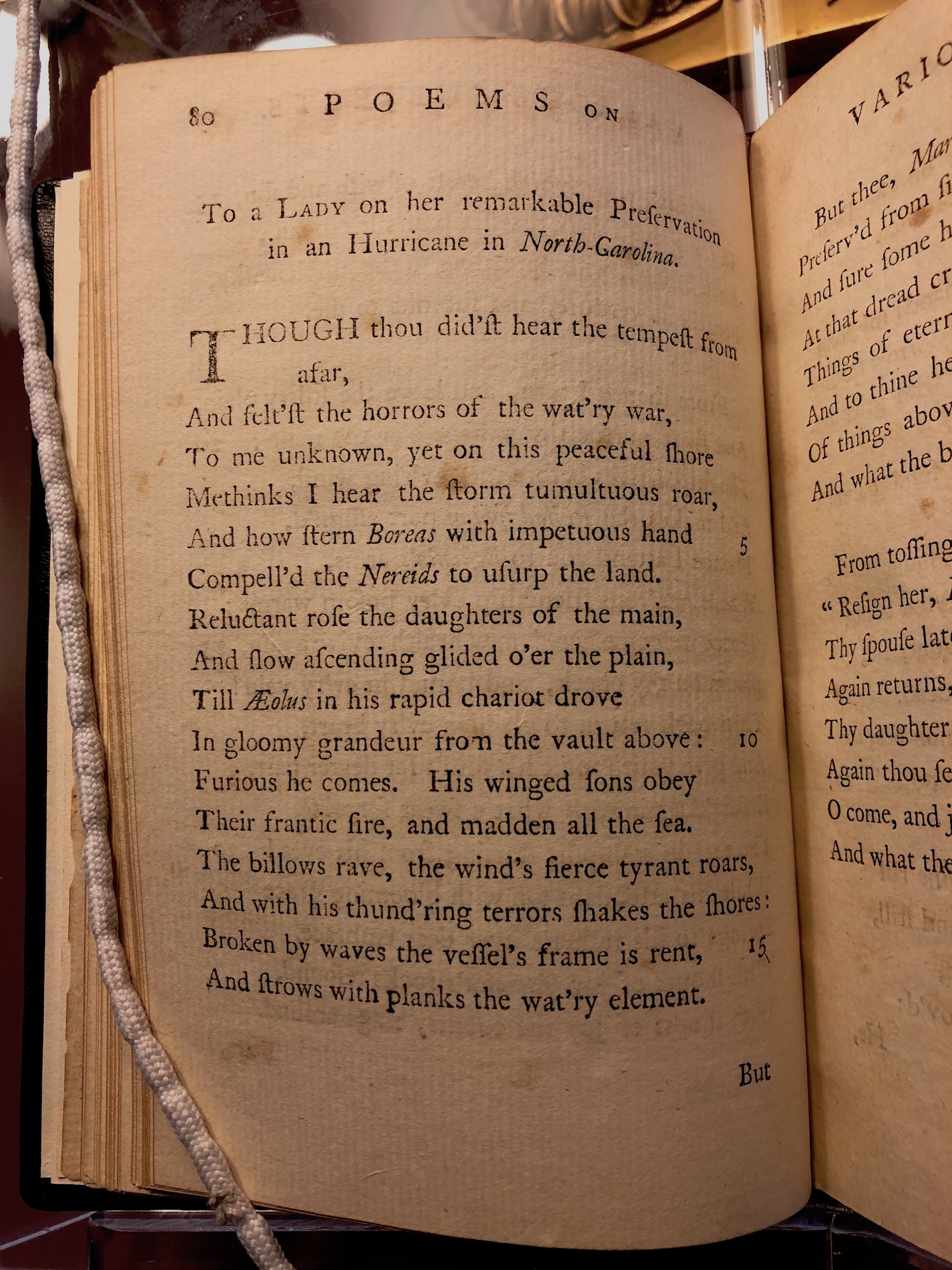
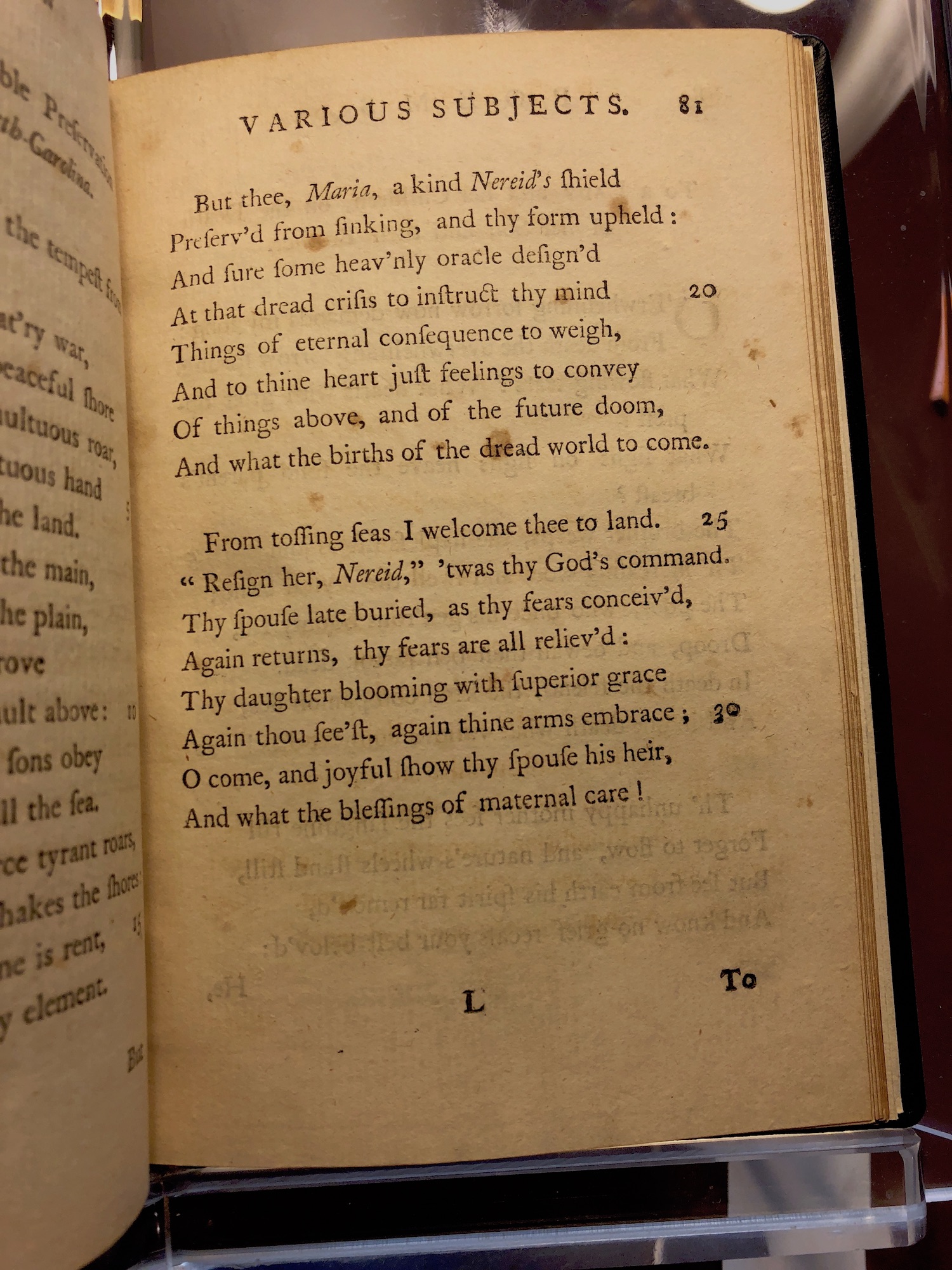
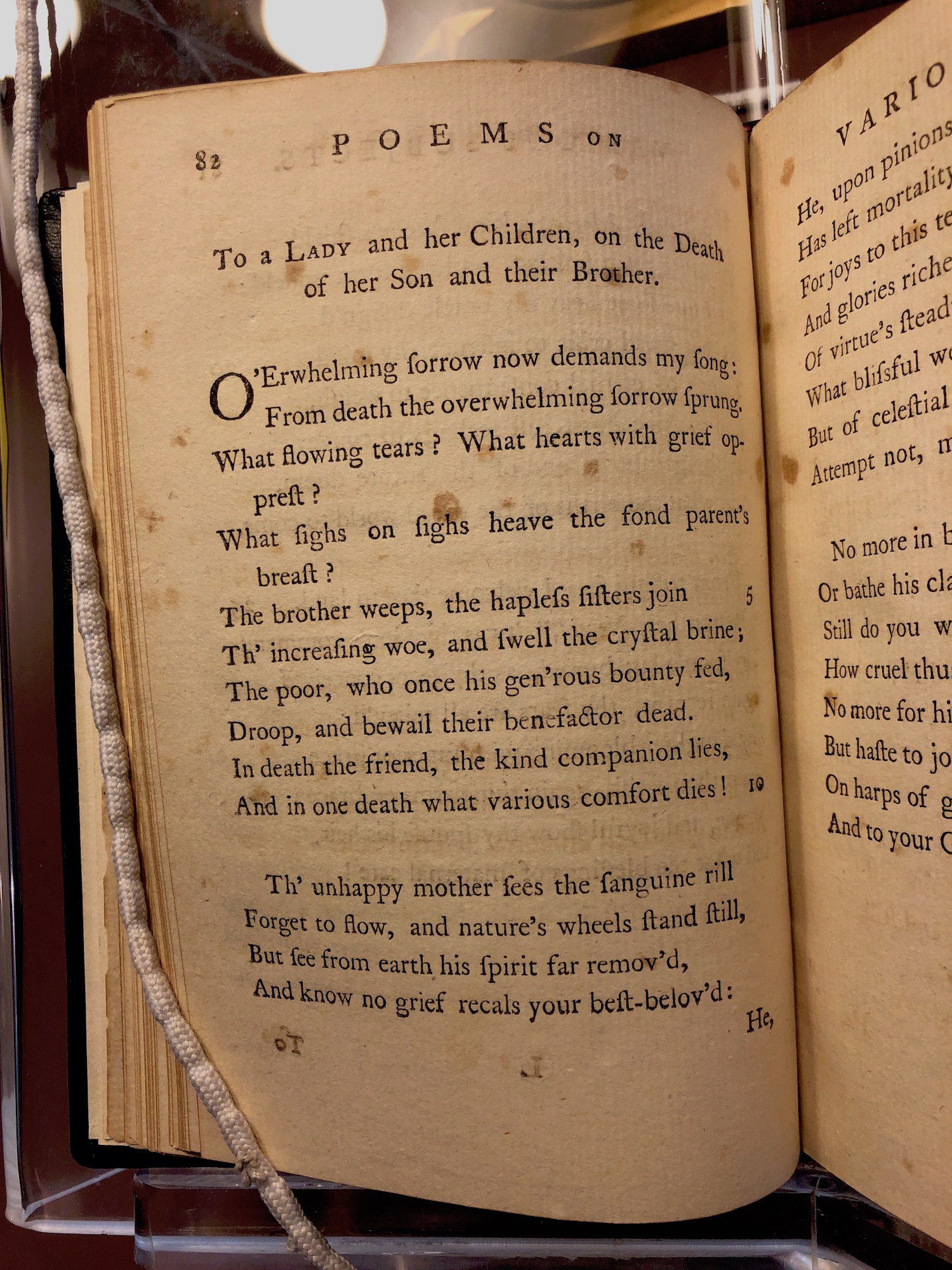

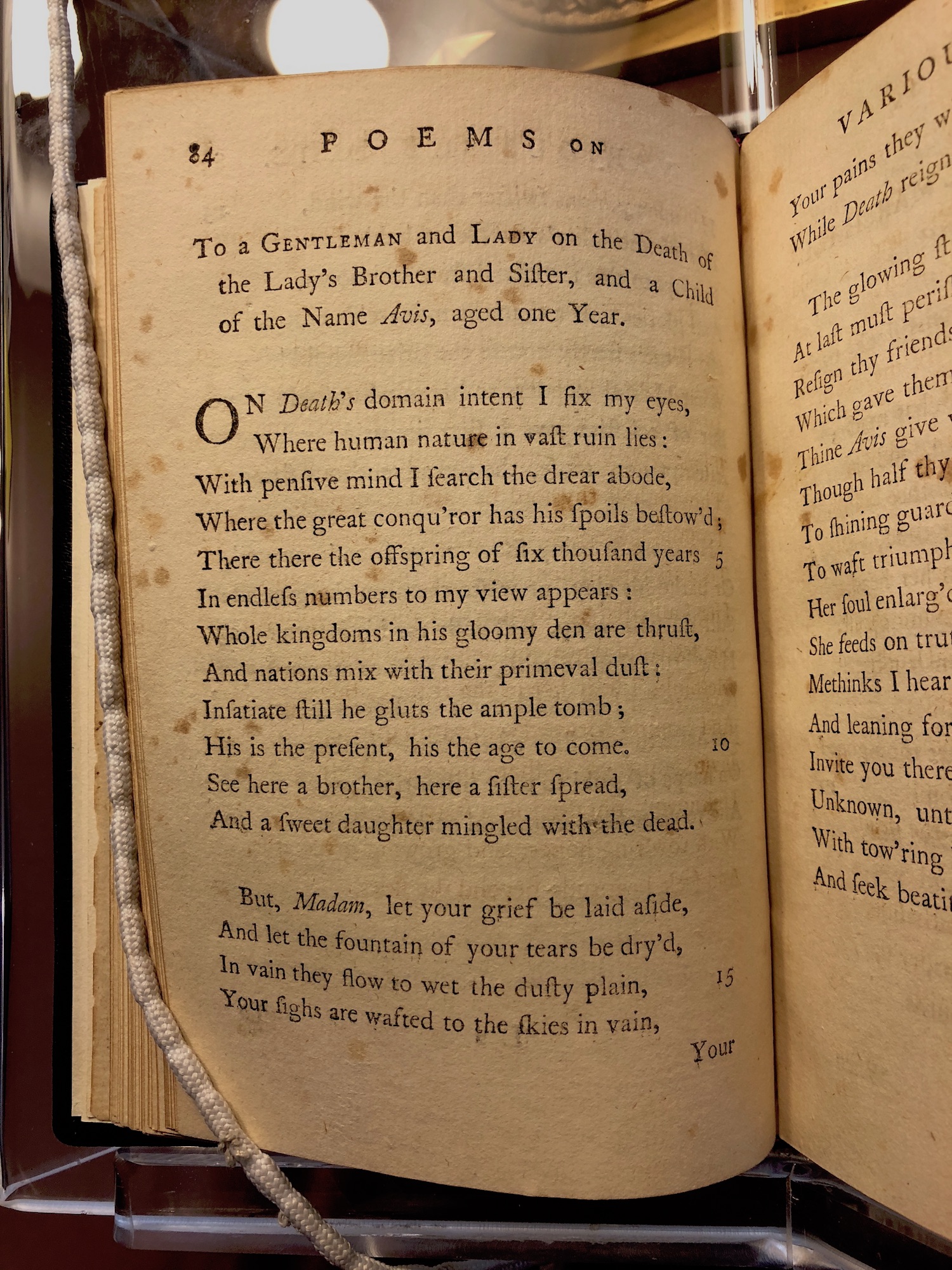
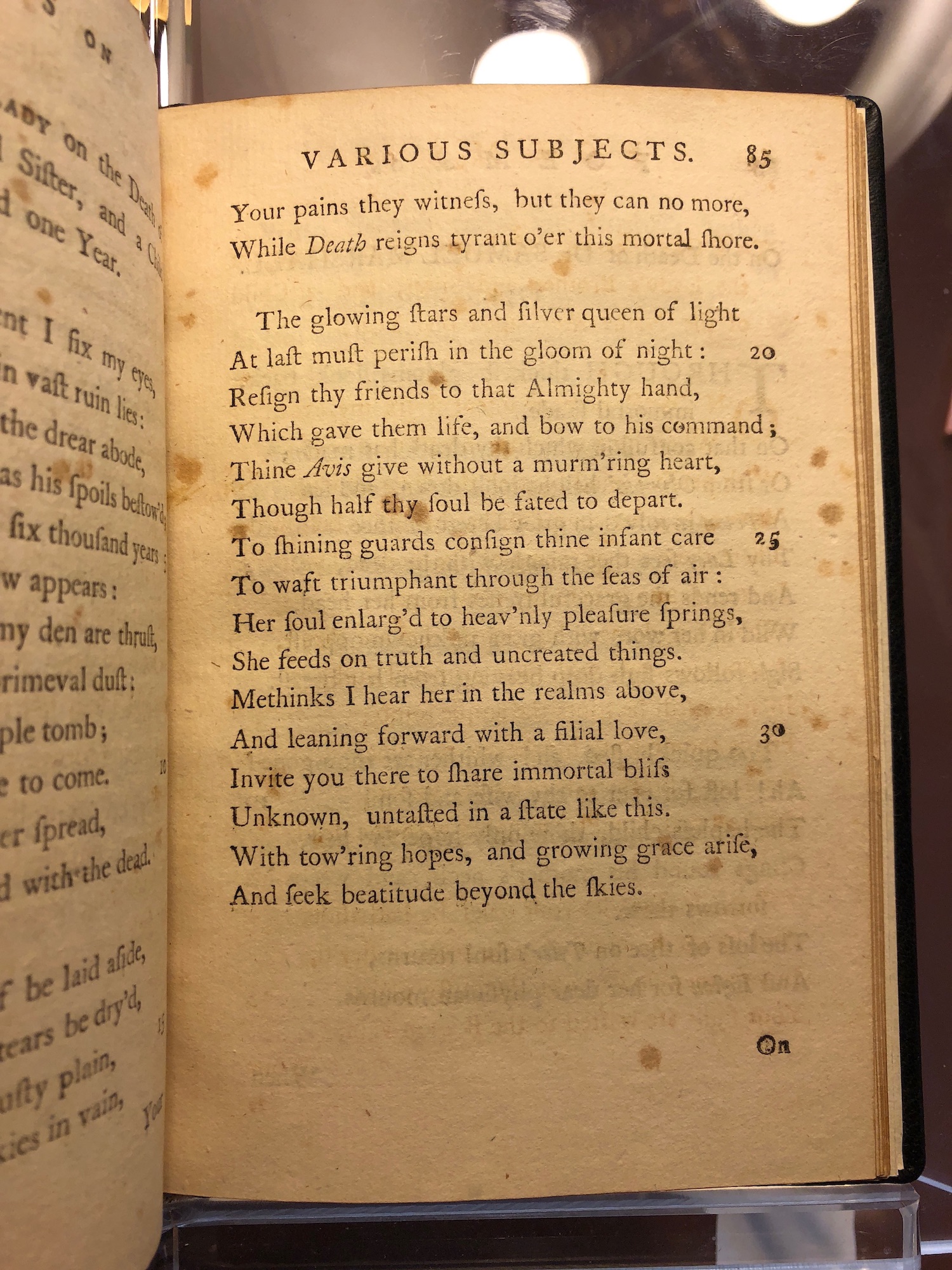

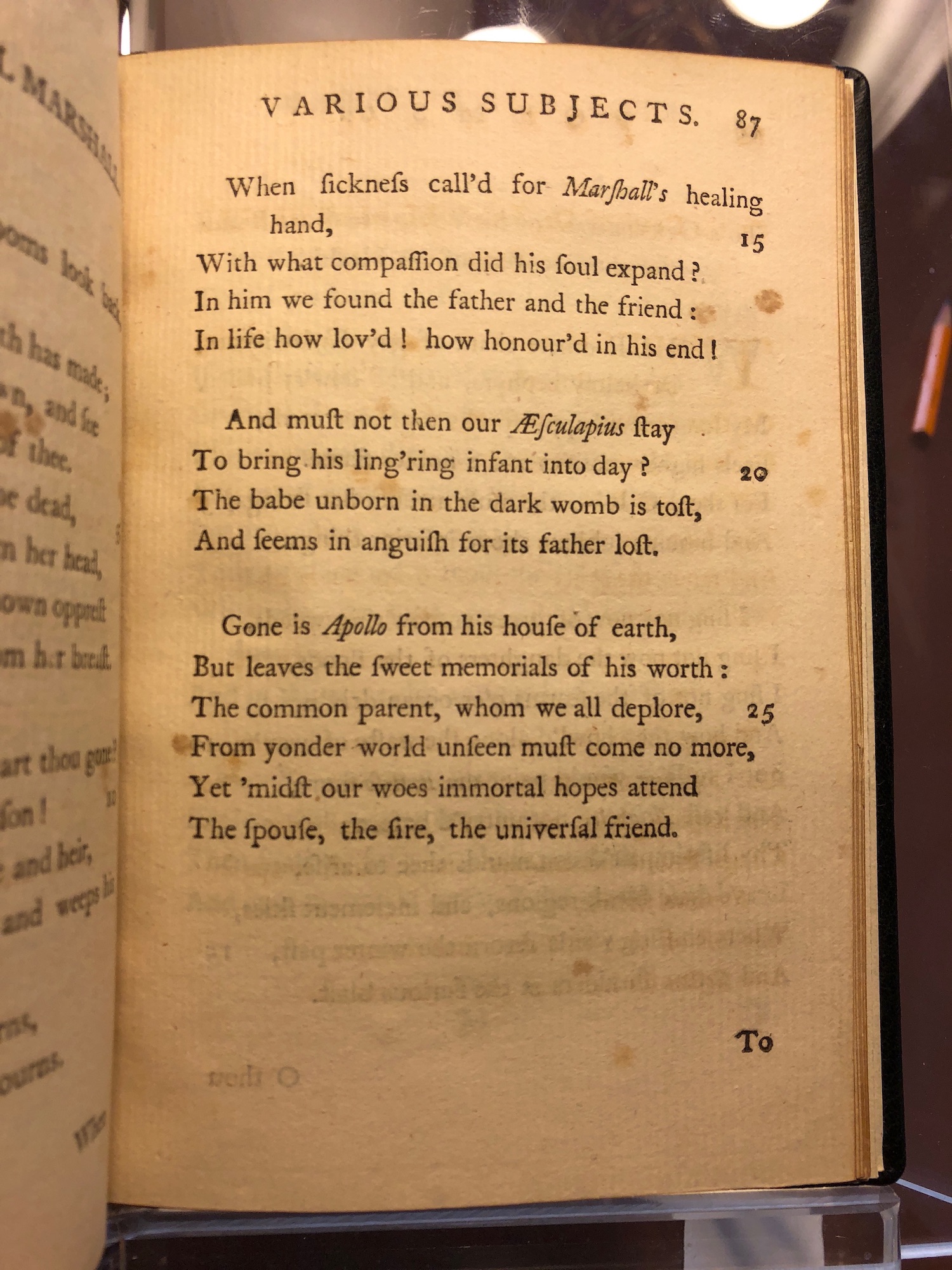


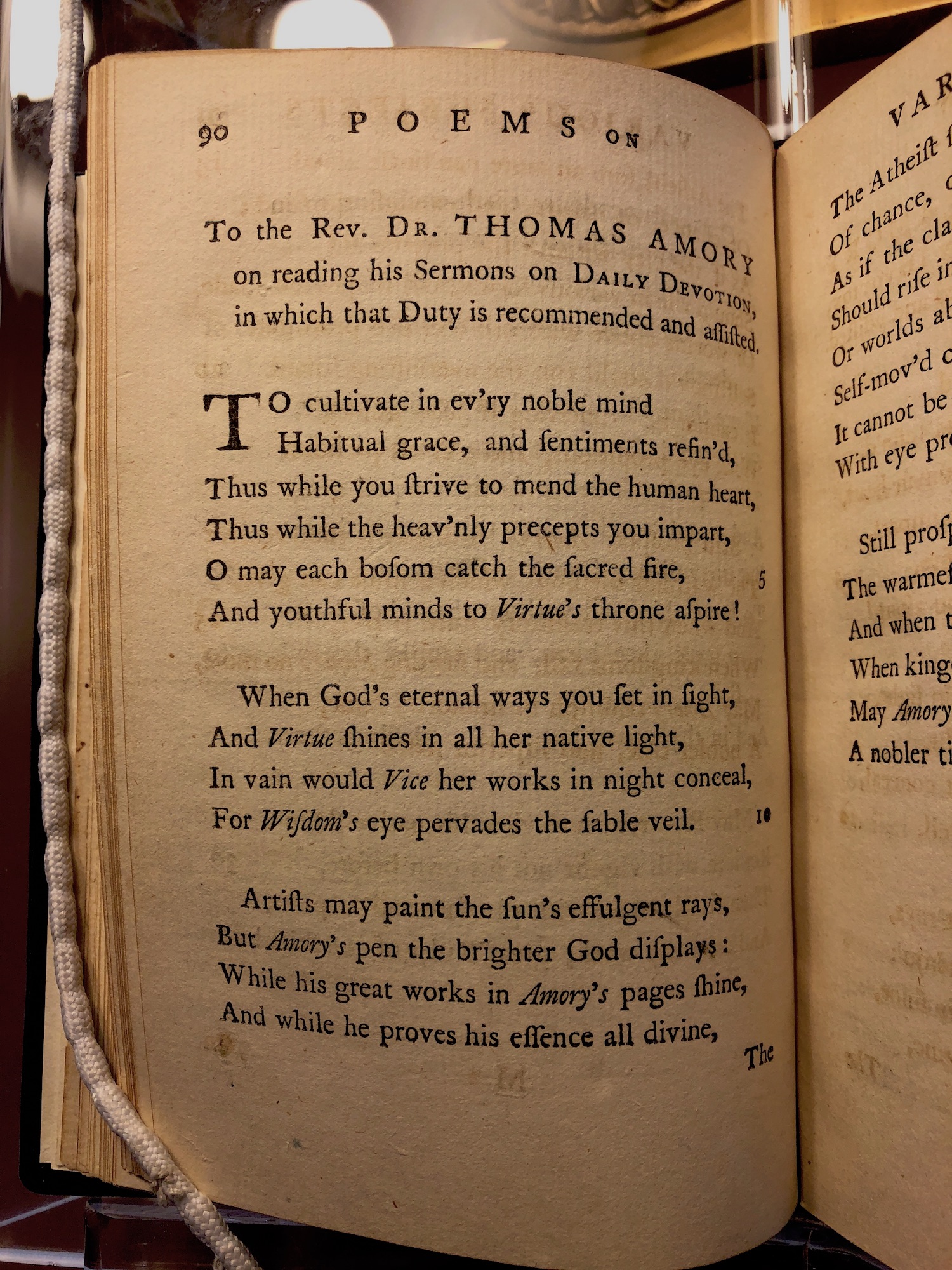
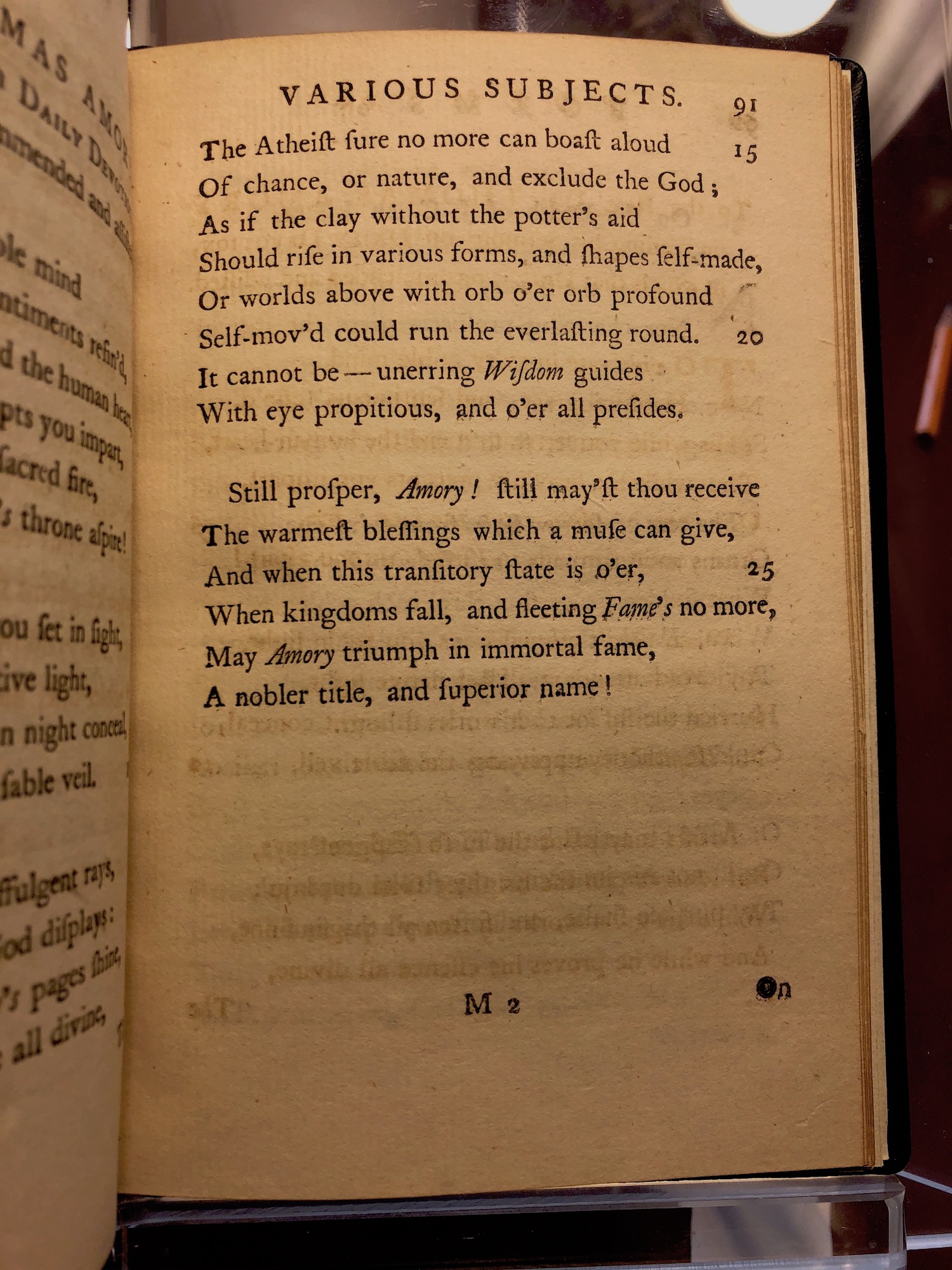


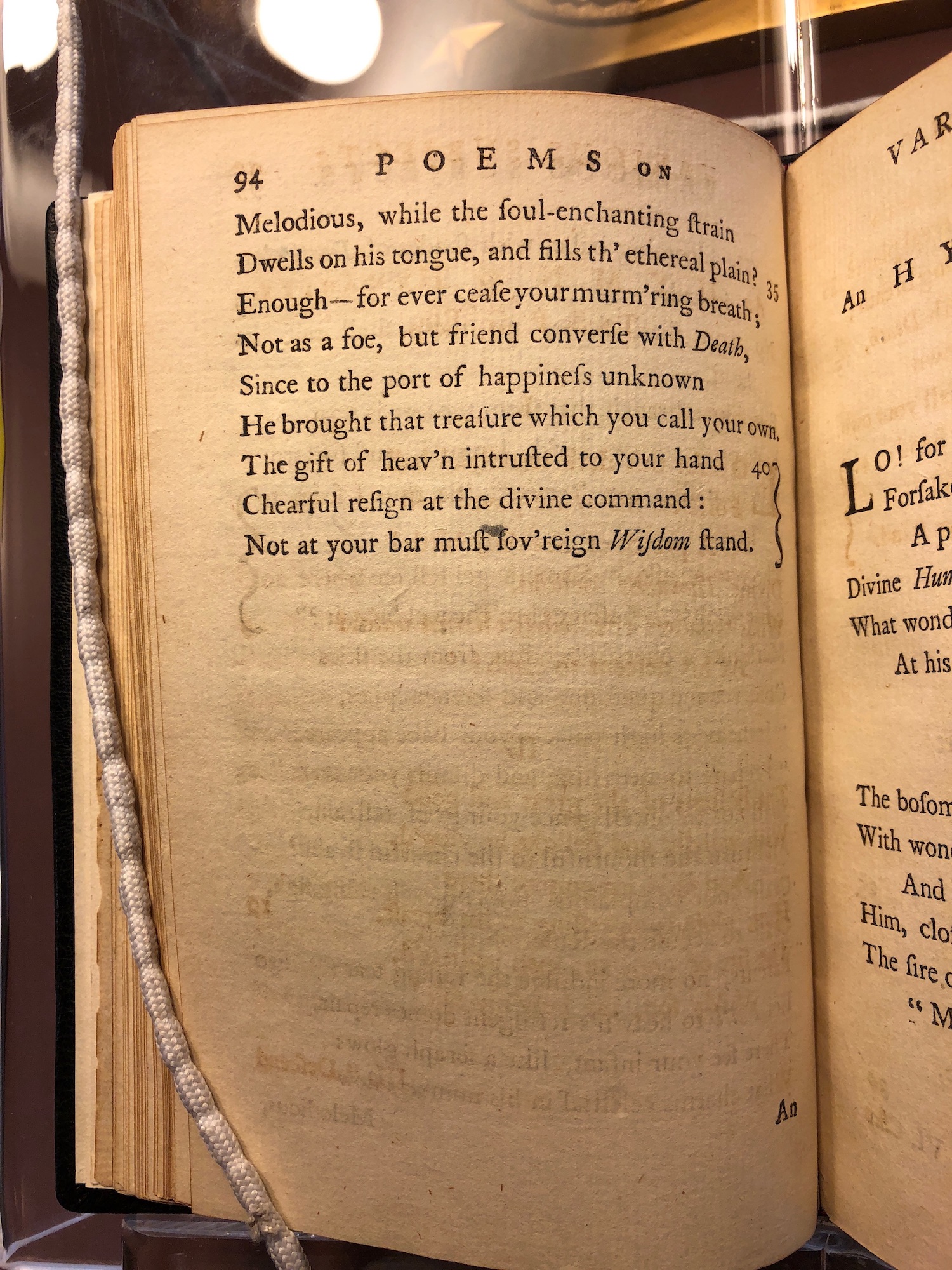
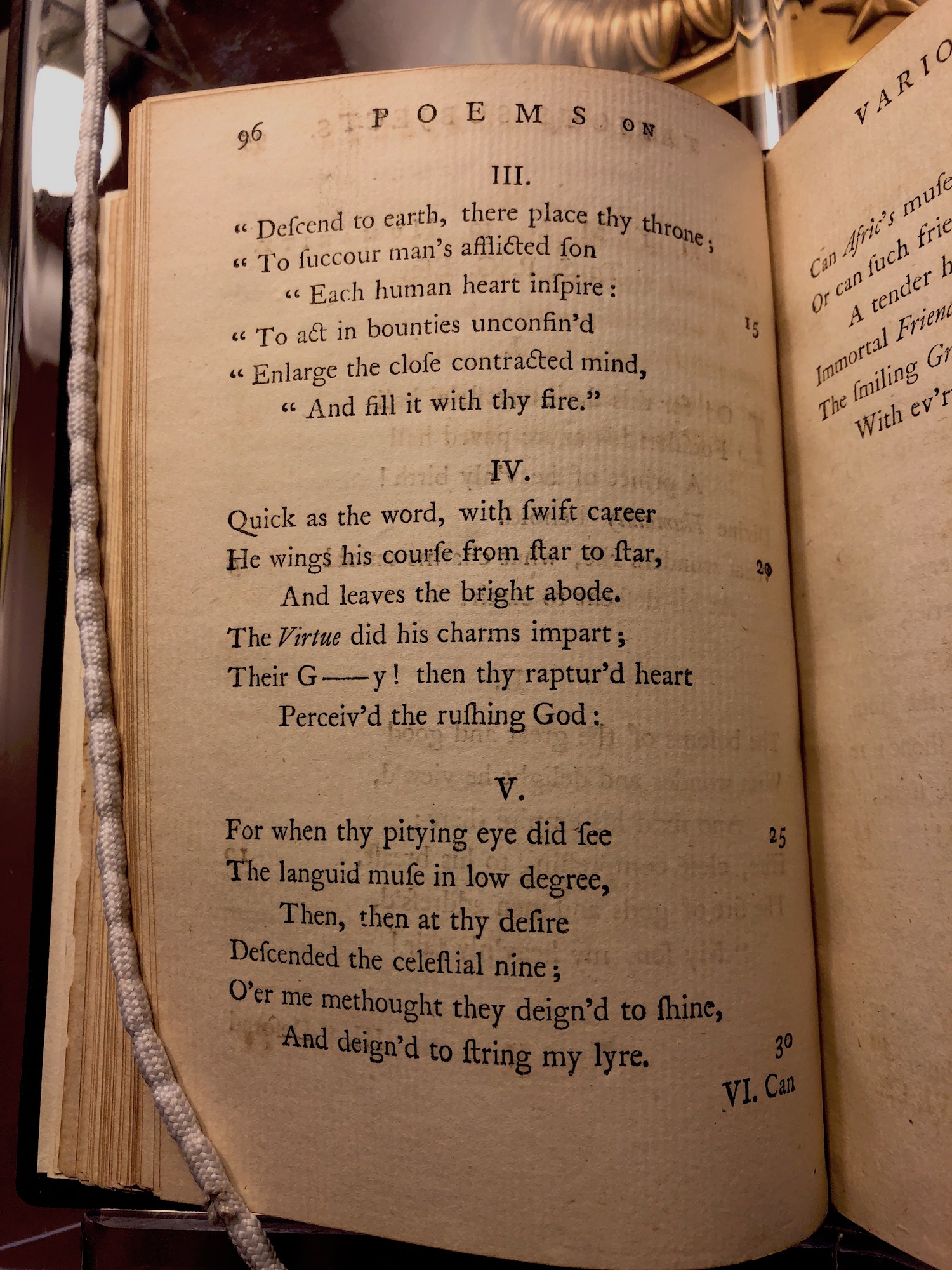
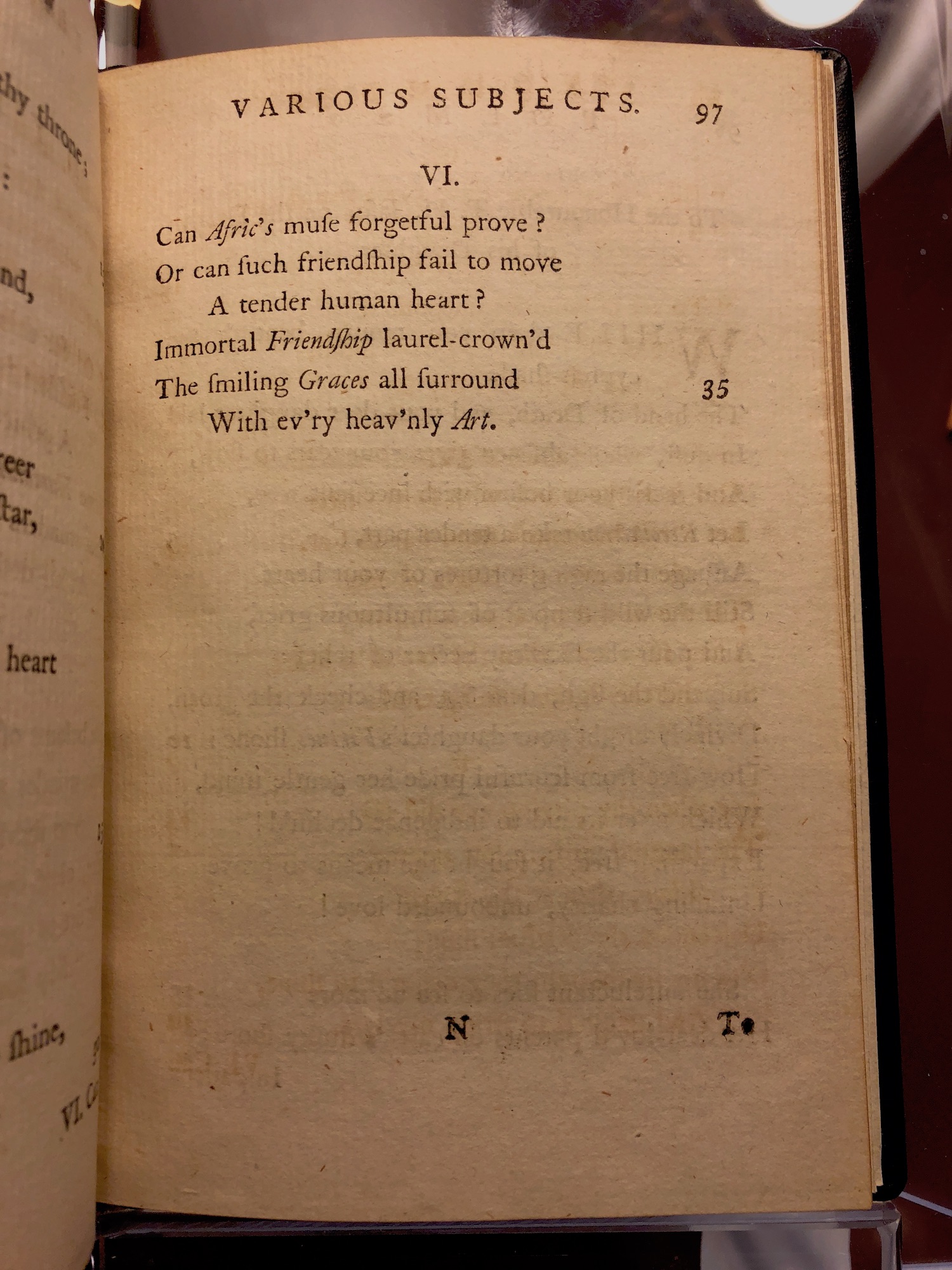
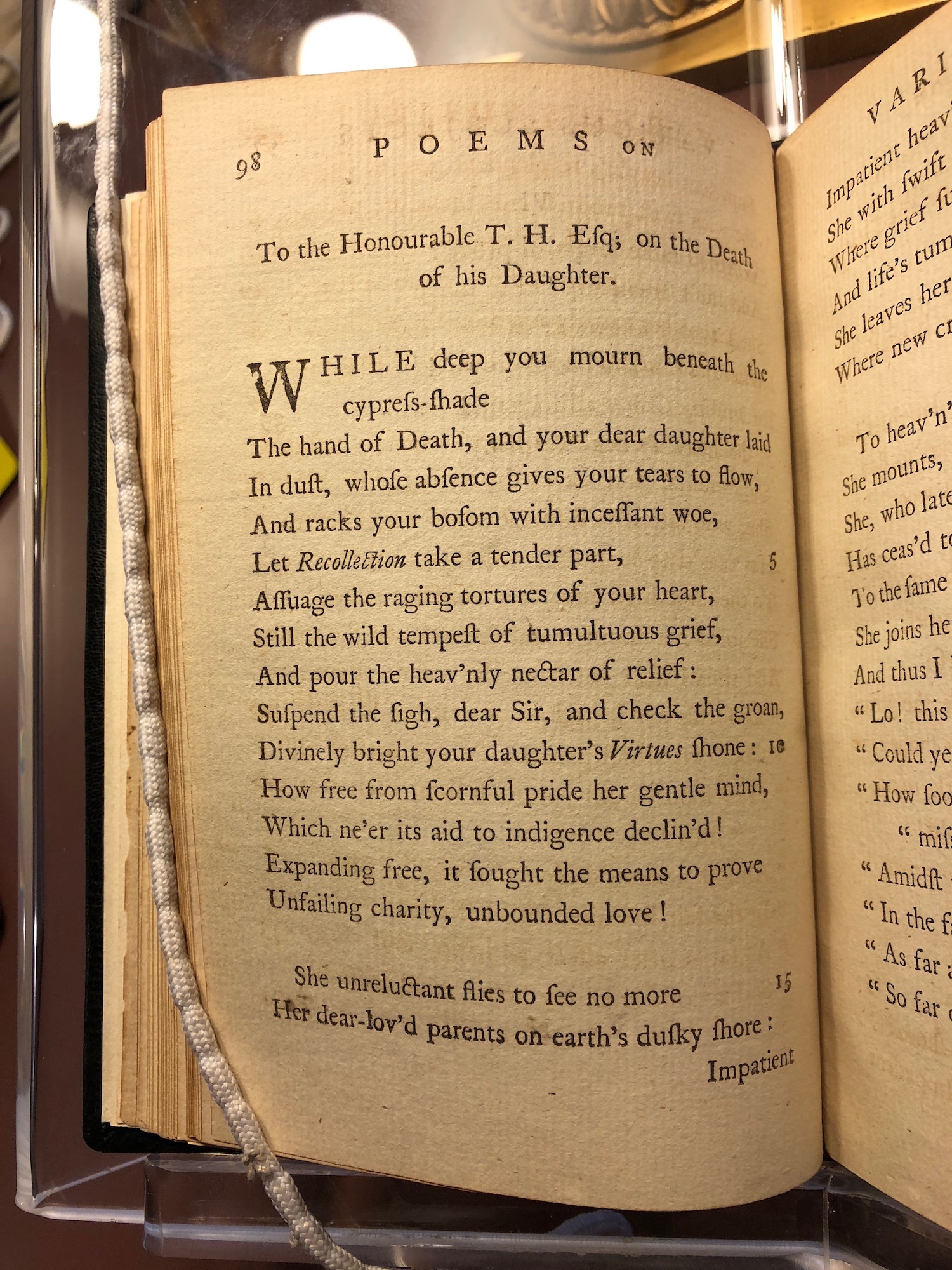
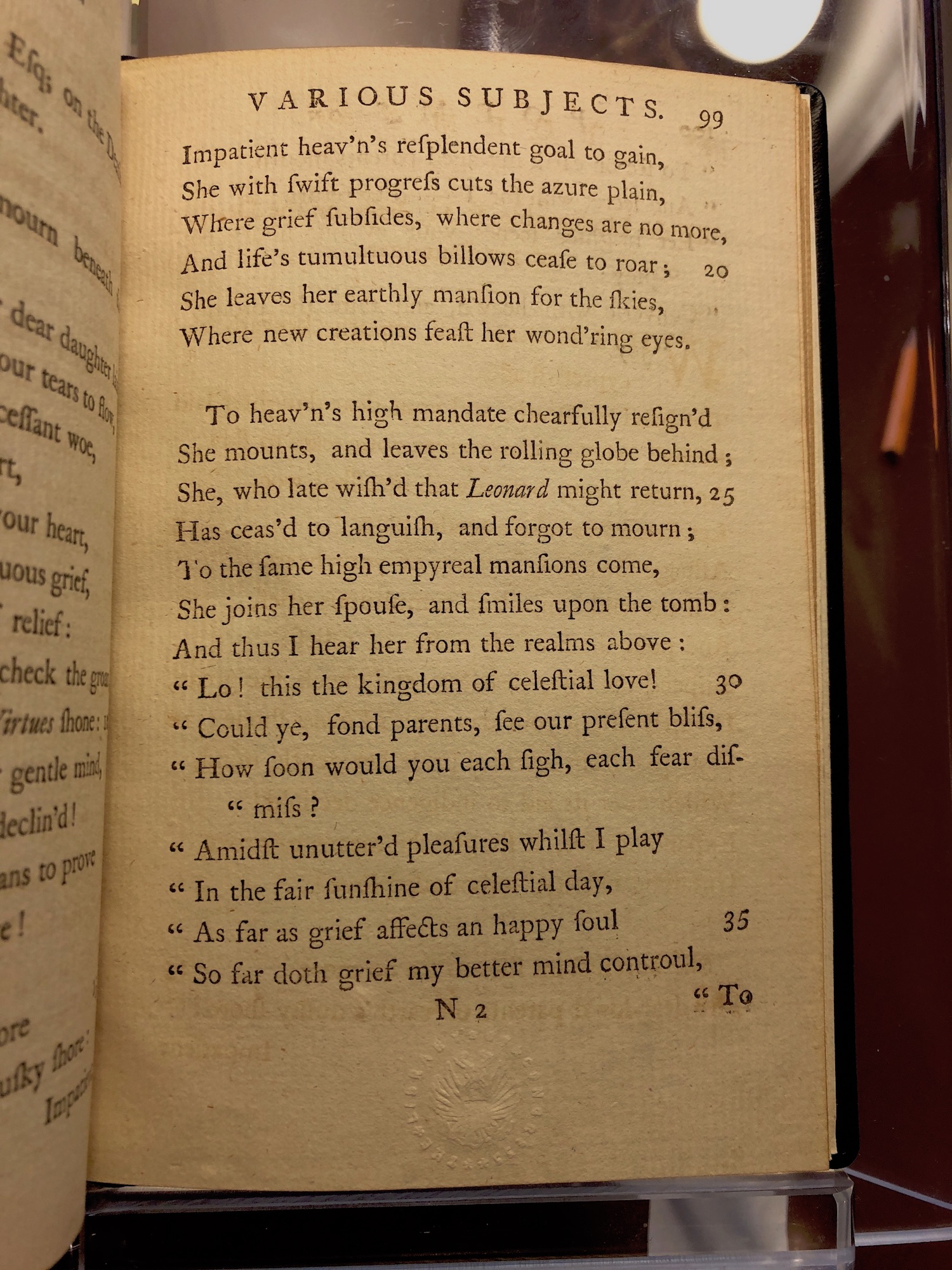
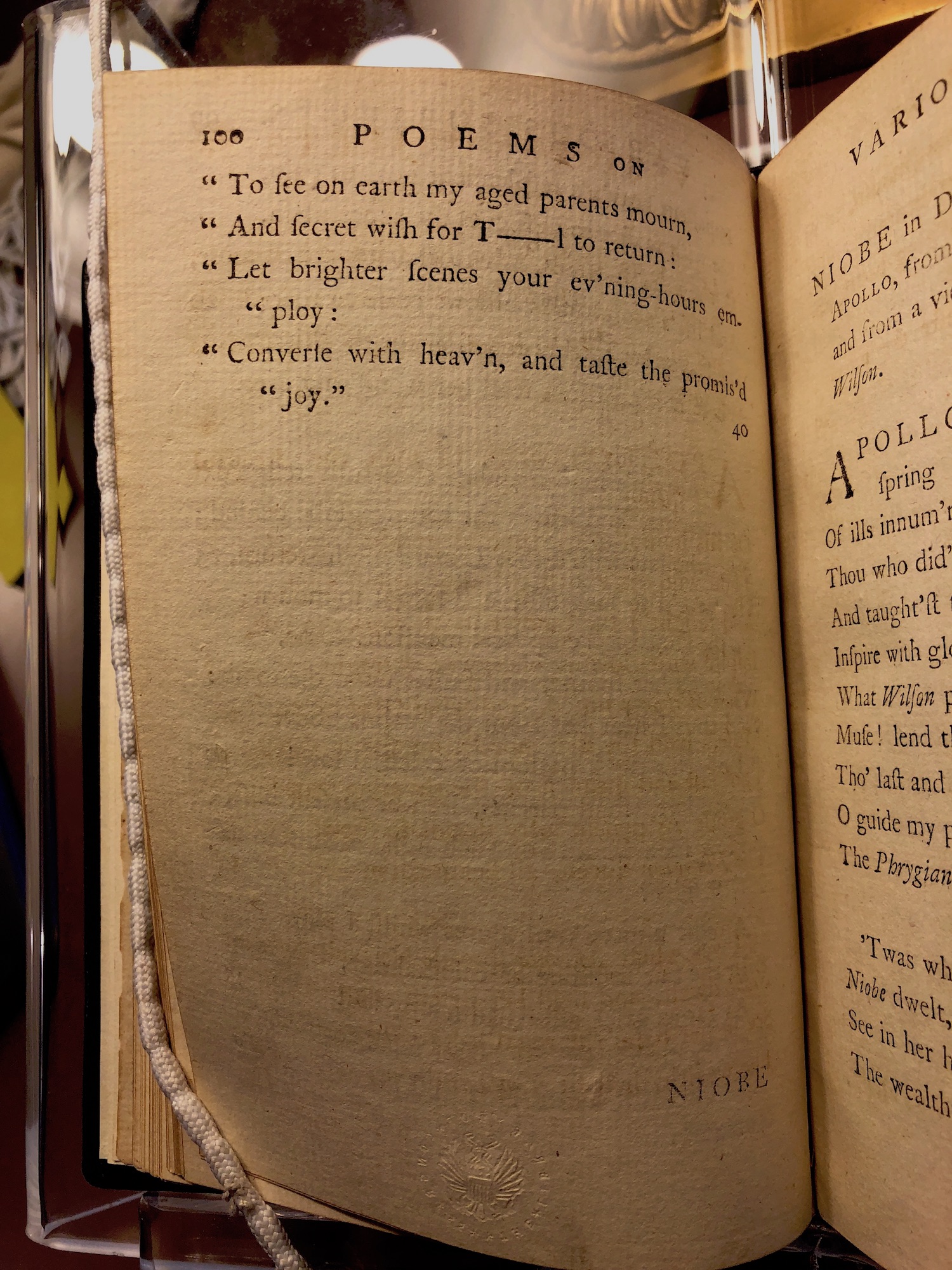
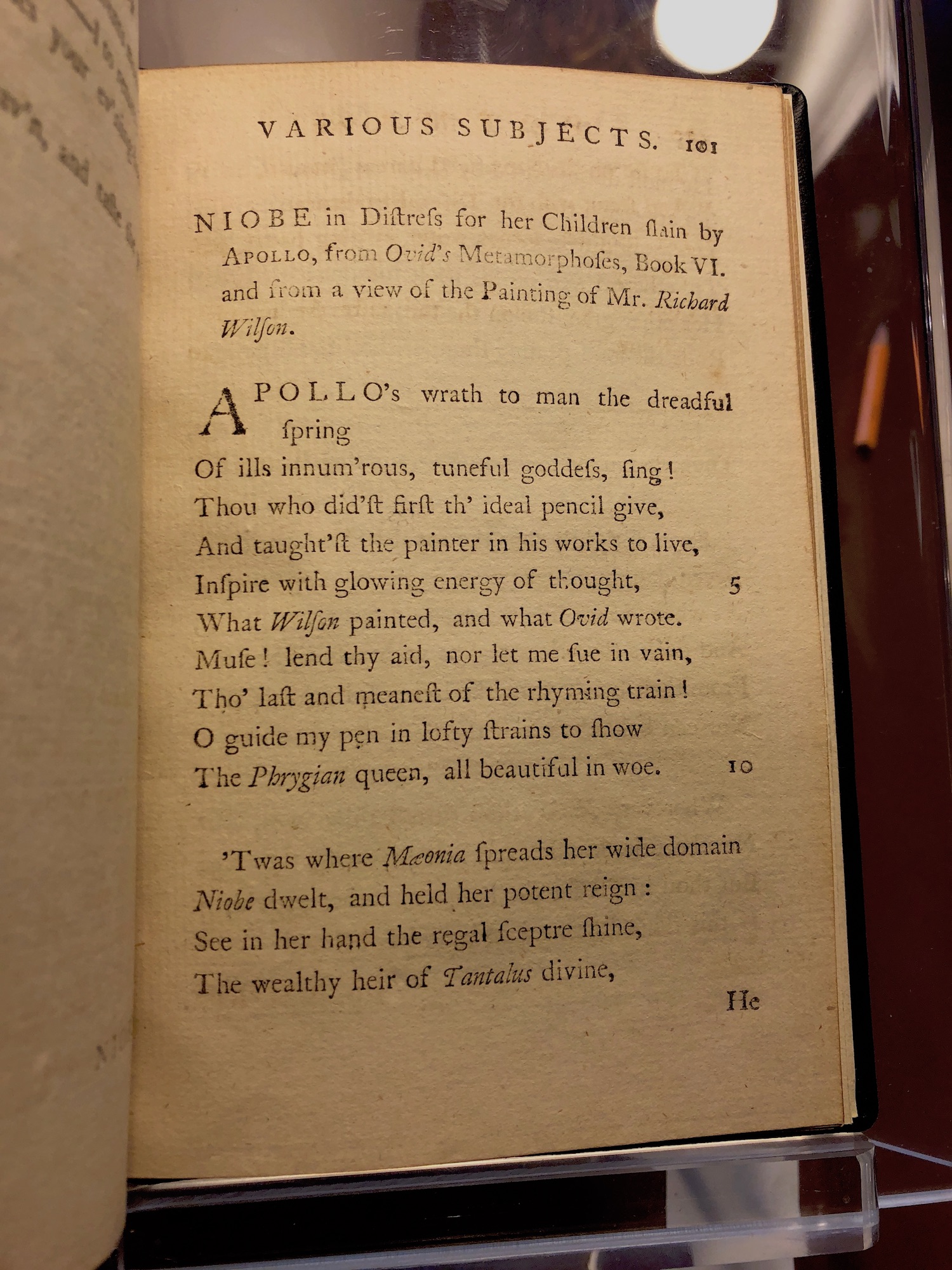

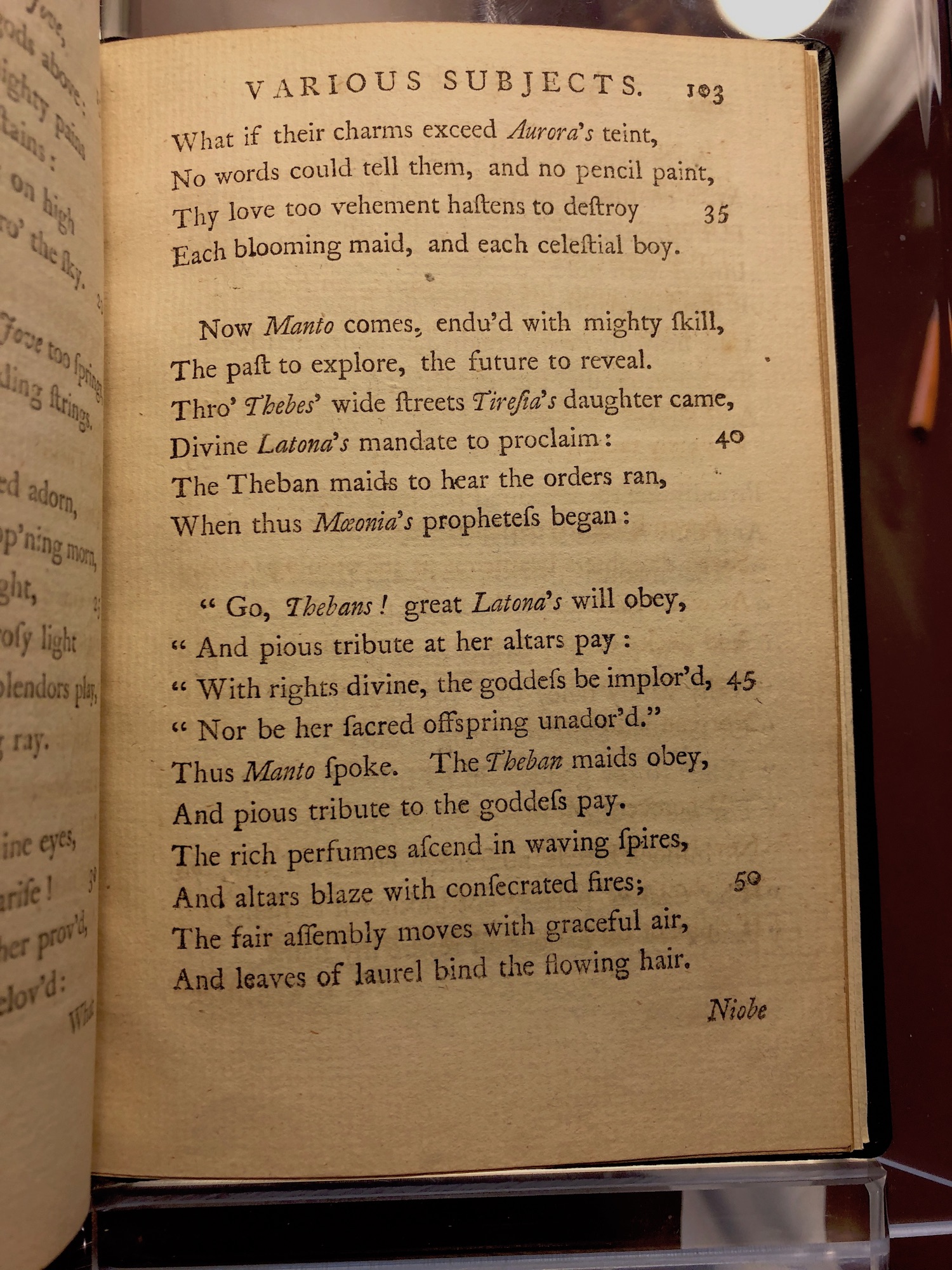

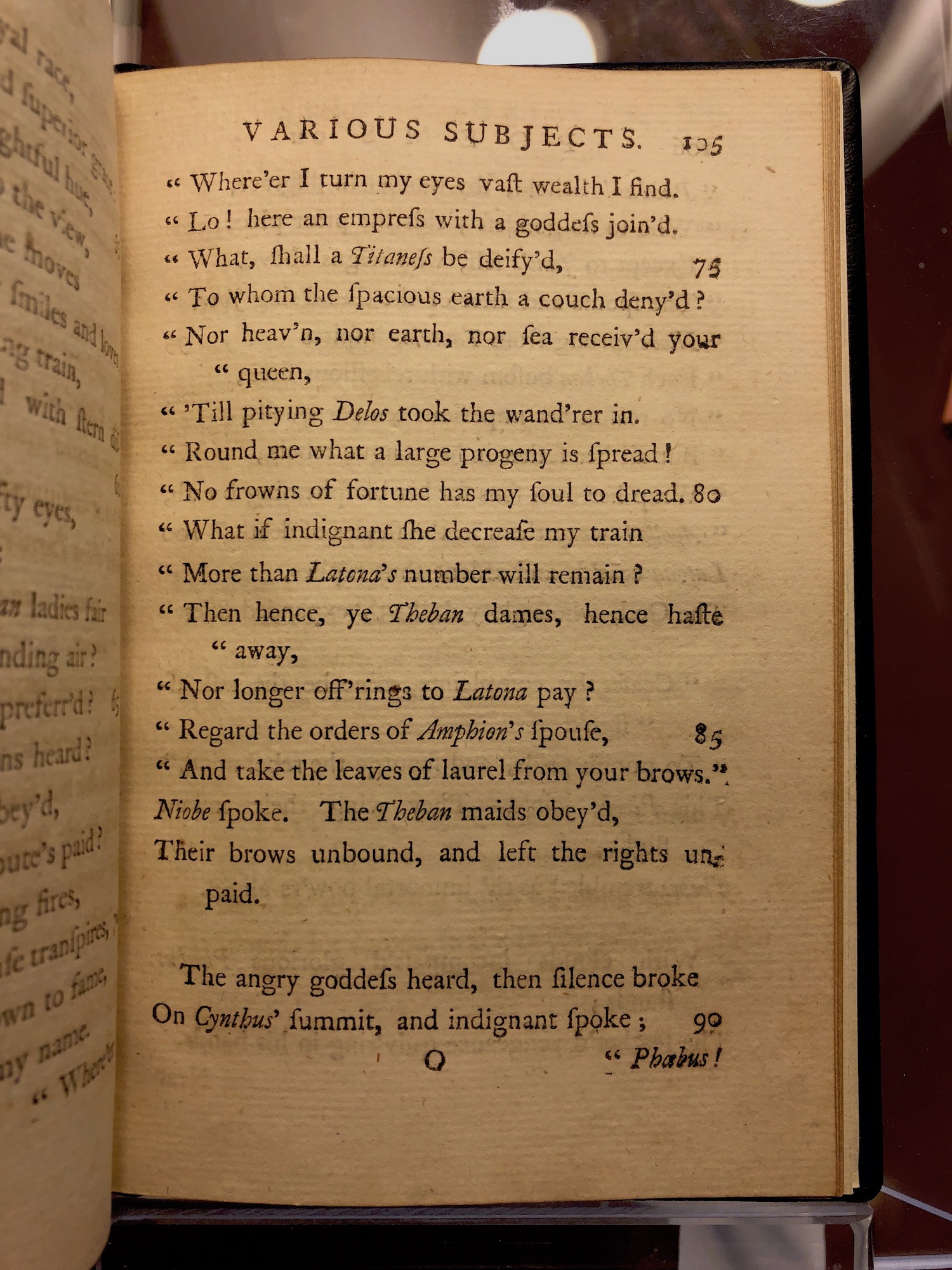
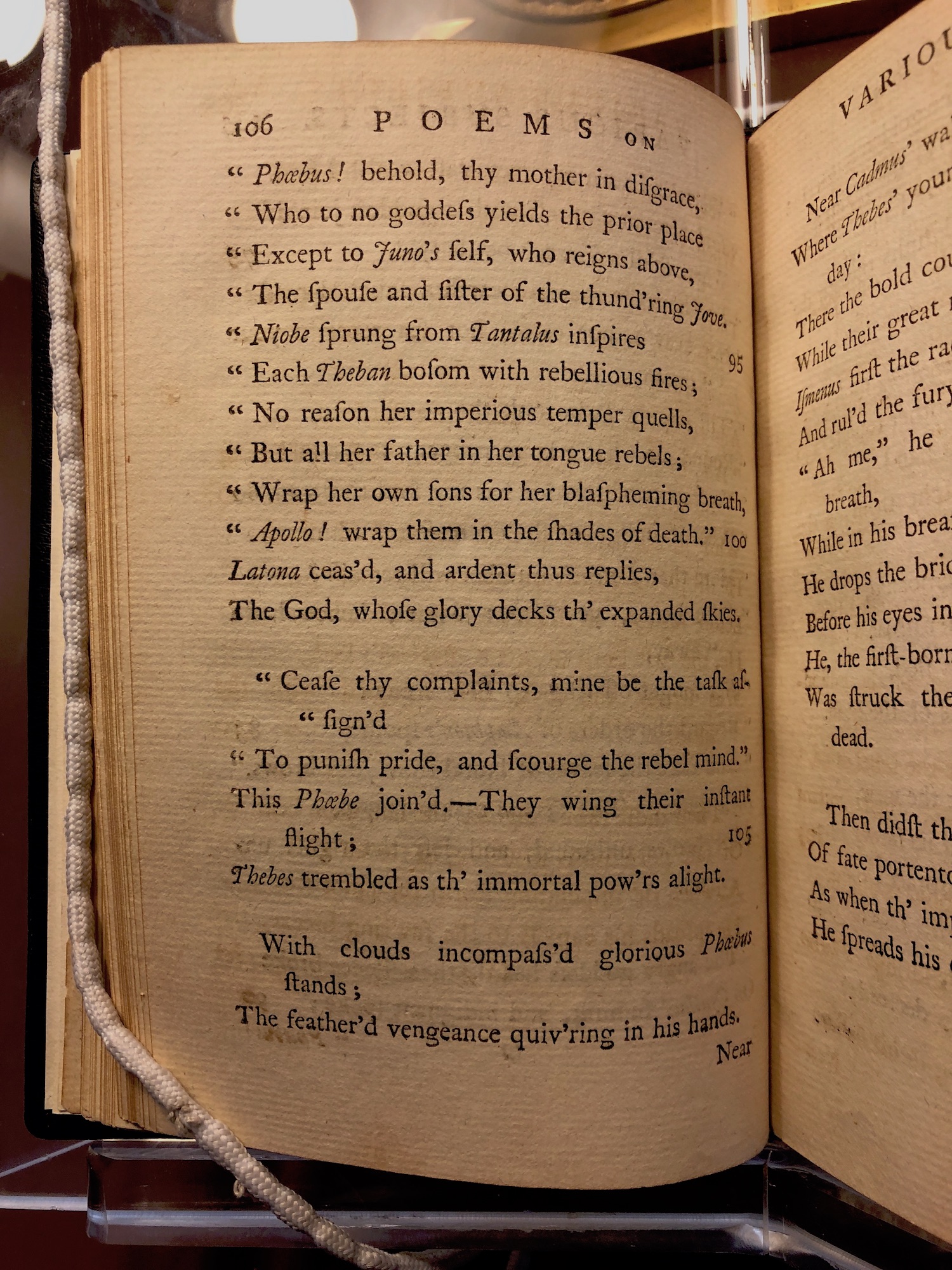





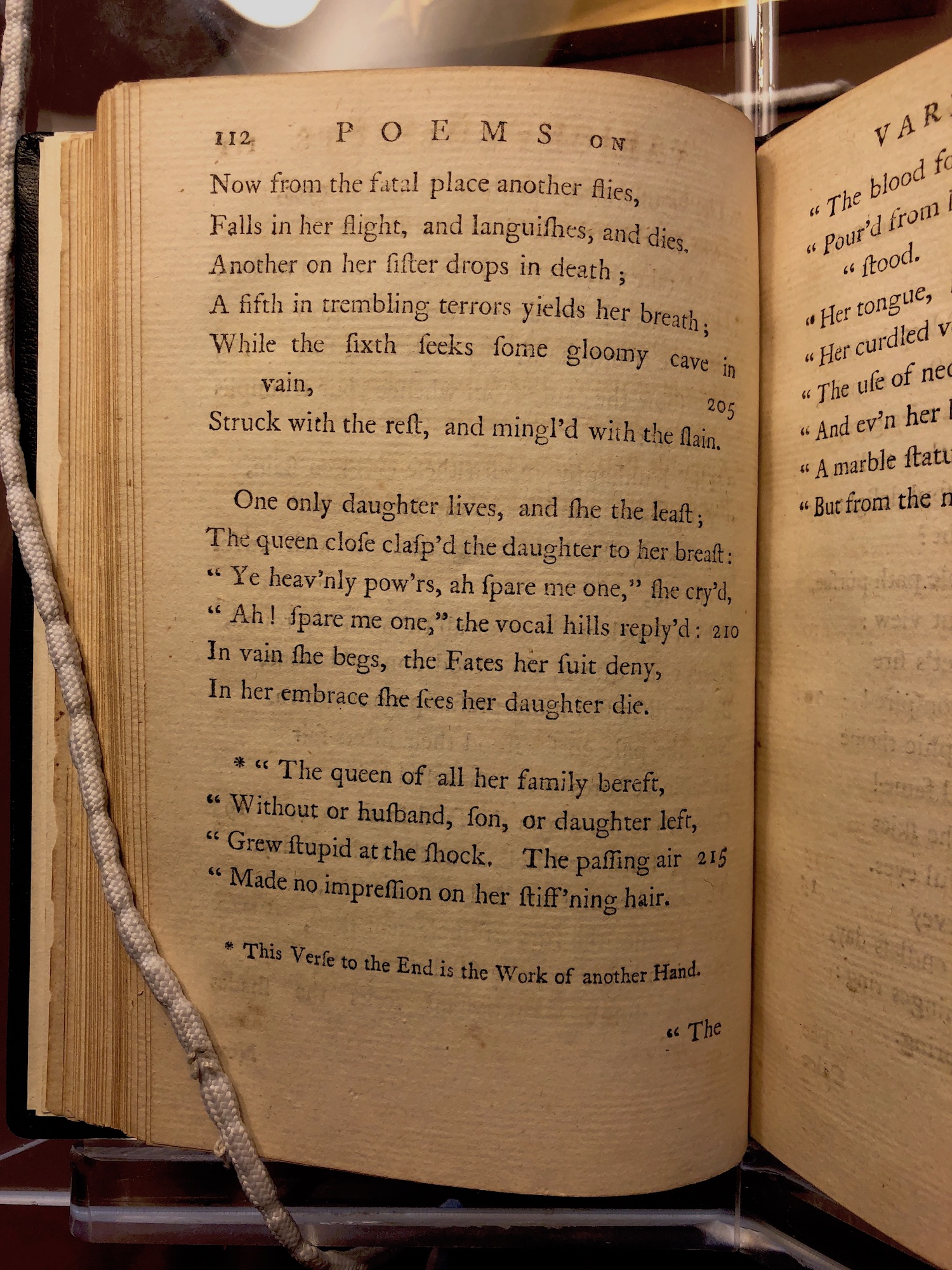

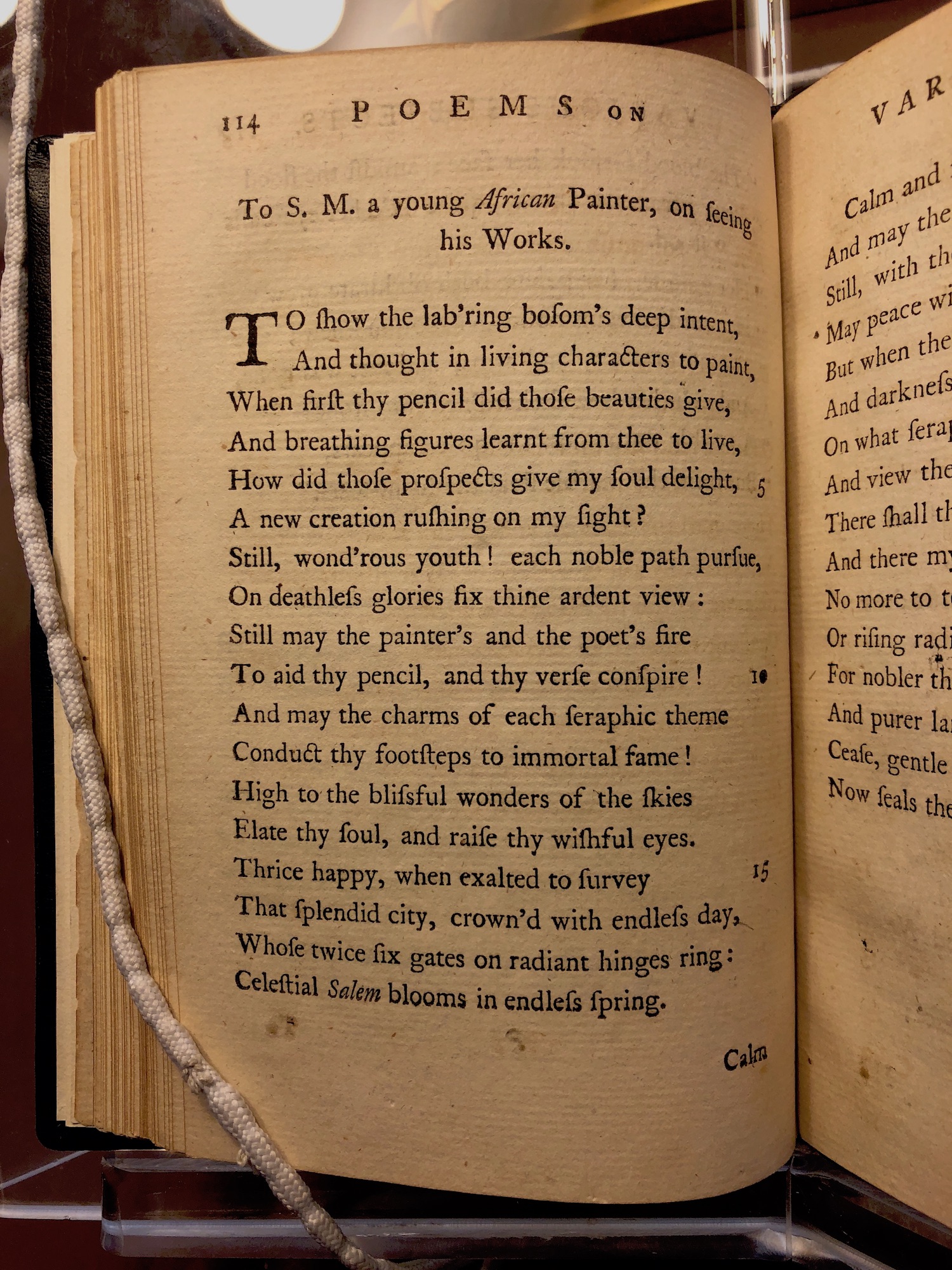
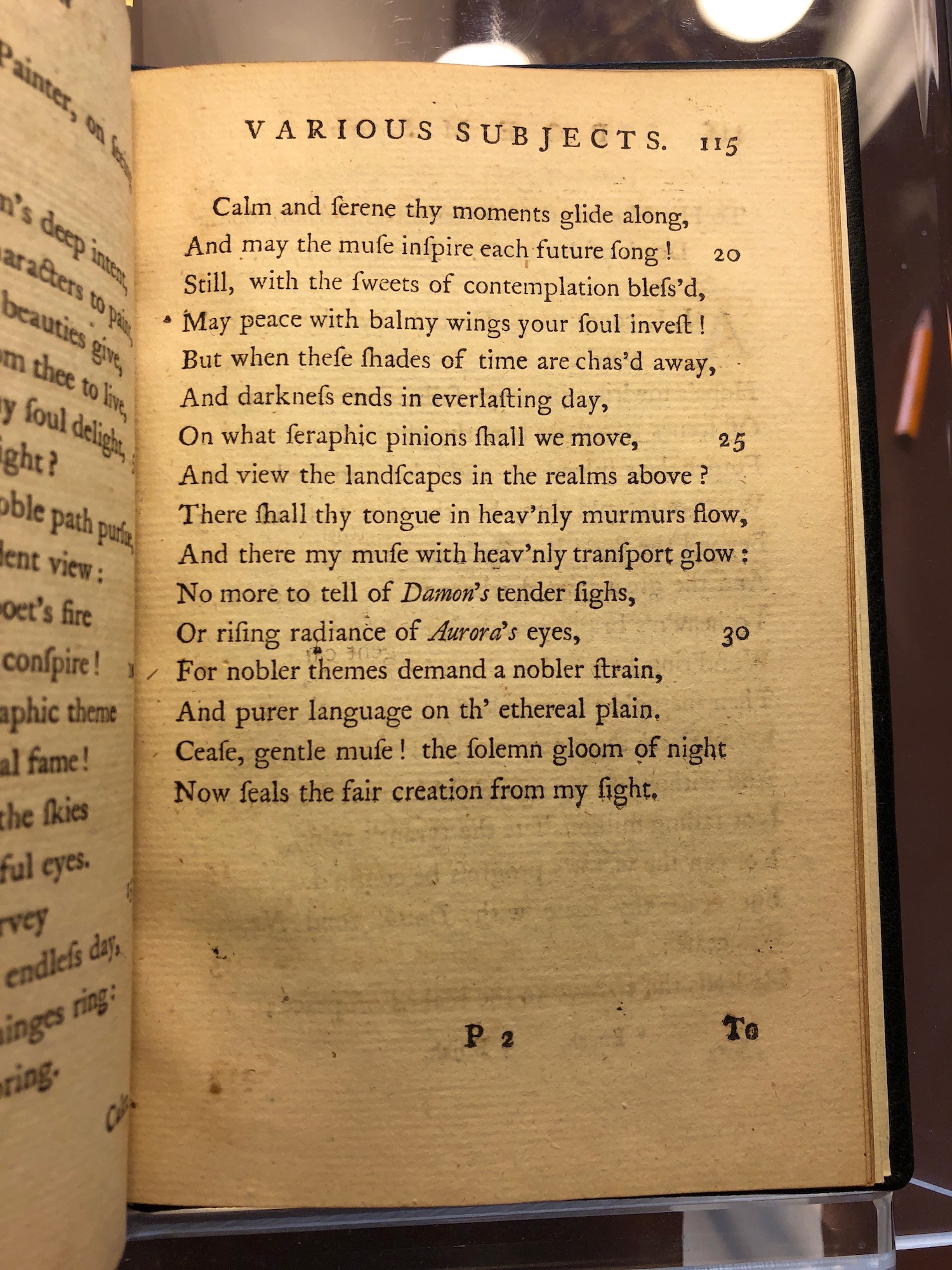
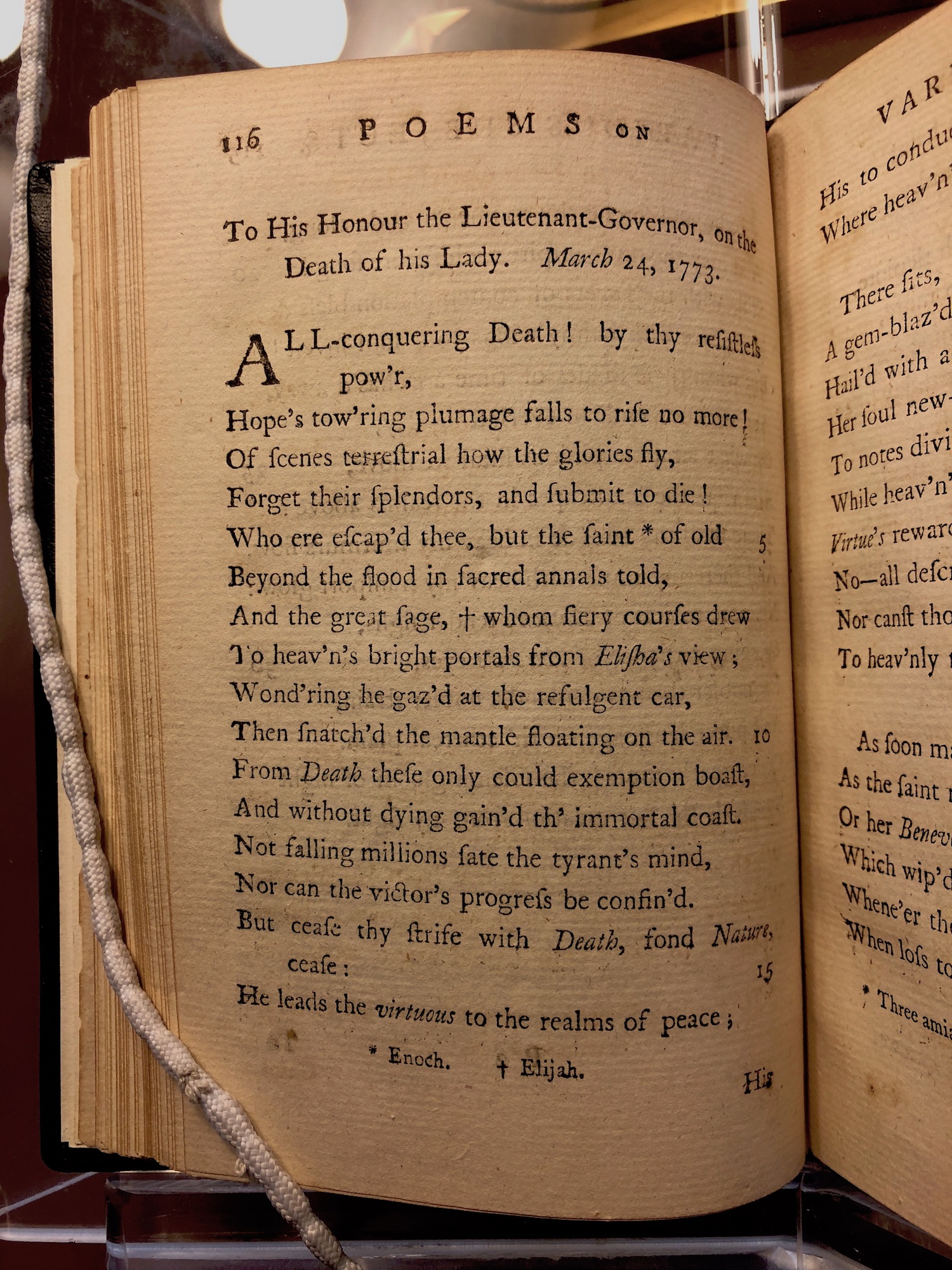

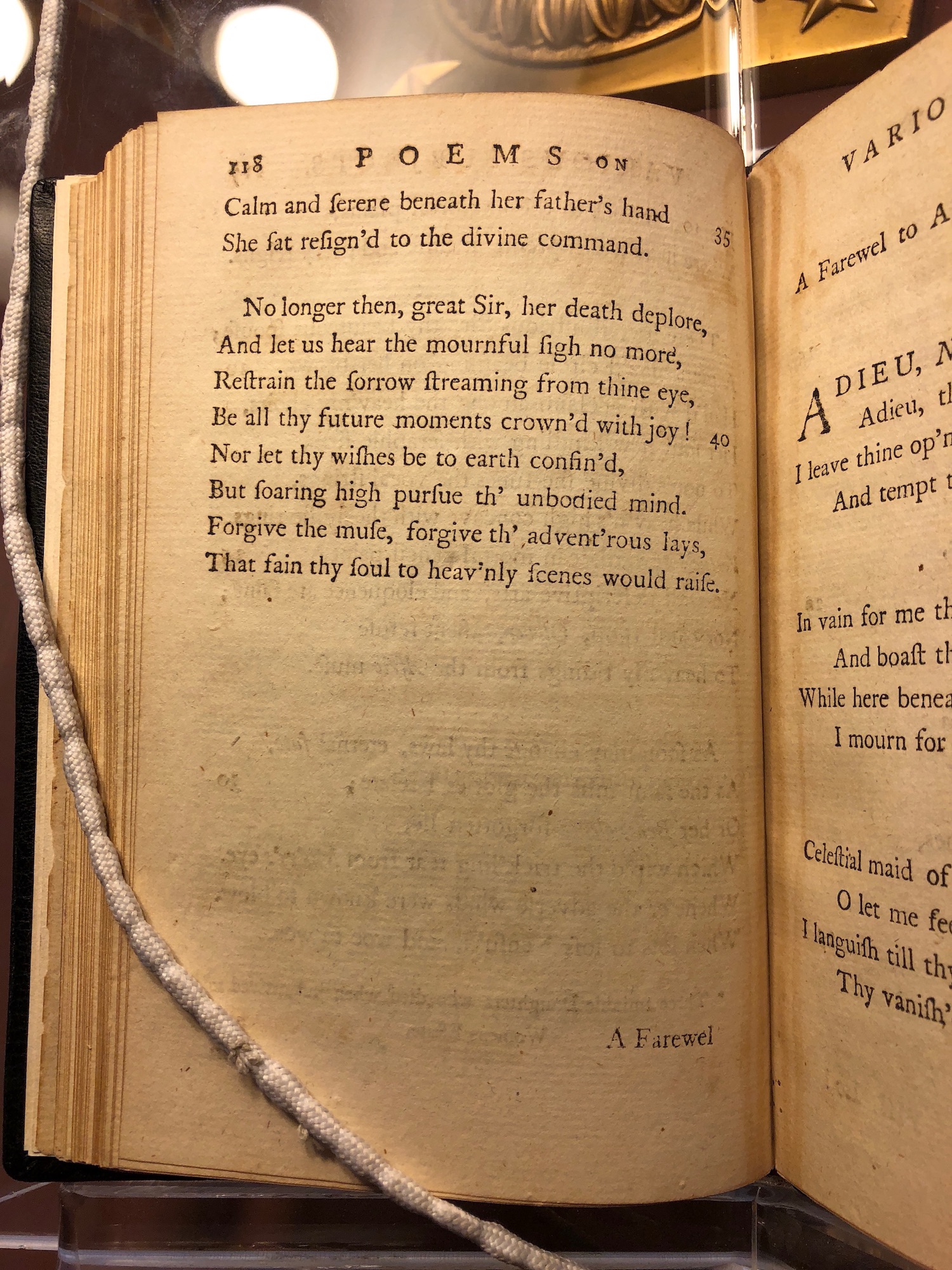


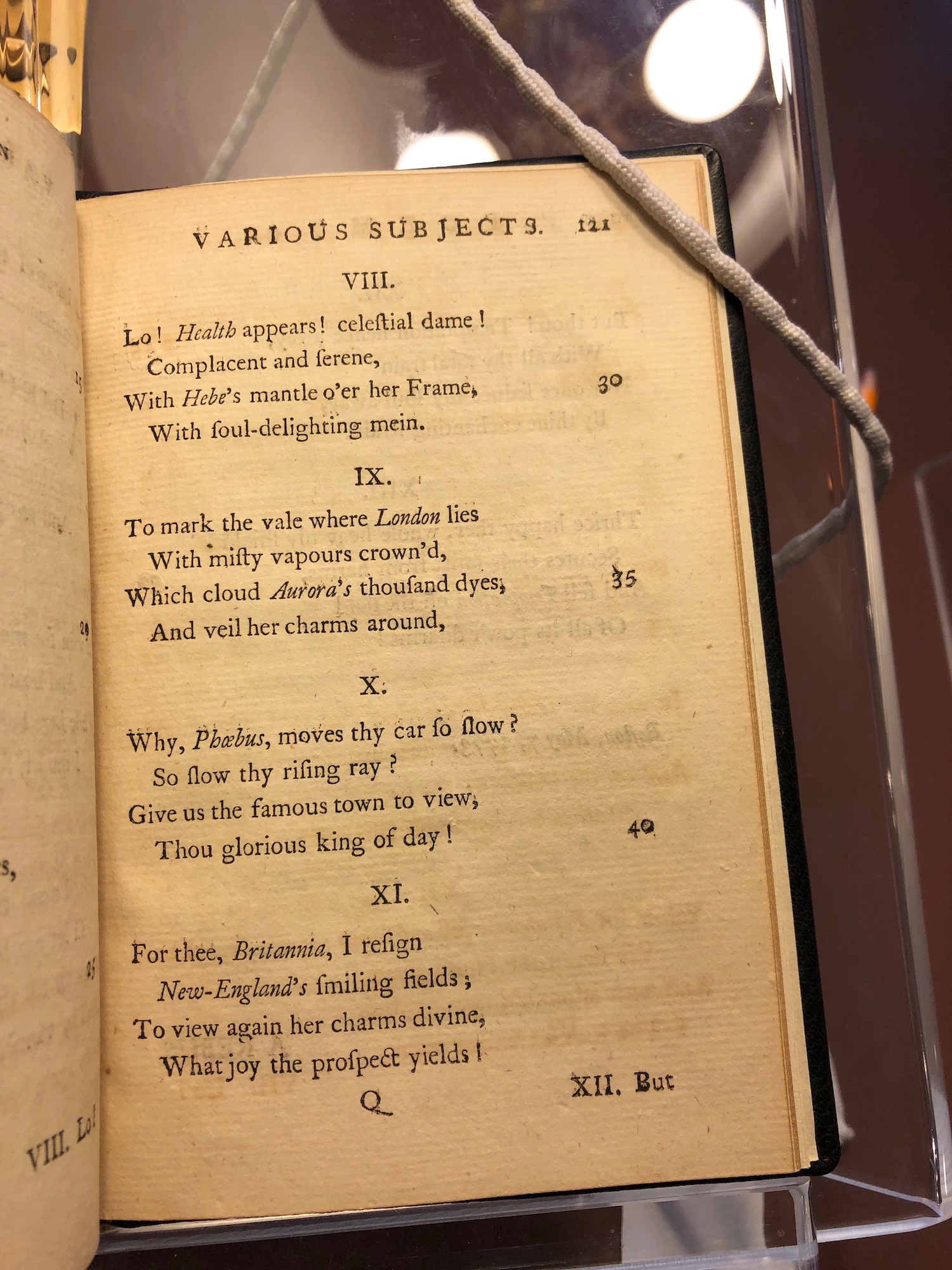

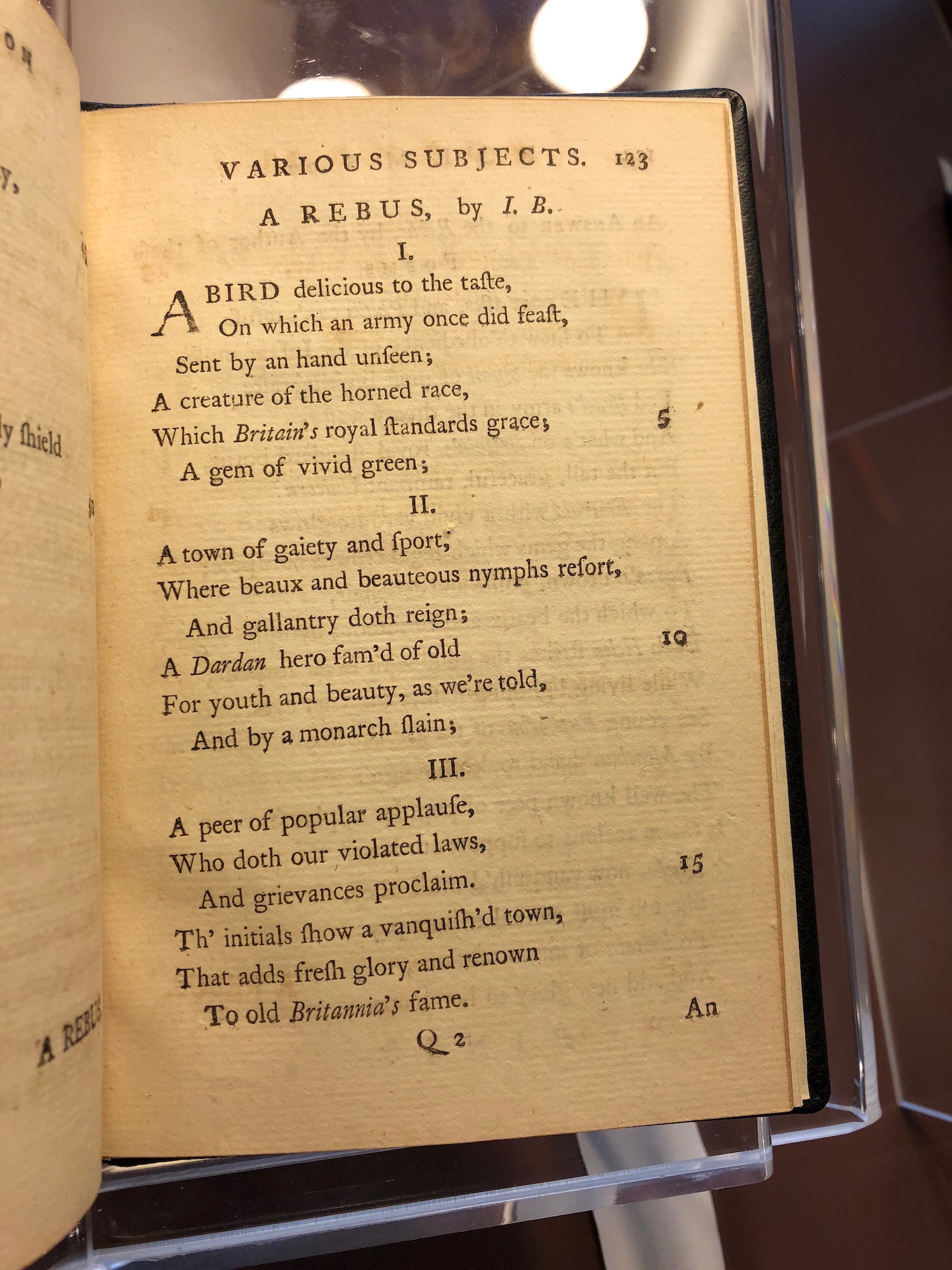
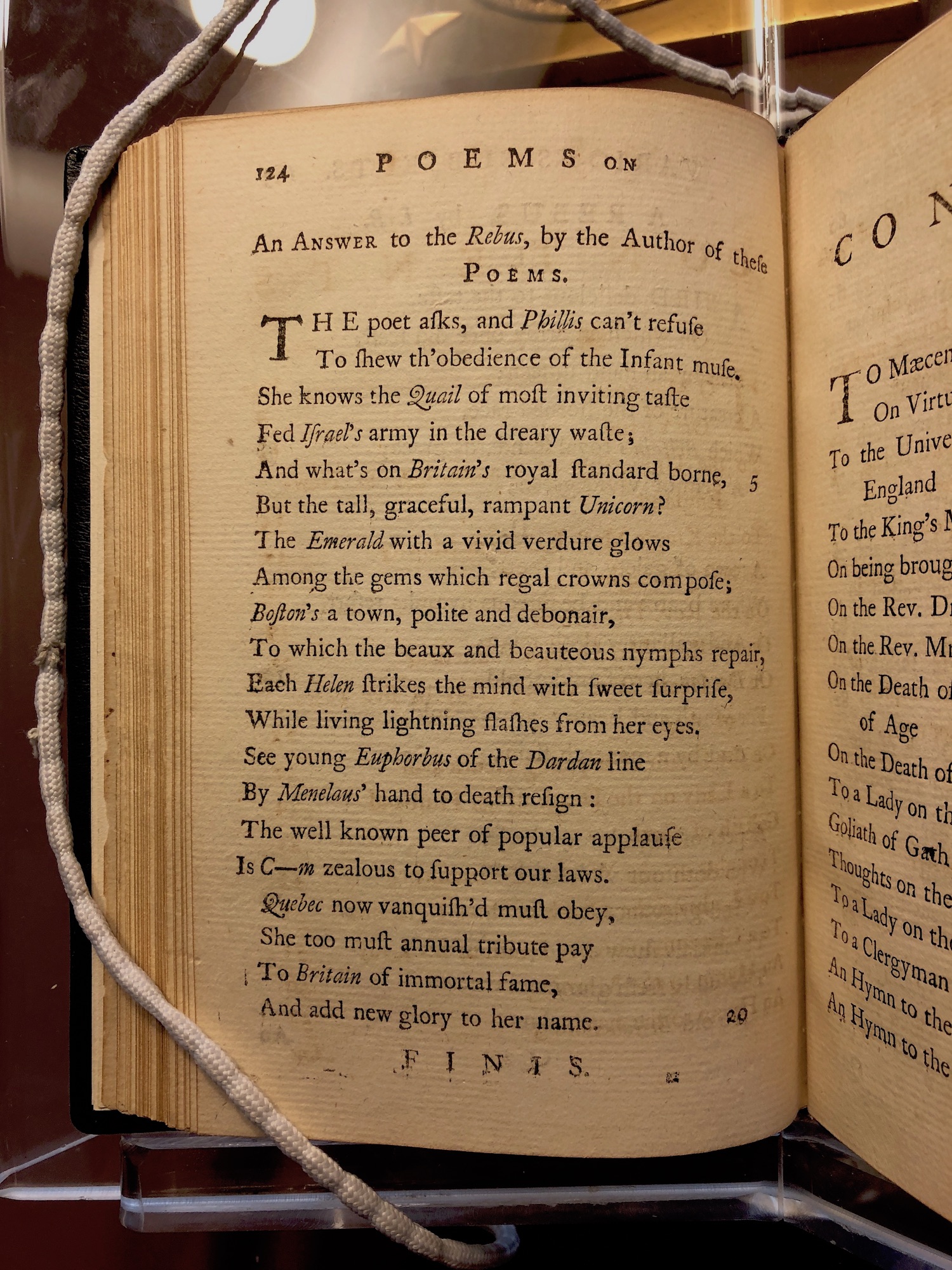
![Page [125]](https://anthologyassetsdev.lib.virginia.edu/wheatley-poems/images/WP-0125.jpg)
![Page [126]](https://anthologyassetsdev.lib.virginia.edu/wheatley-poems/images/WP-0126.jpg)
![Page [127]](https://anthologyassetsdev.lib.virginia.edu/wheatley-poems/images/WP-0127.jpg)